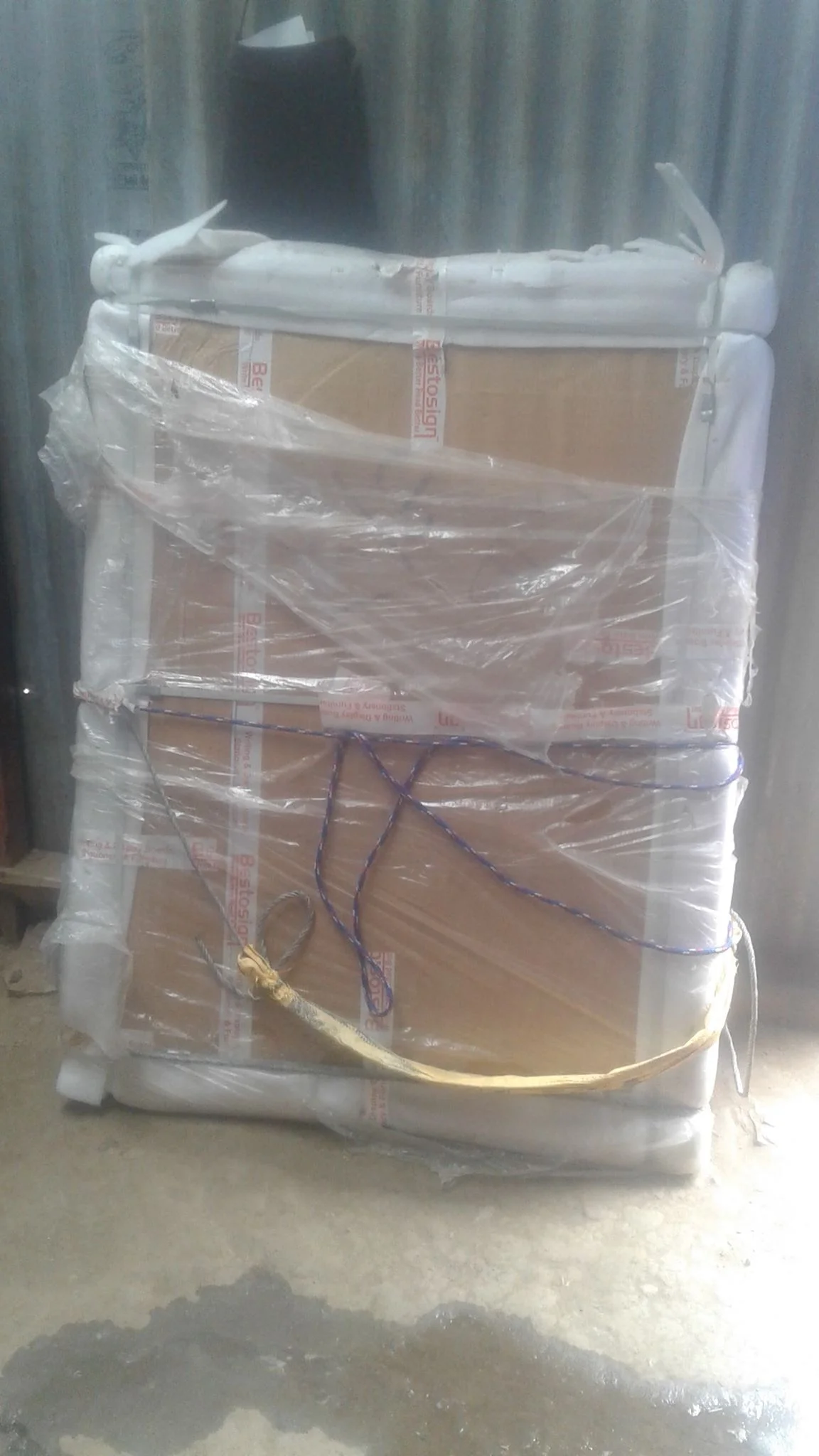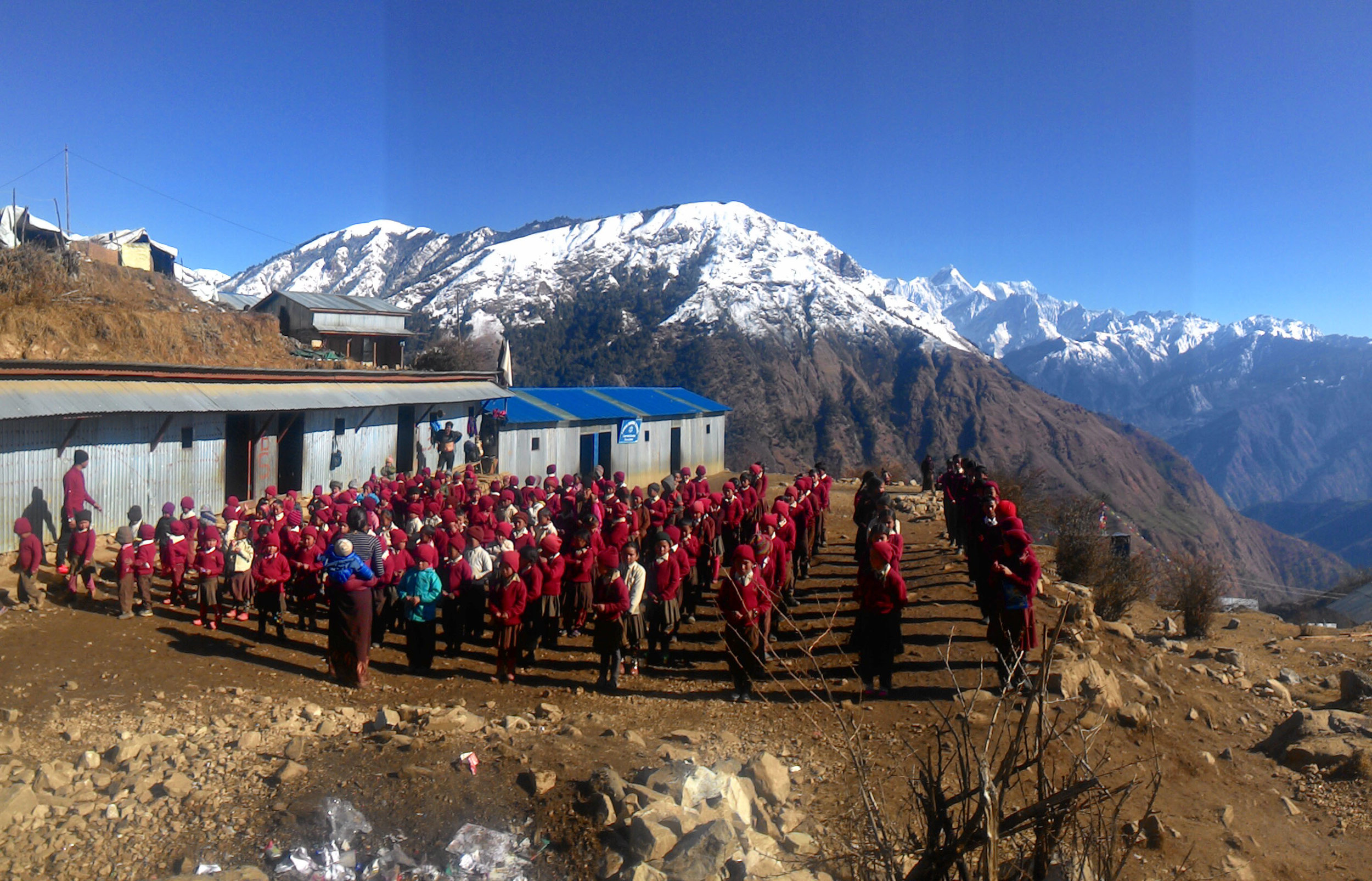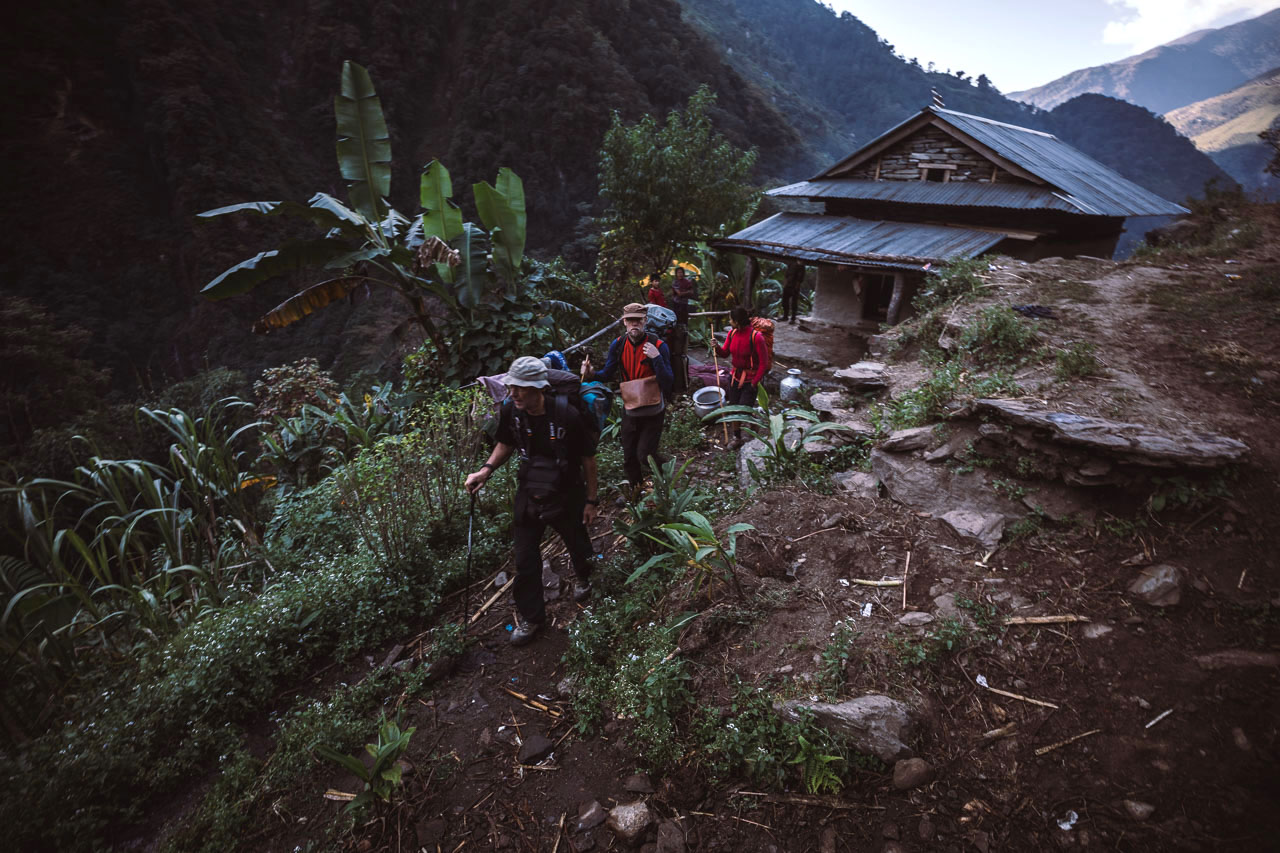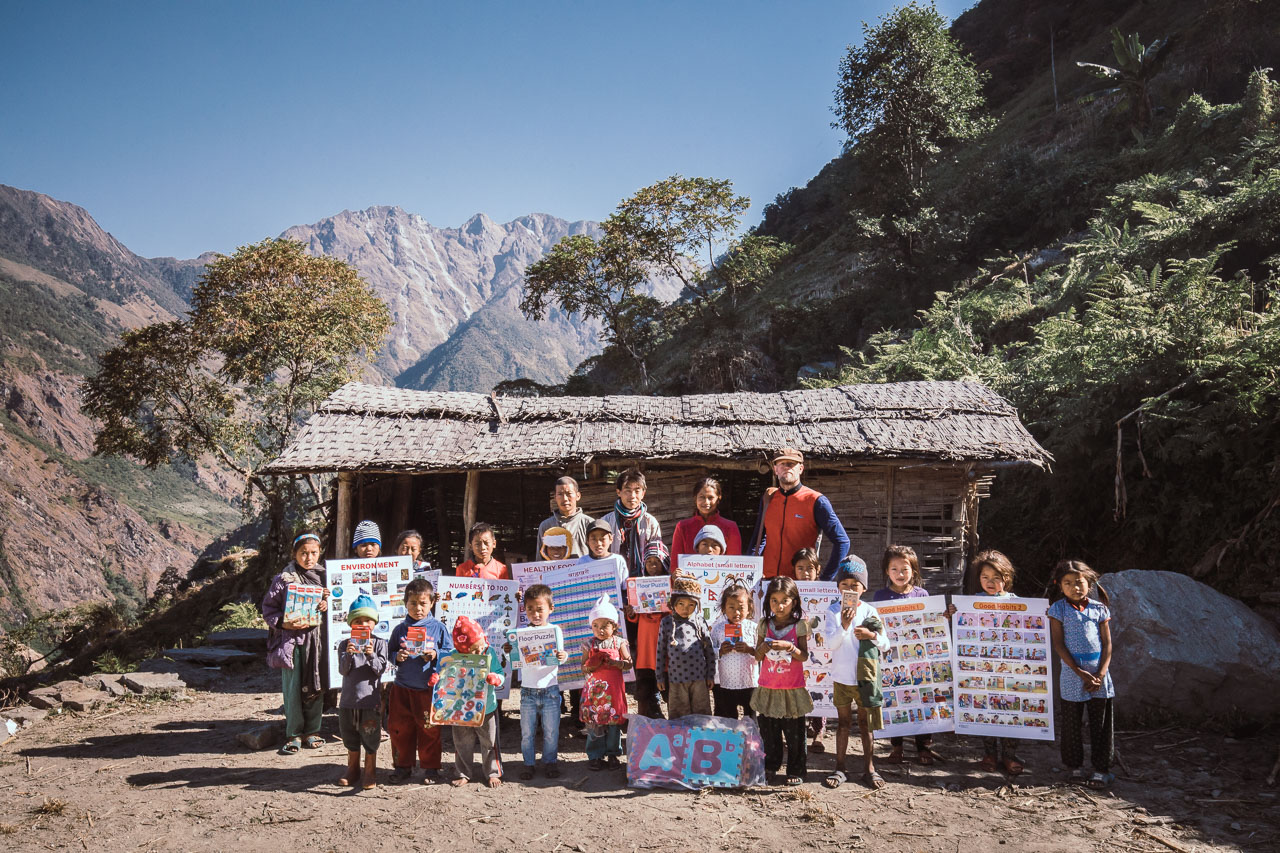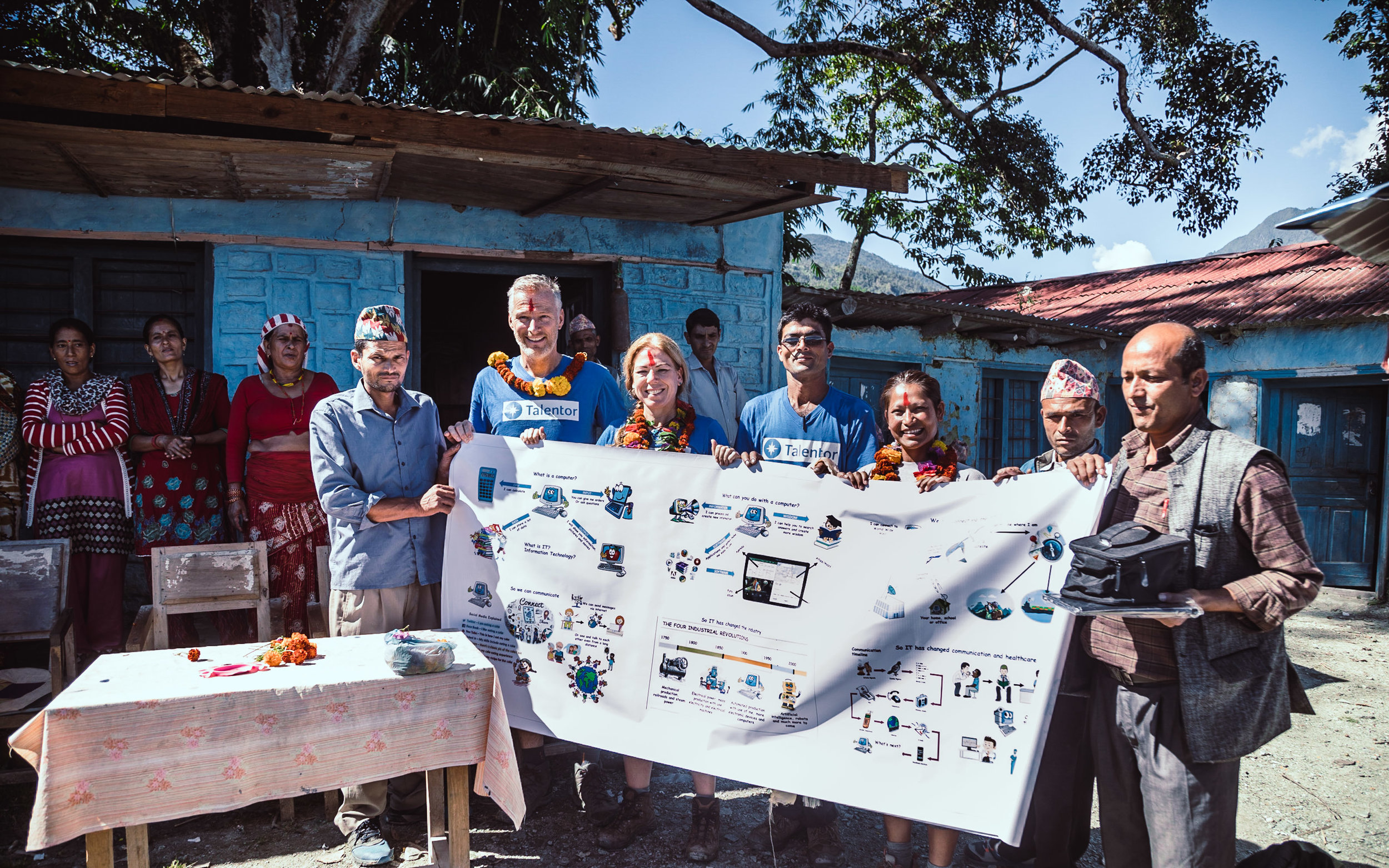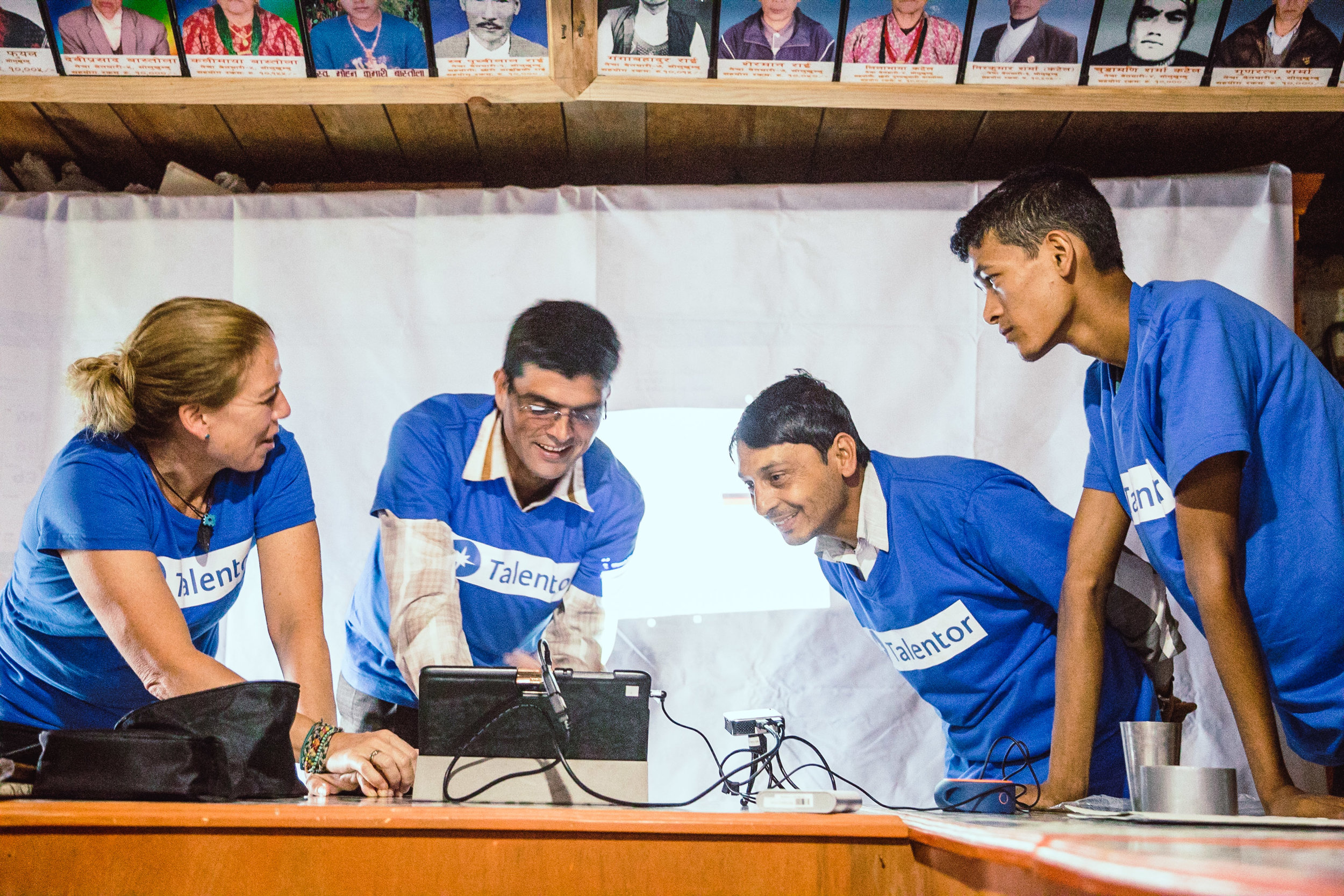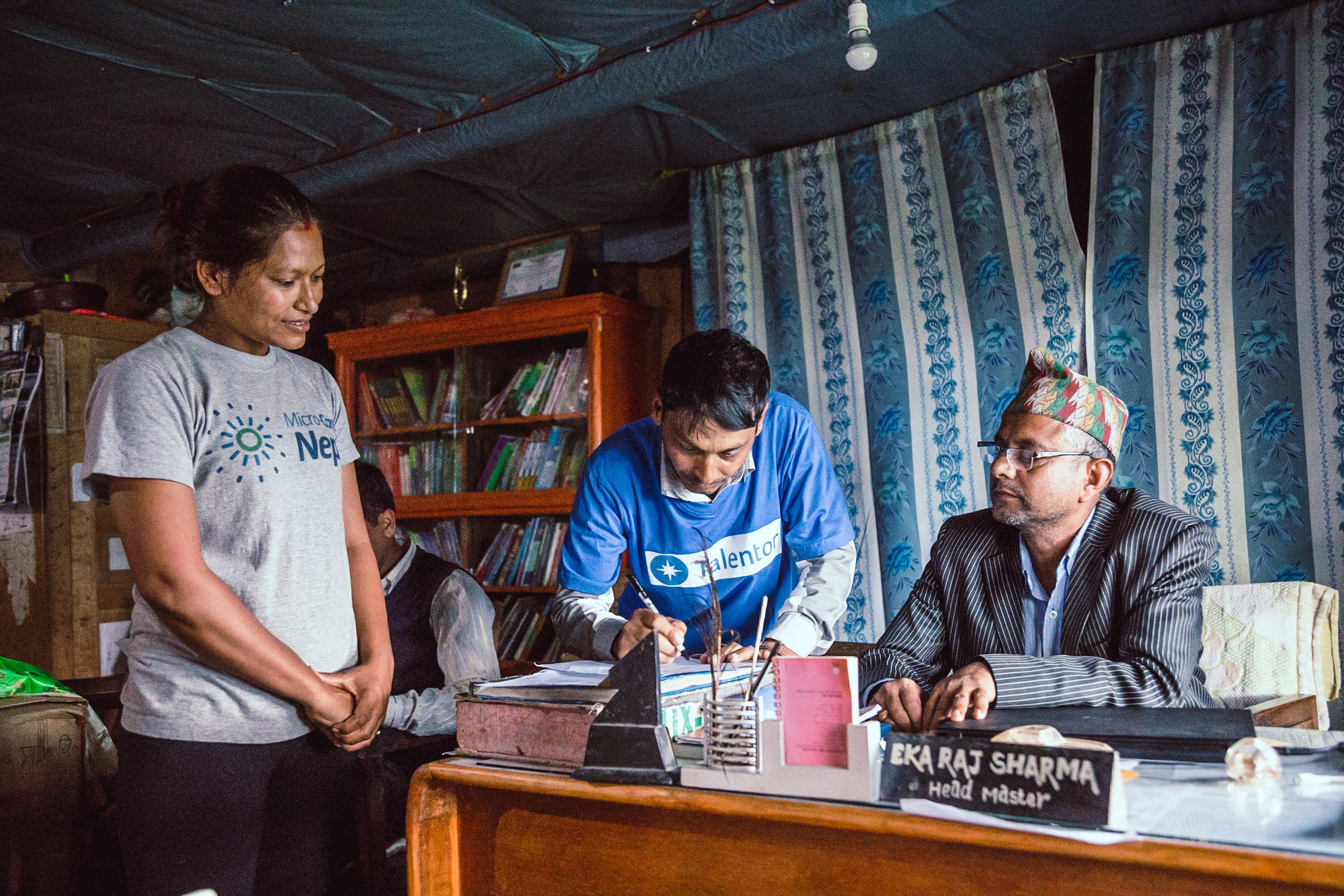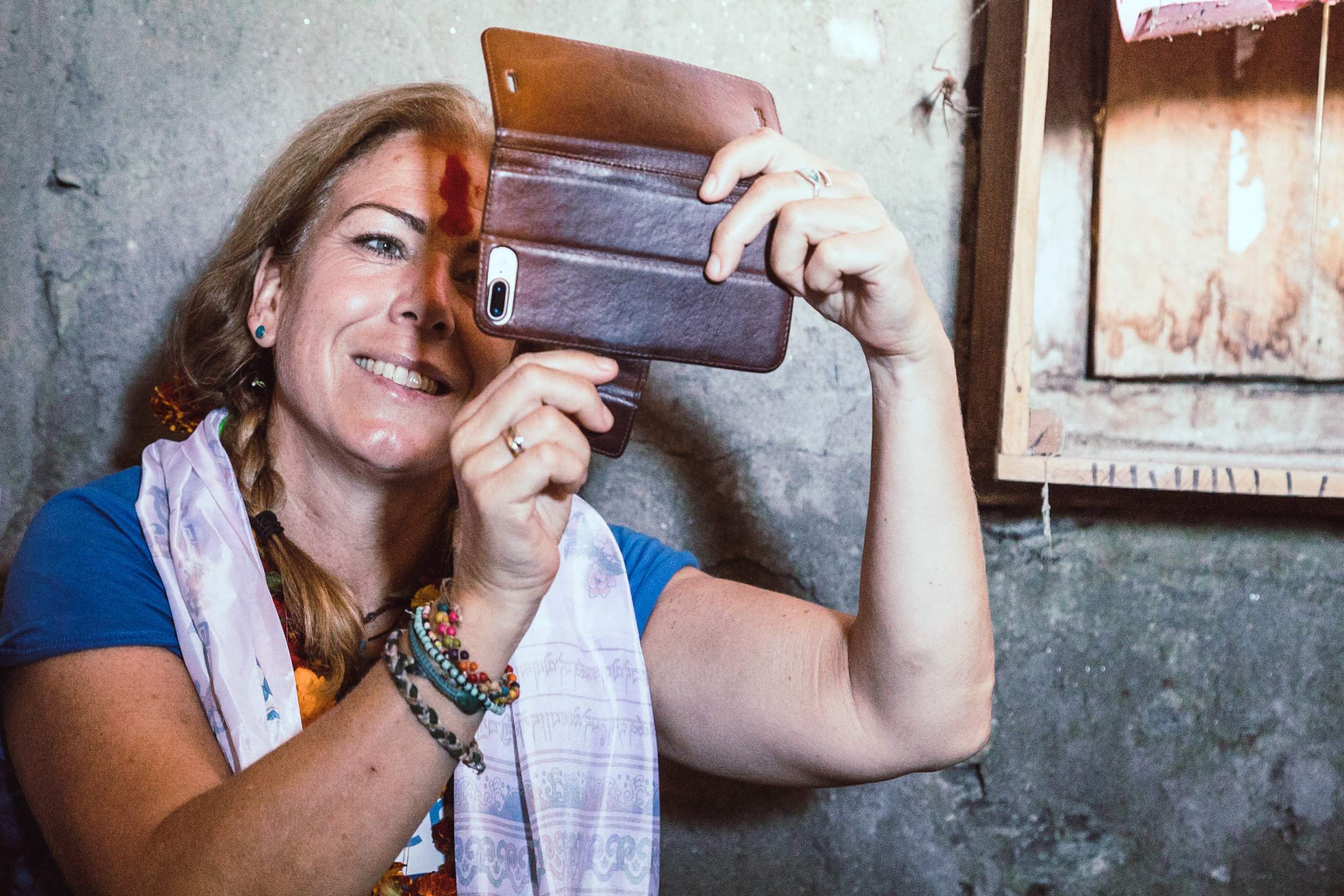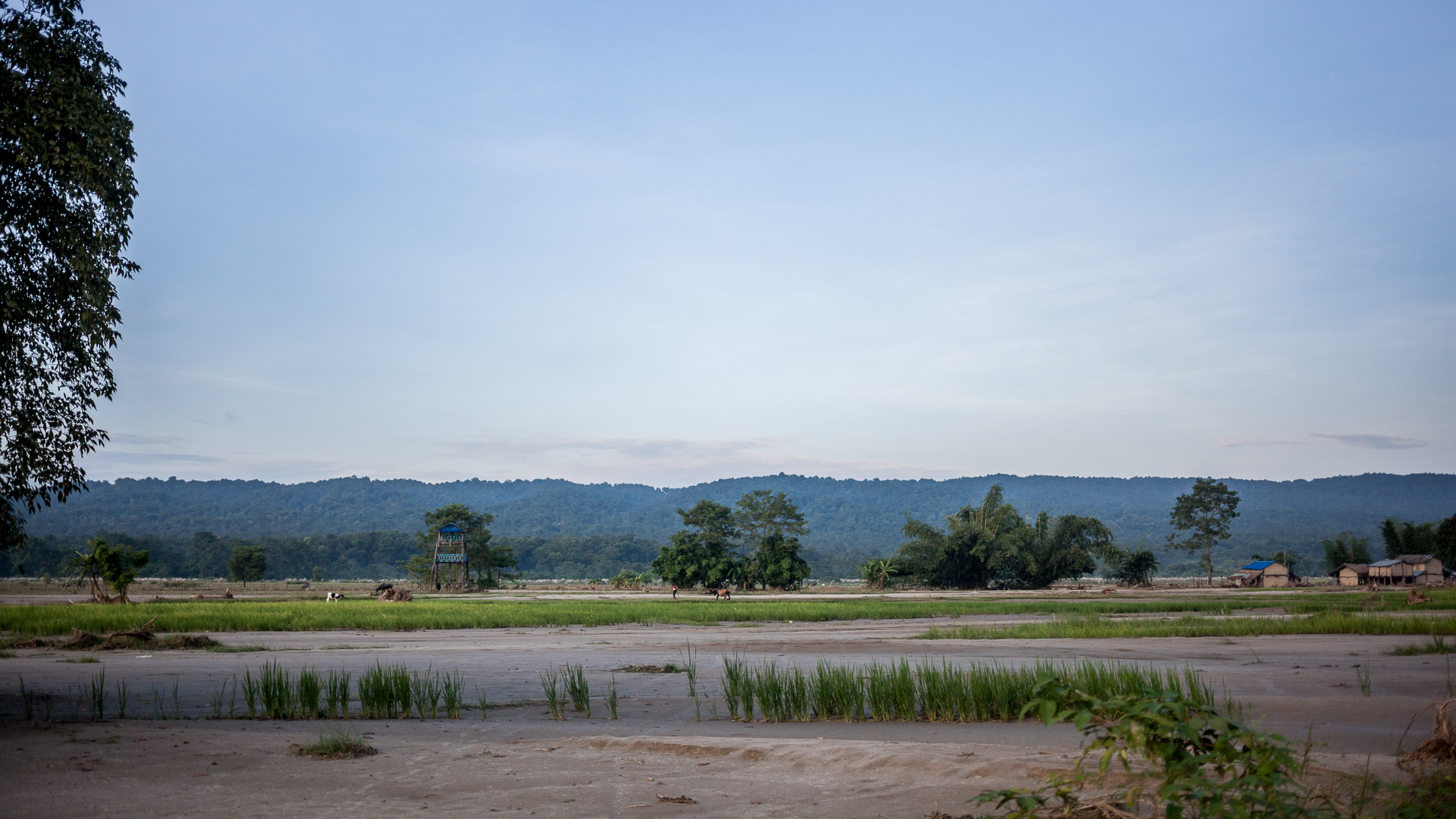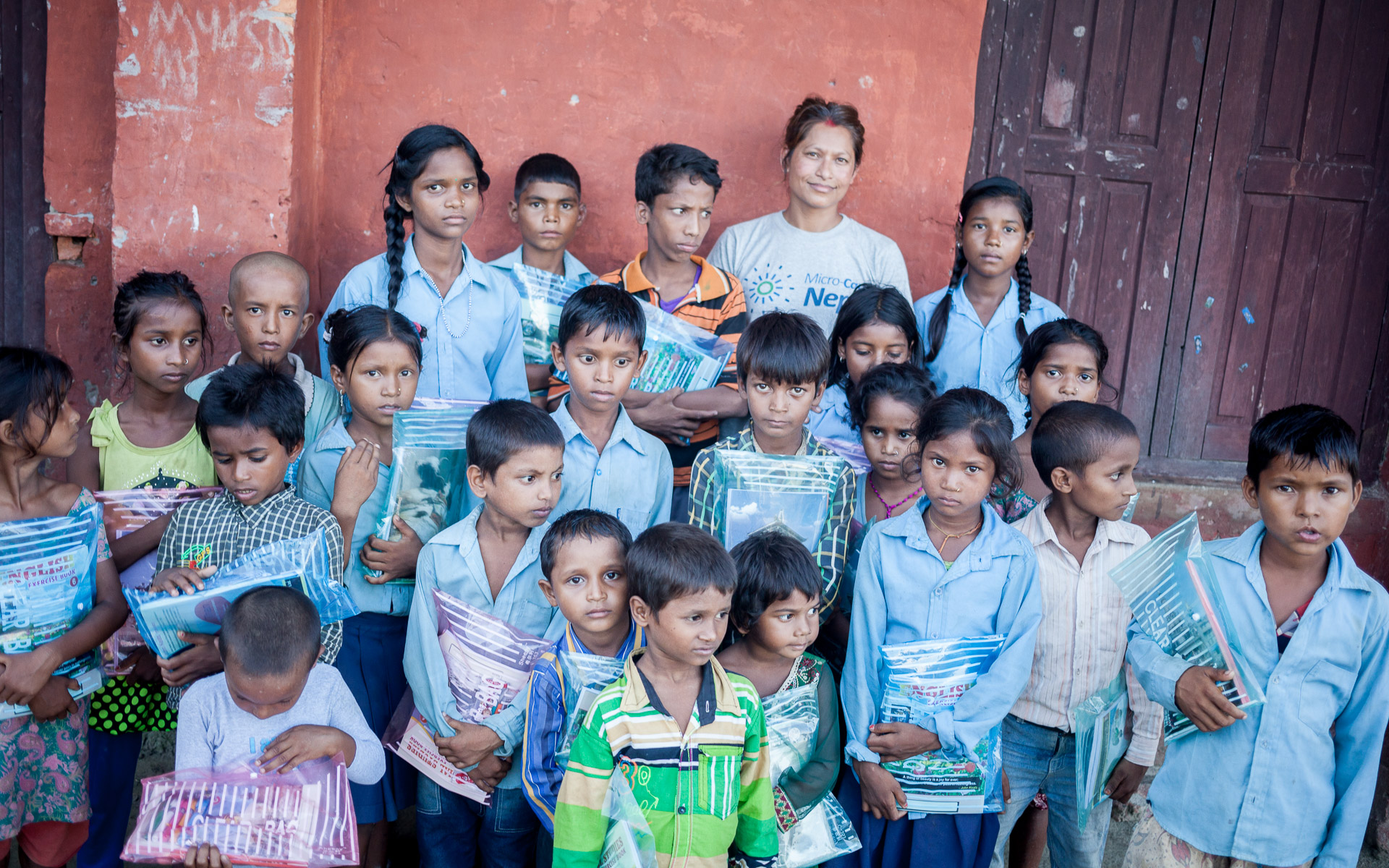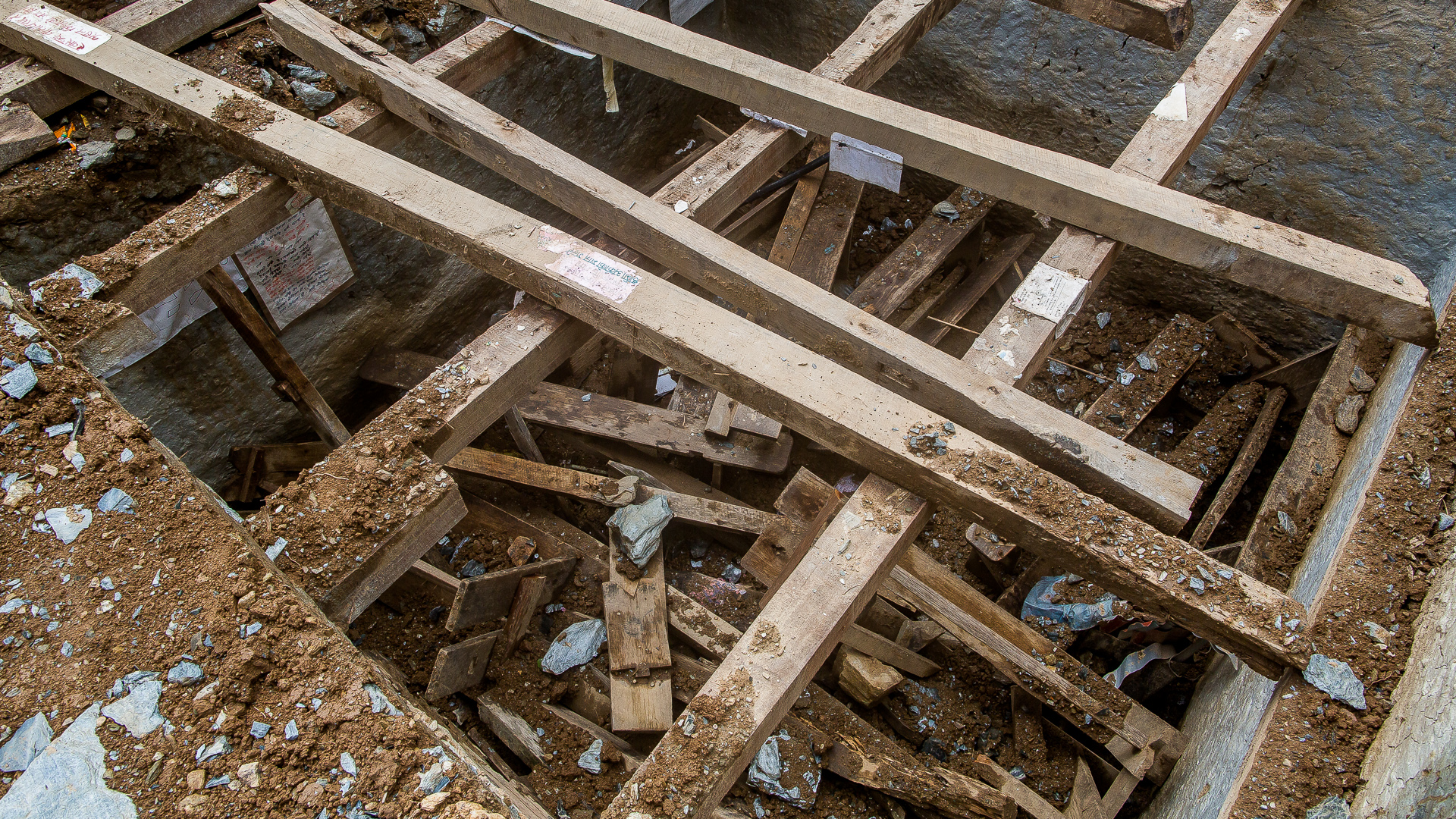Na het bezoek aan Nepal begin 2019 op de kalender te hebben gezet was het nu eindelijk zo ver. Thijs en Nanco hebben Micro-Care Nepal al vanaf de oprichting begin 2016 jaarlijks financieel gesteund. Nu hadden zij eindelijk de mogelijkheid de projecten te bezoek en zelf ook een praktische bijdrage te leveren.
First-Aid Classes + Support with Education material to Gorkha Shools
December, 2019
Aid Trip to Gorkha district with 3 volunteers and our board member Wilfried van den Boorn.
Two student to become doctor, Georgina and Anna, have been teaching First-Aid classes on 4 schools from class 5 to 8. Volunteer Sabine has been teaching a new class about entrepreneur skills to clkass 7 and 8 and 6 and 7 at in total 4 schools.
We want to thank Sabine, Georgina and Anna for their great work and collaboration on this trip and during the intensive preparations!
Bekijk onderstaand het fotoverslag.
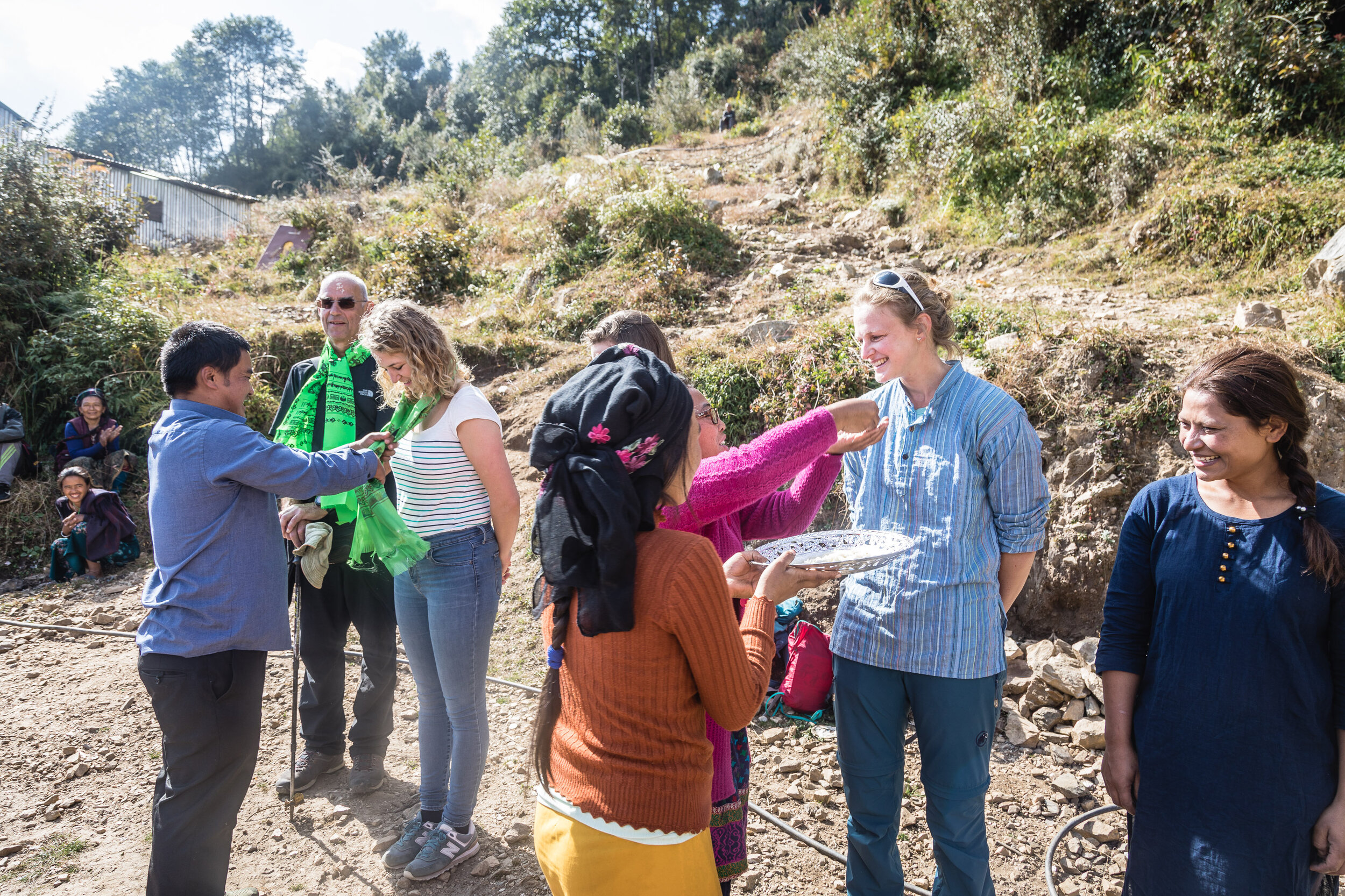
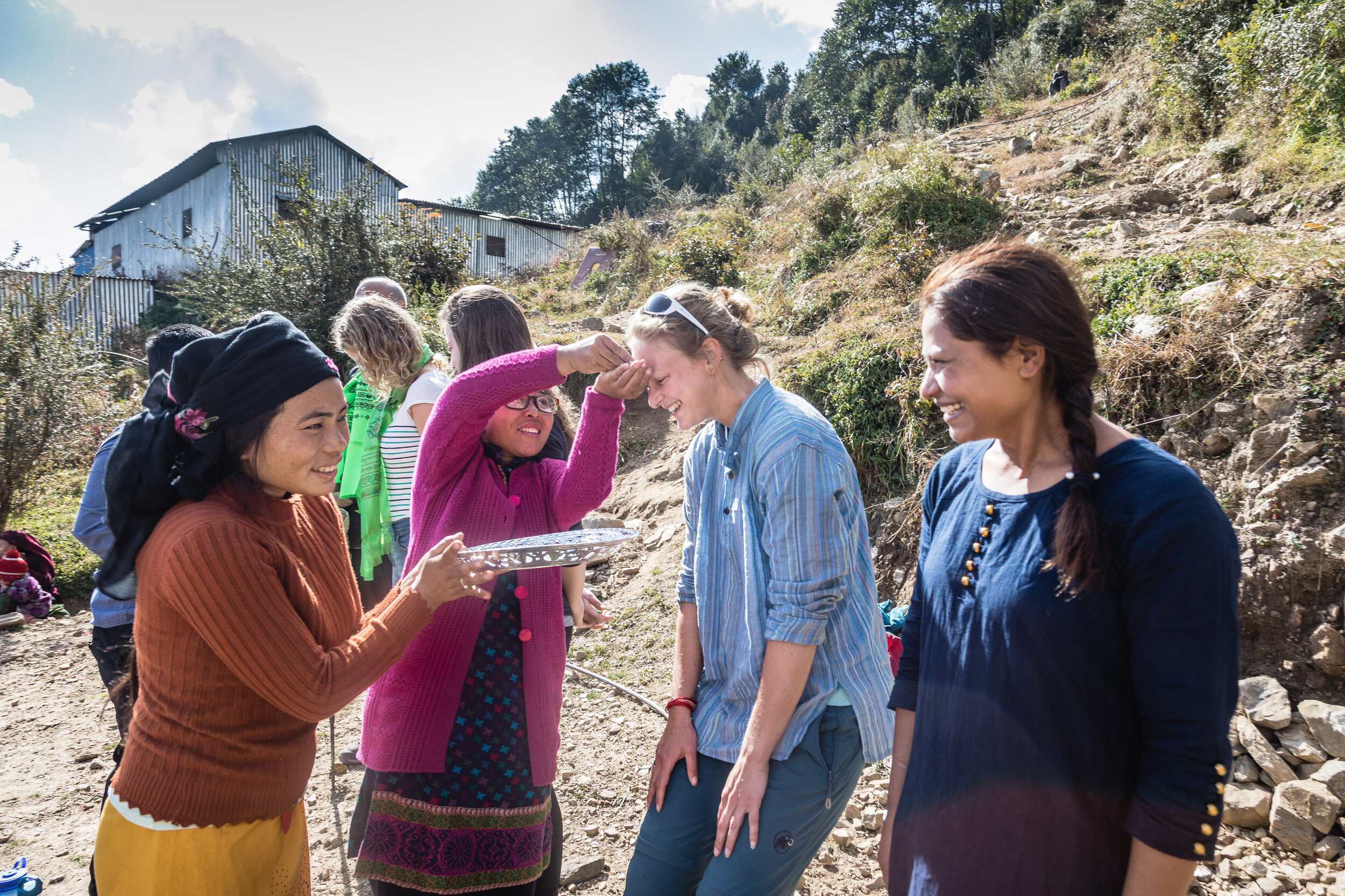

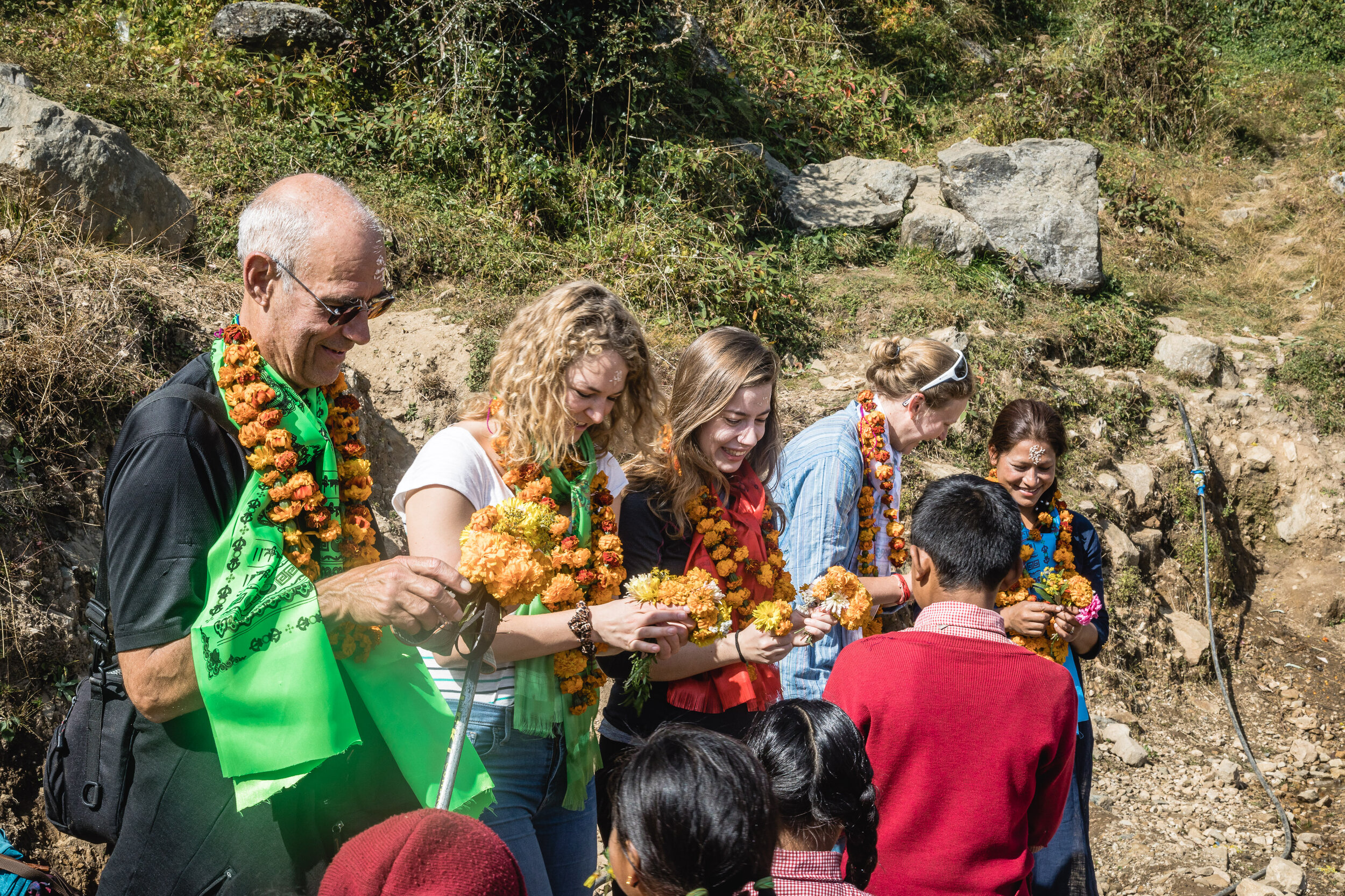

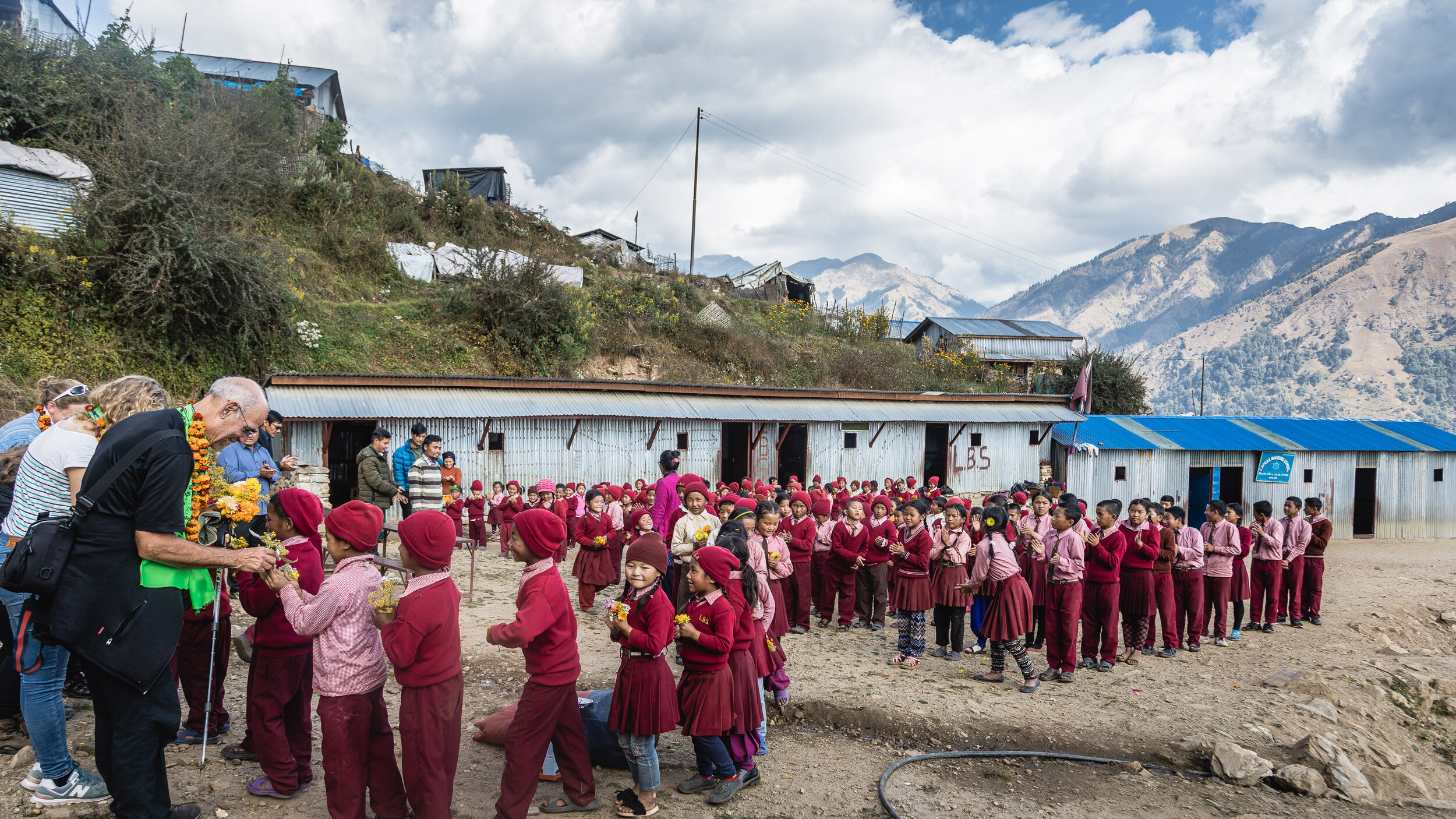

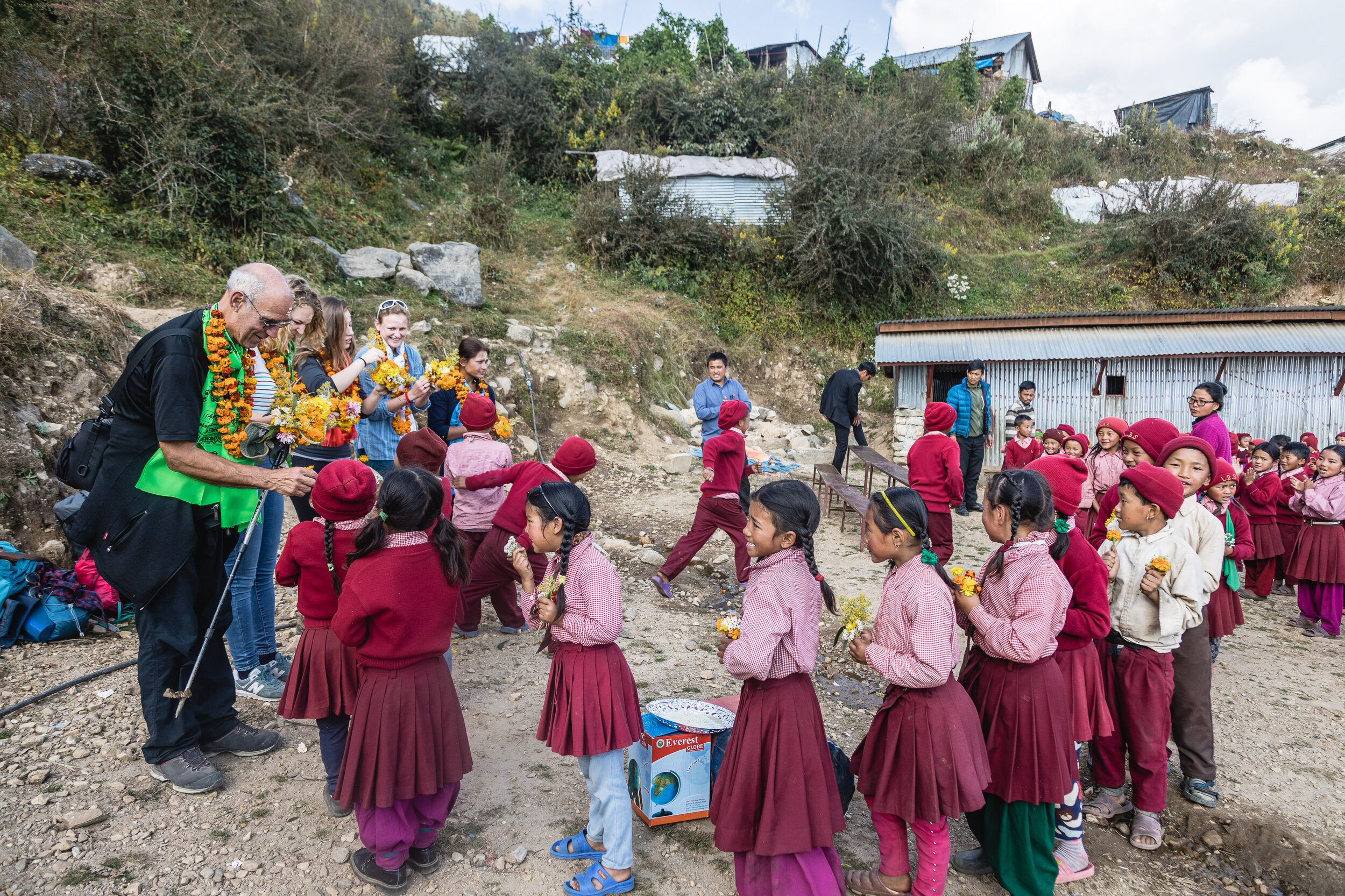

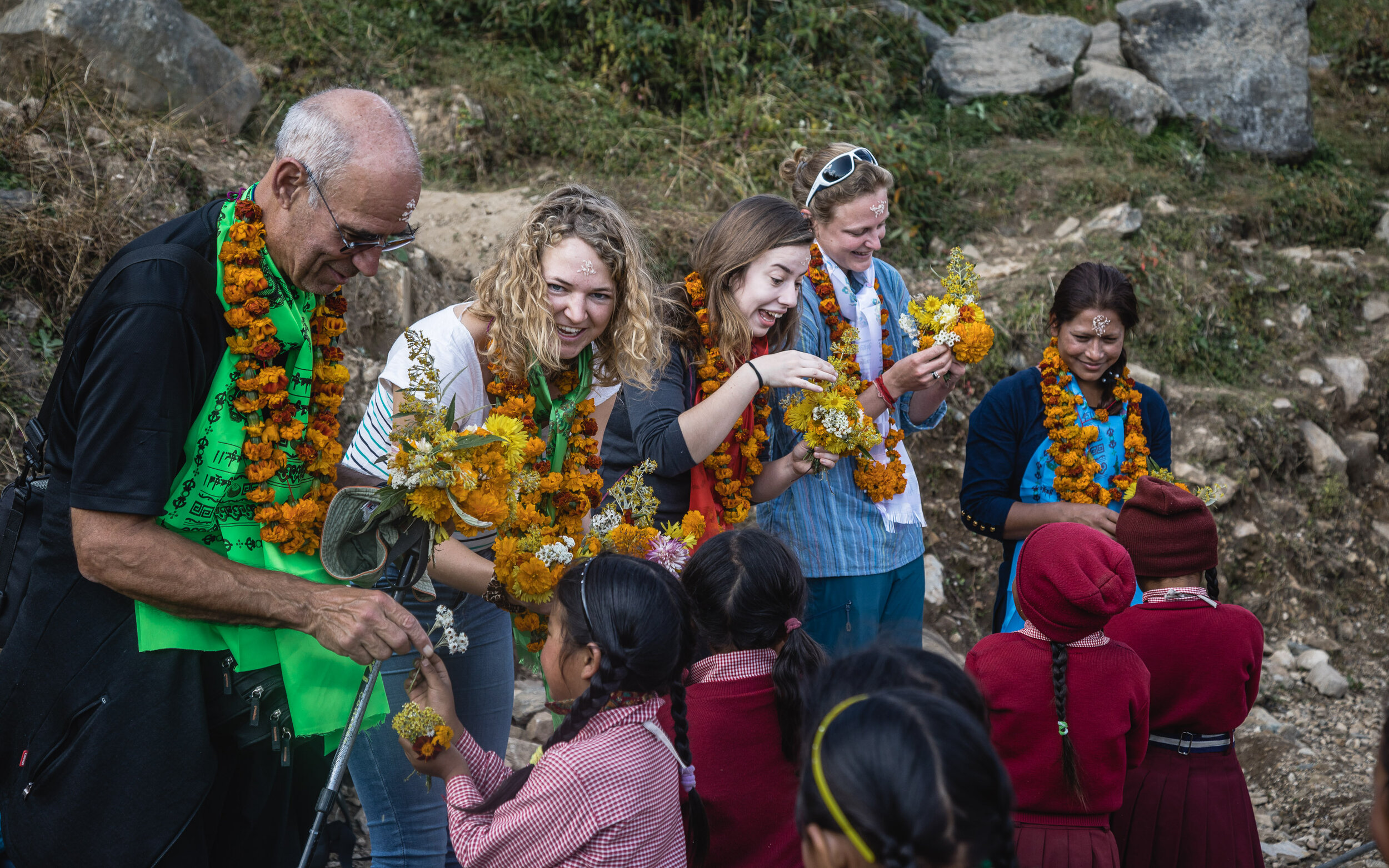
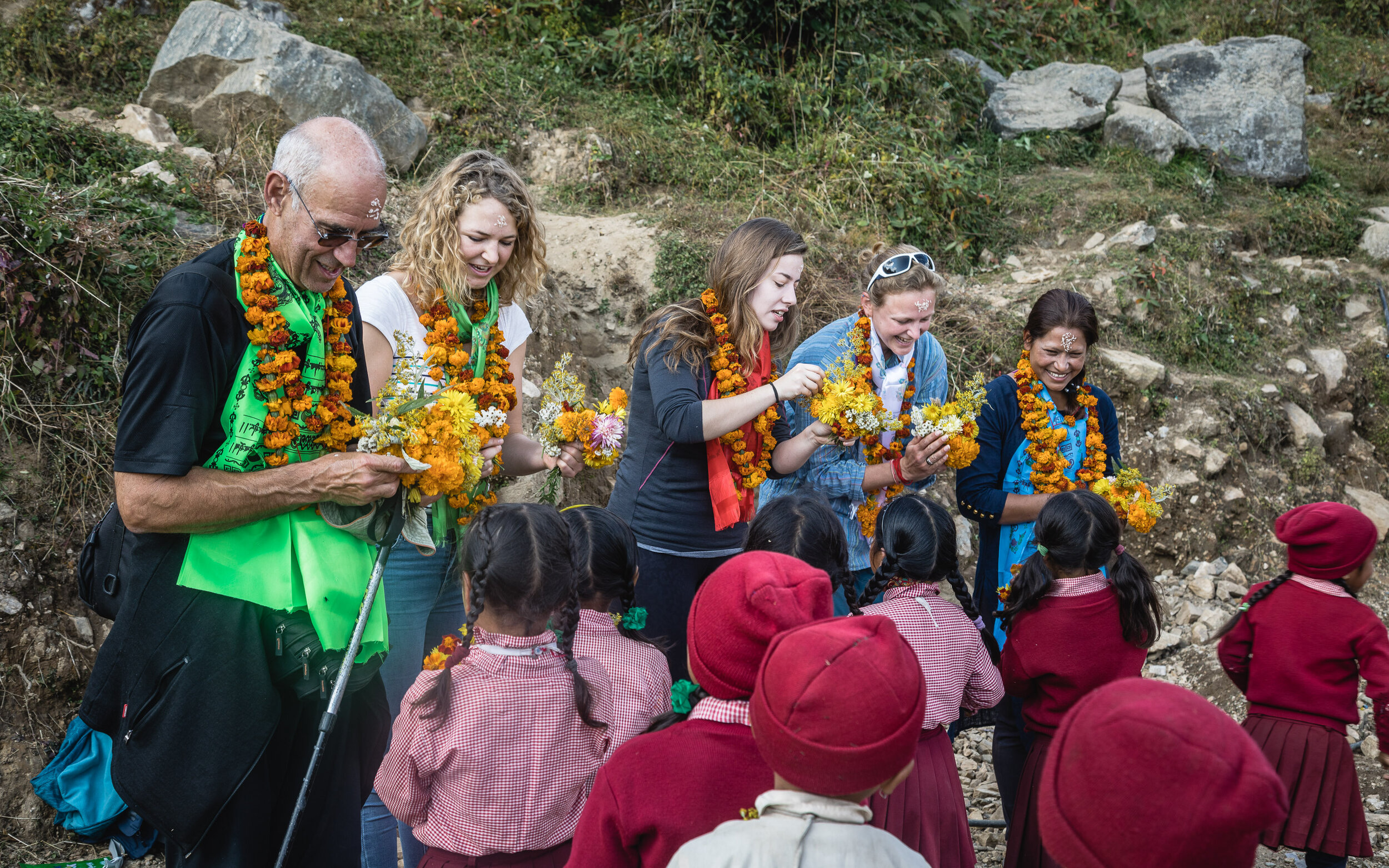

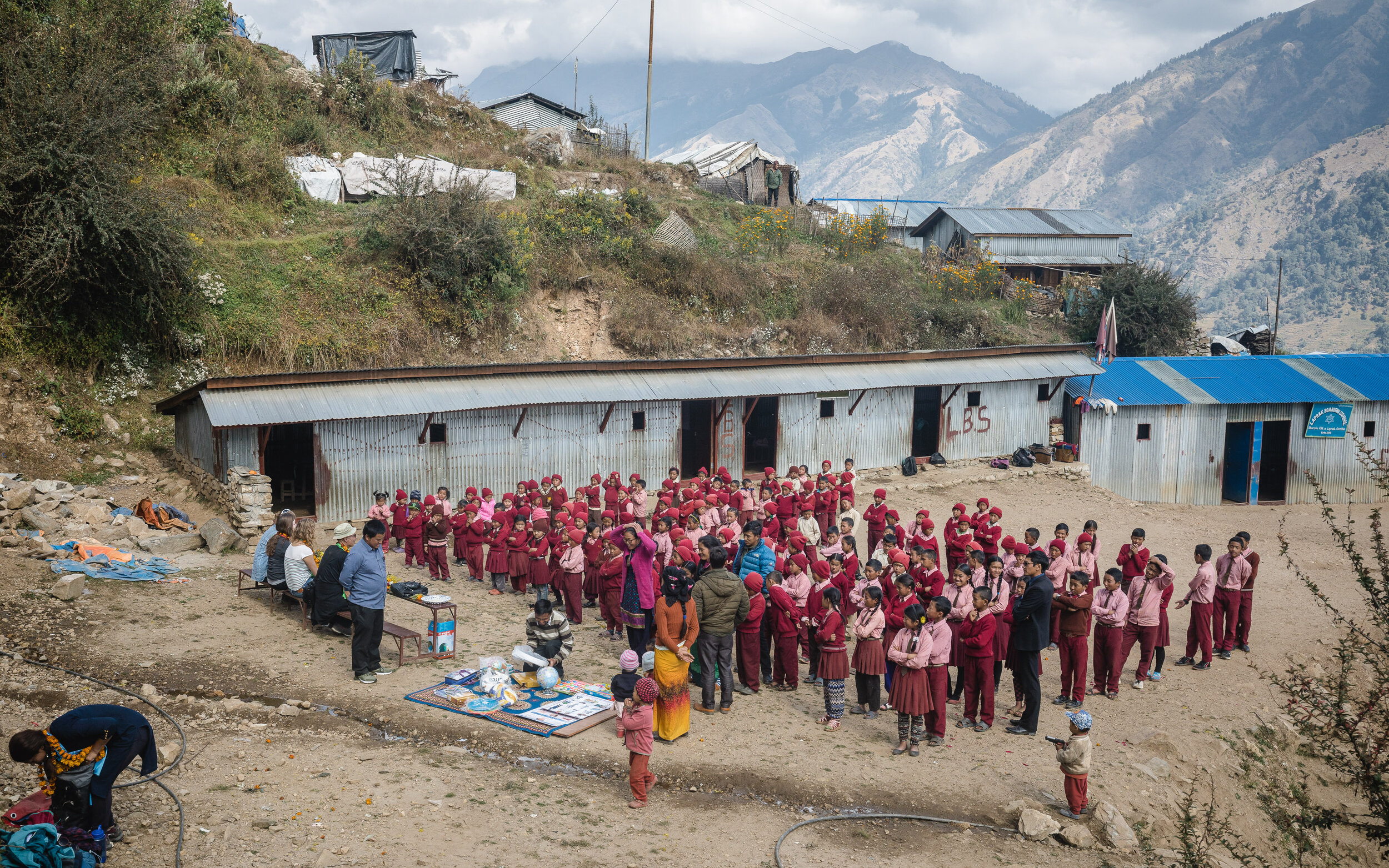


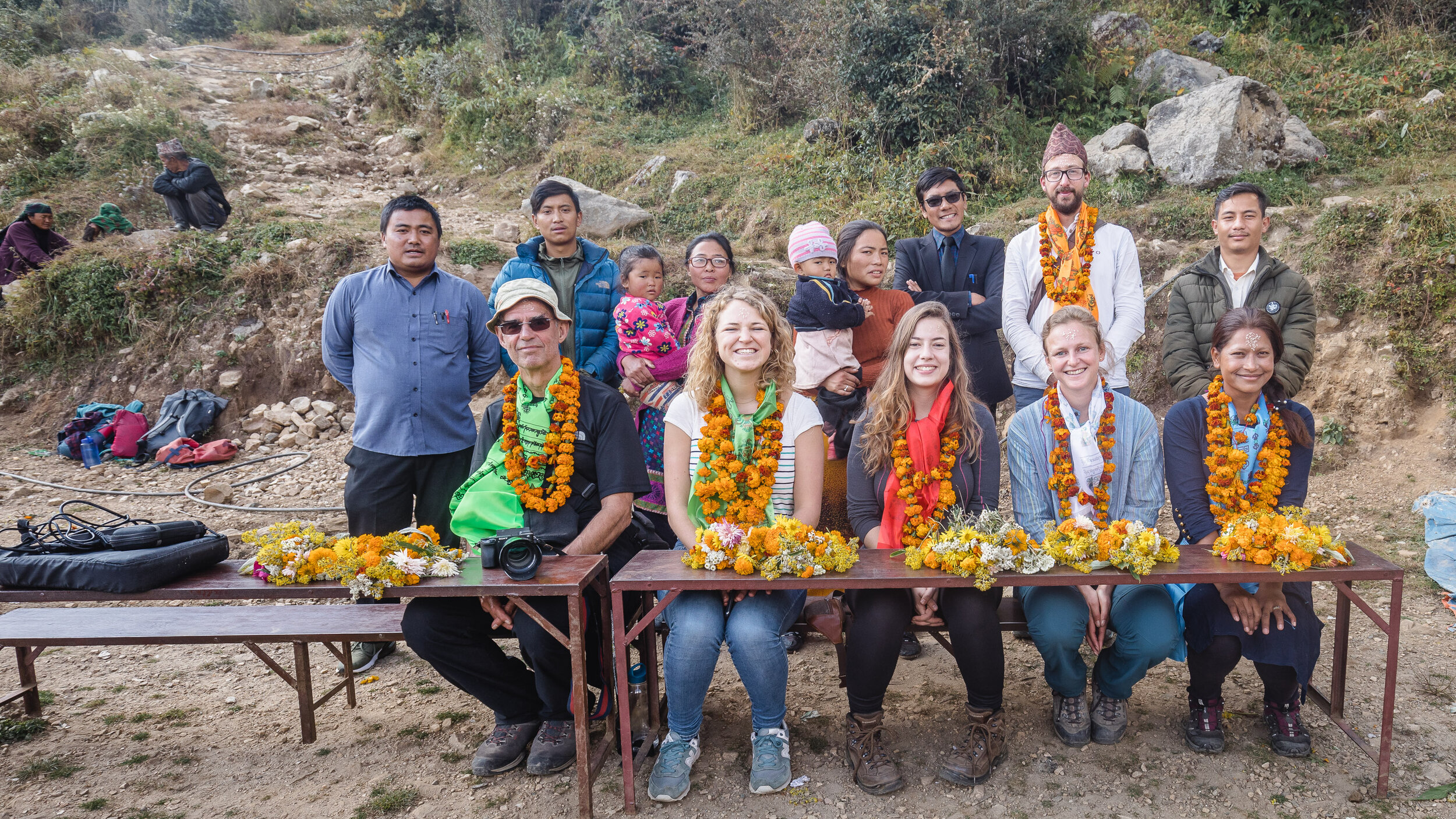




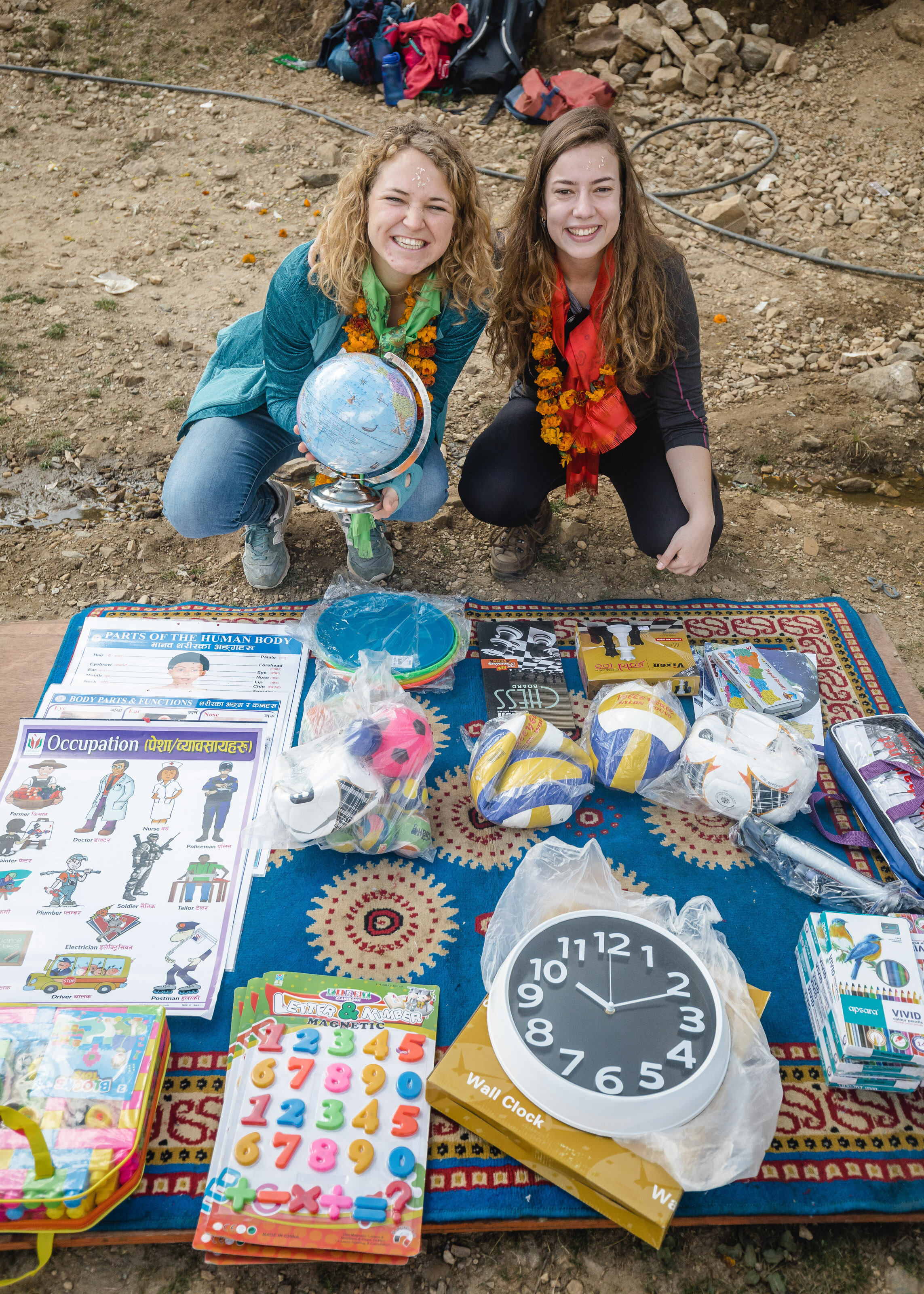


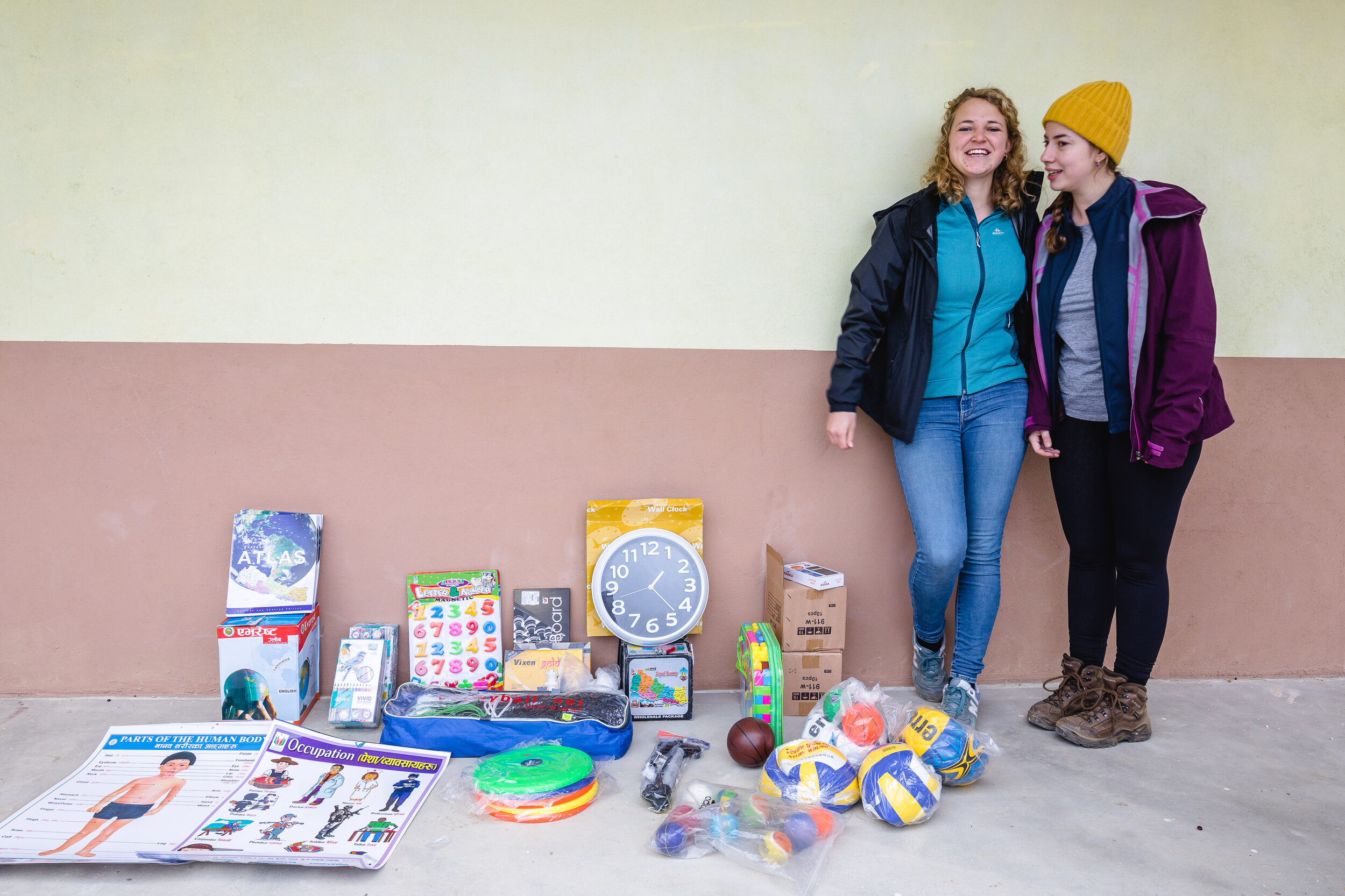
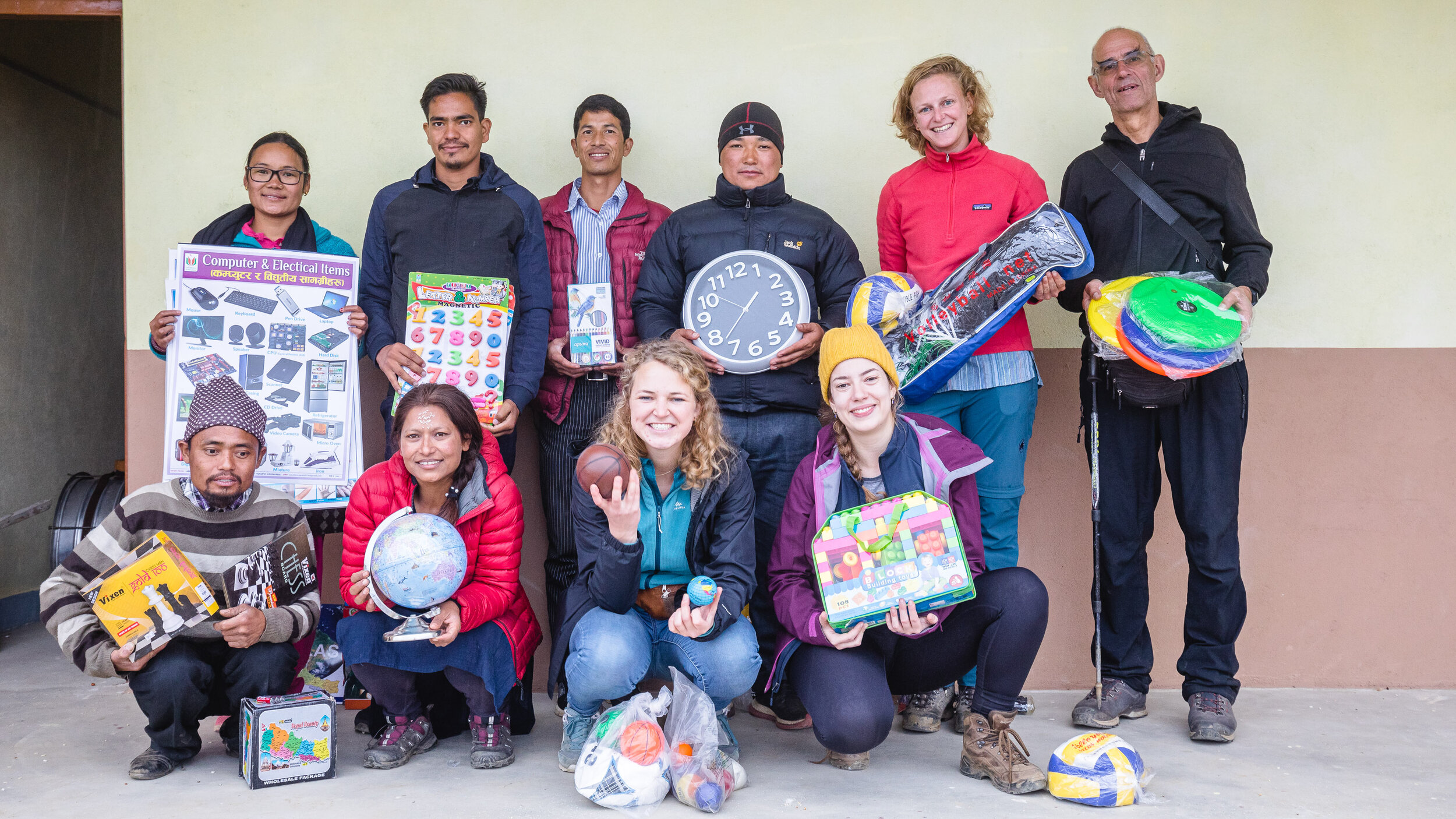
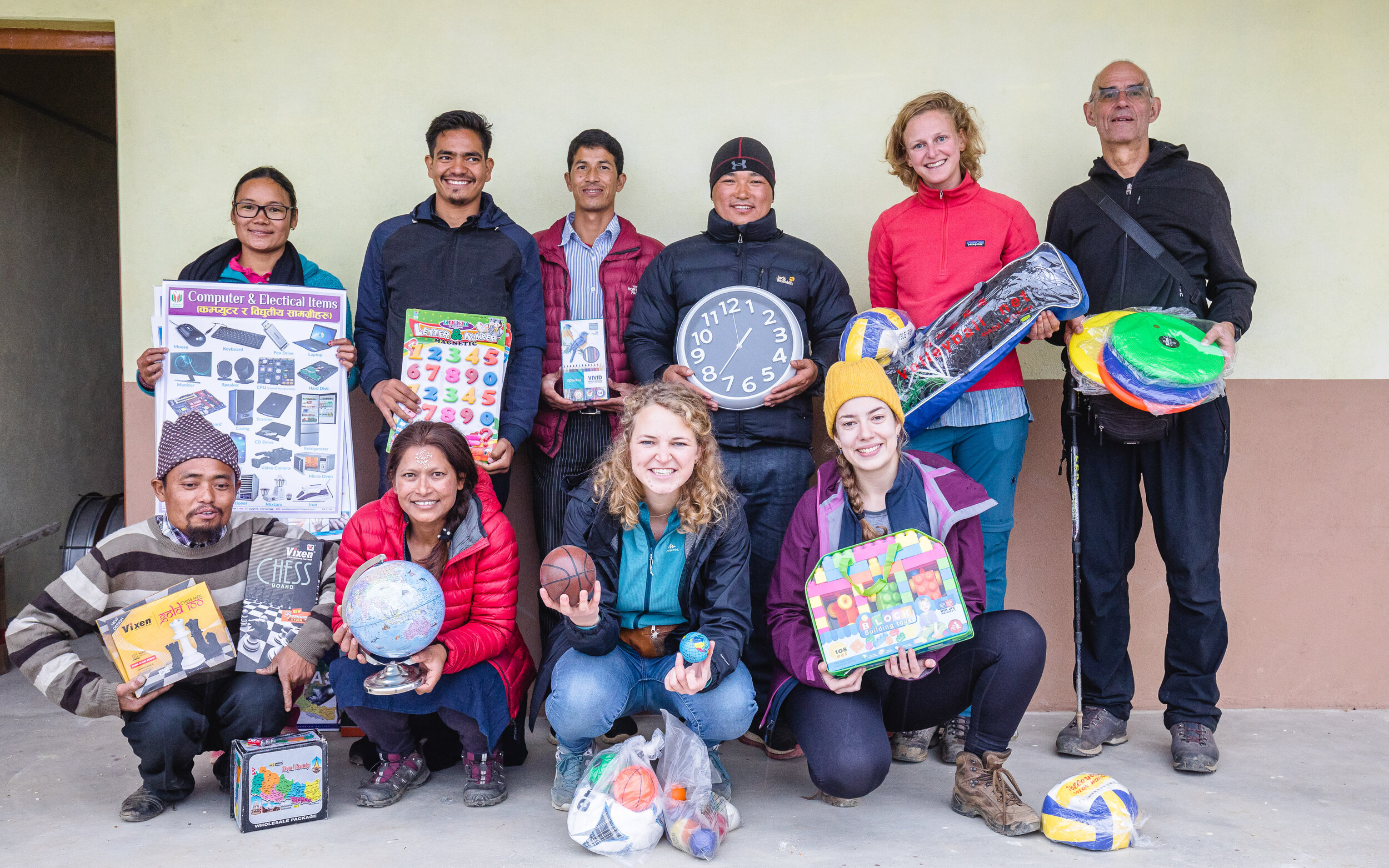
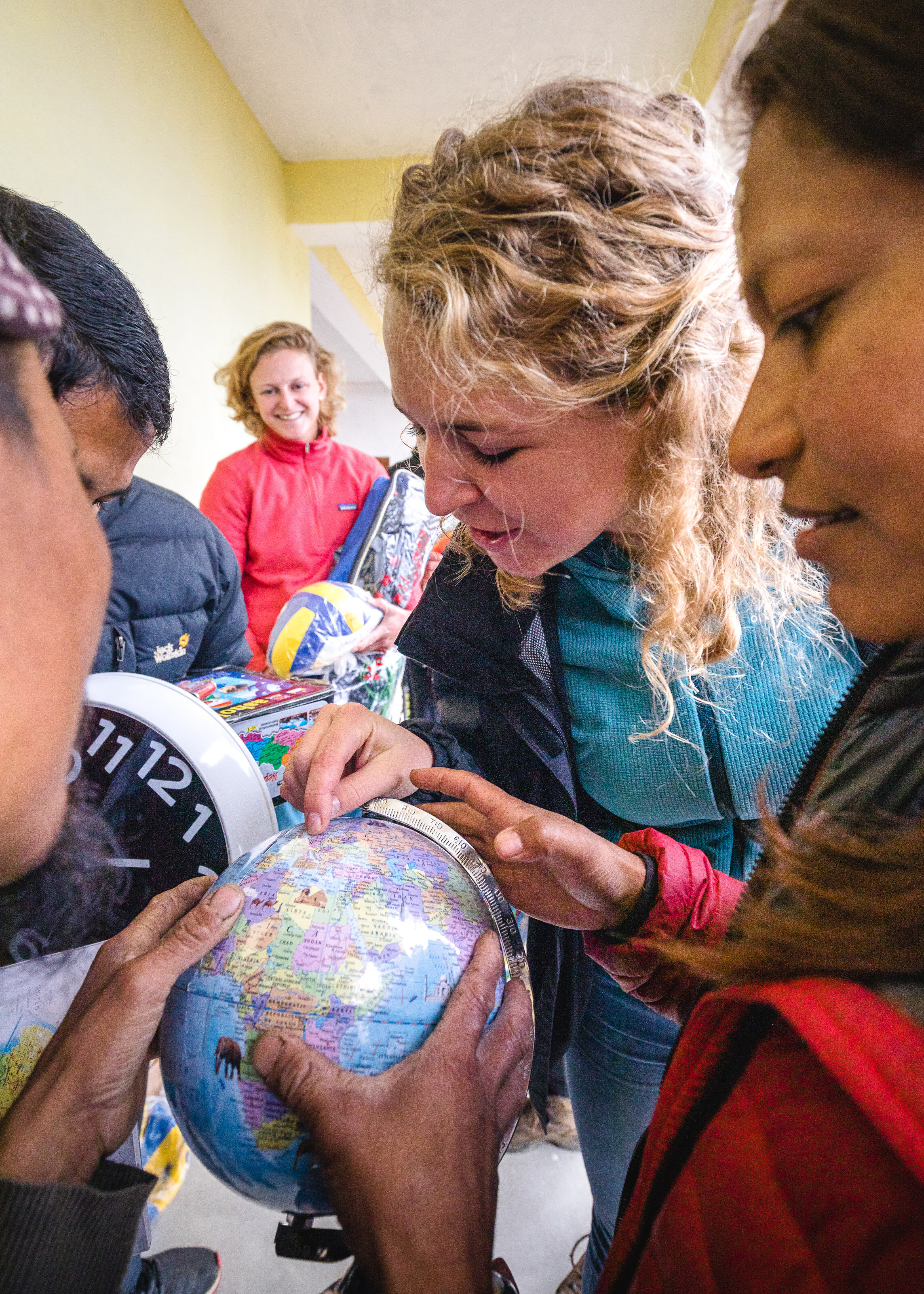


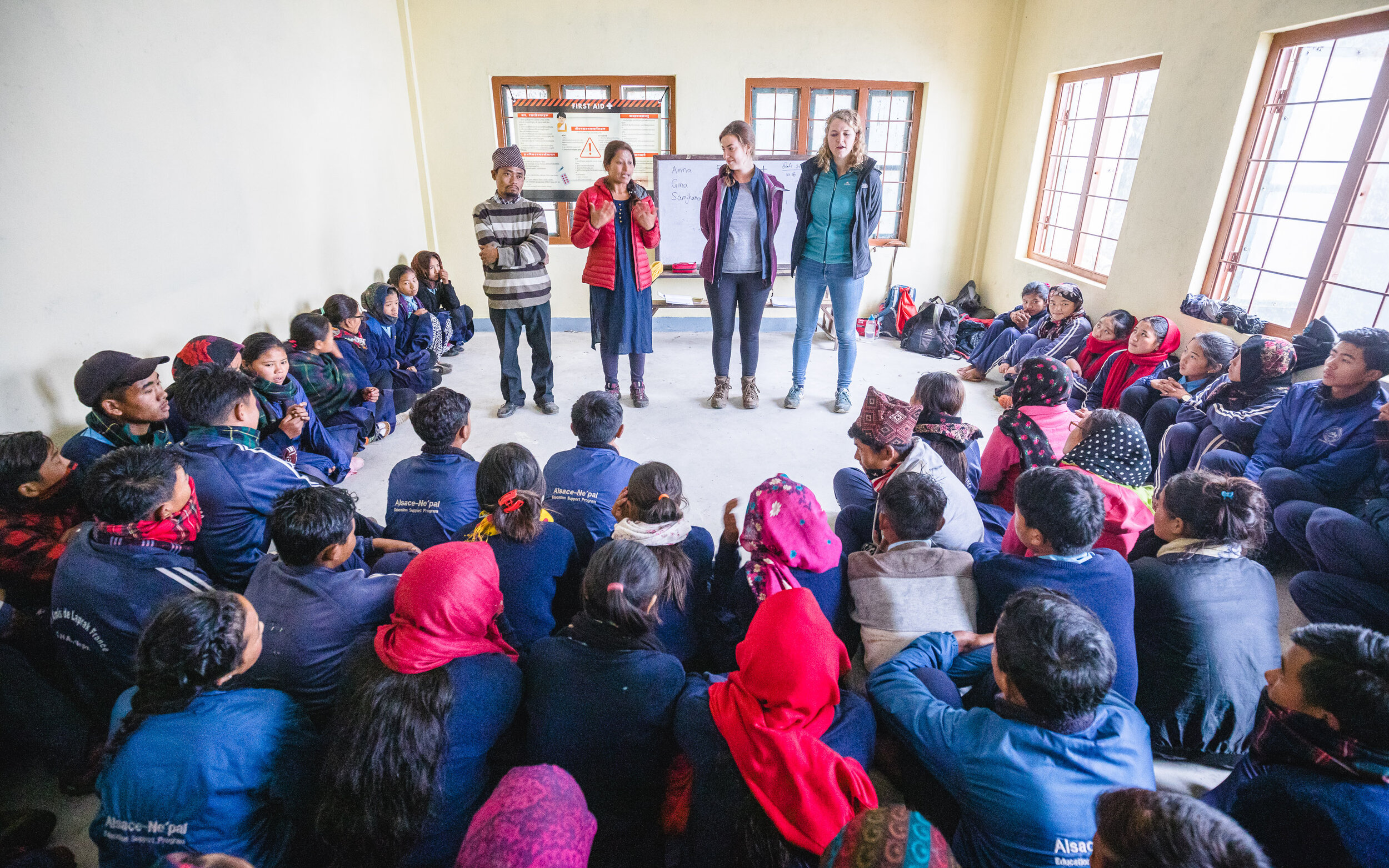


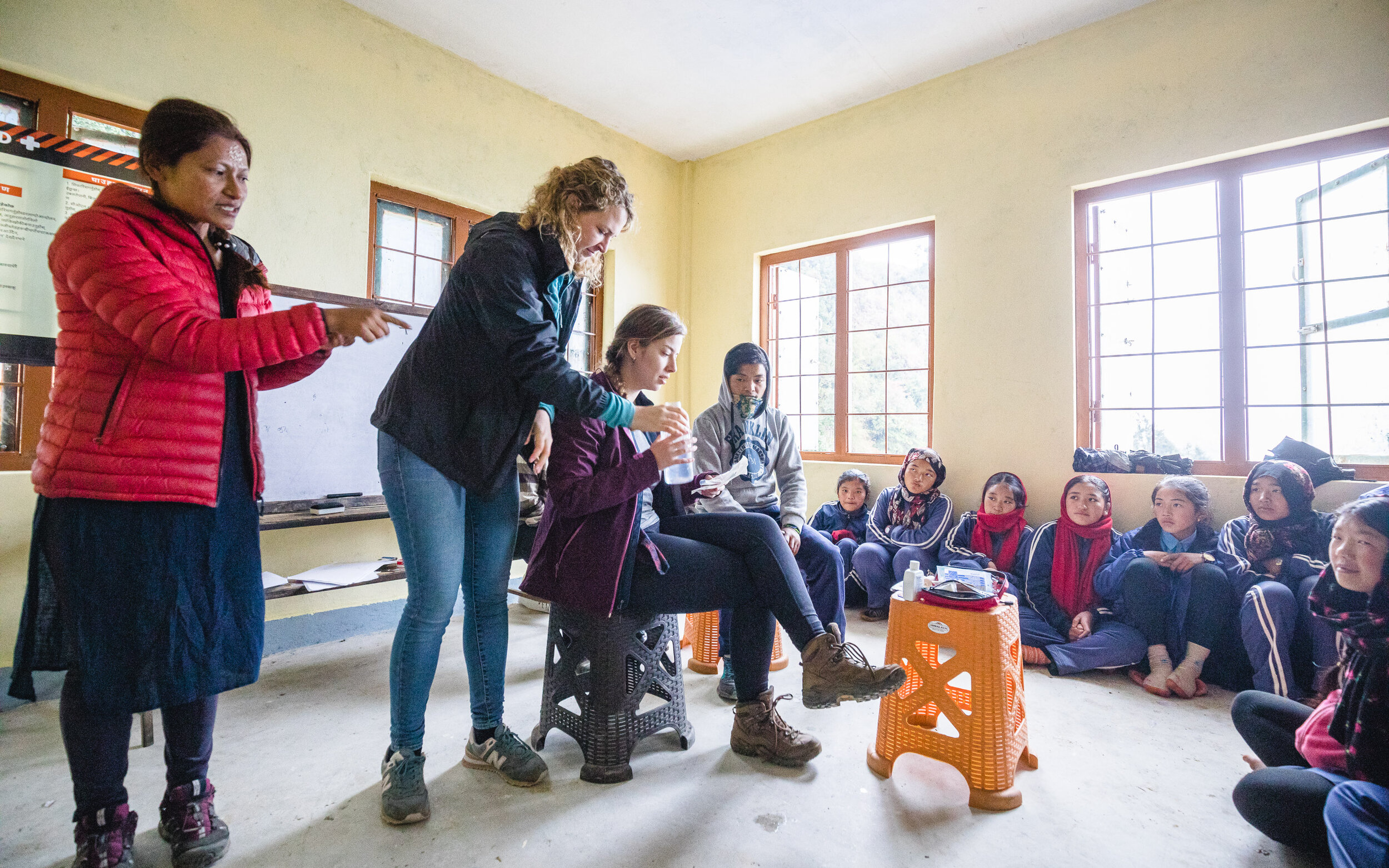



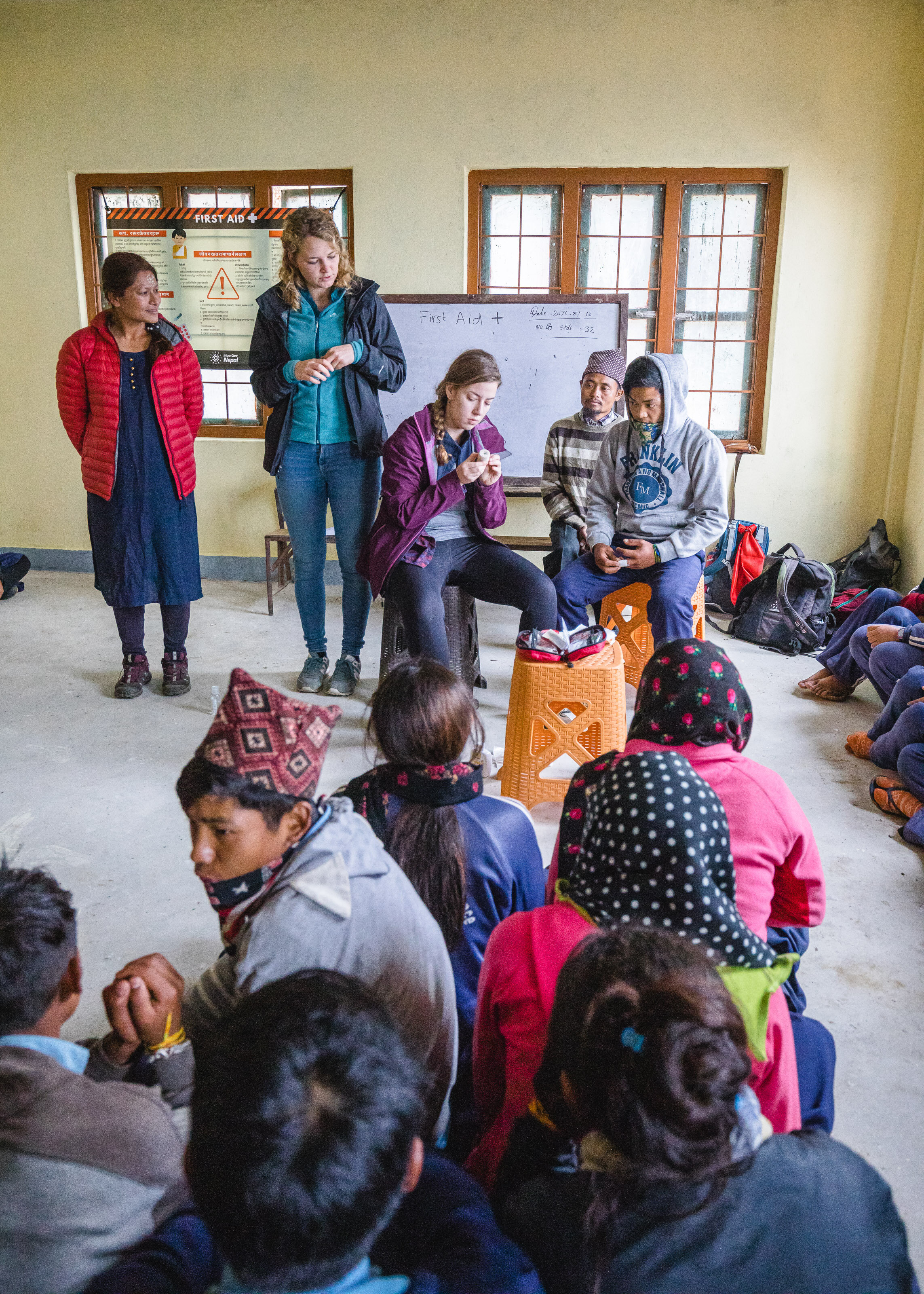





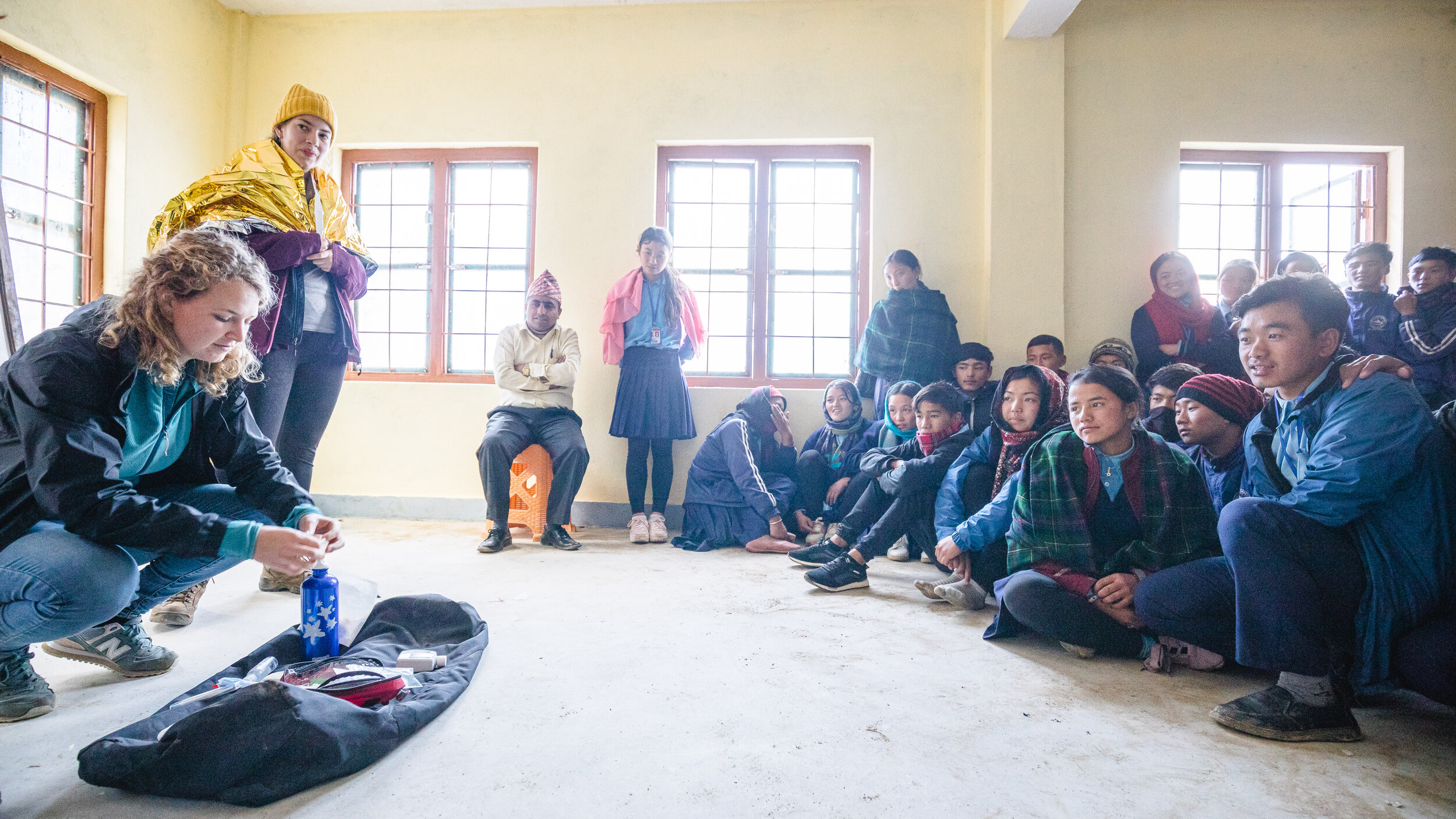
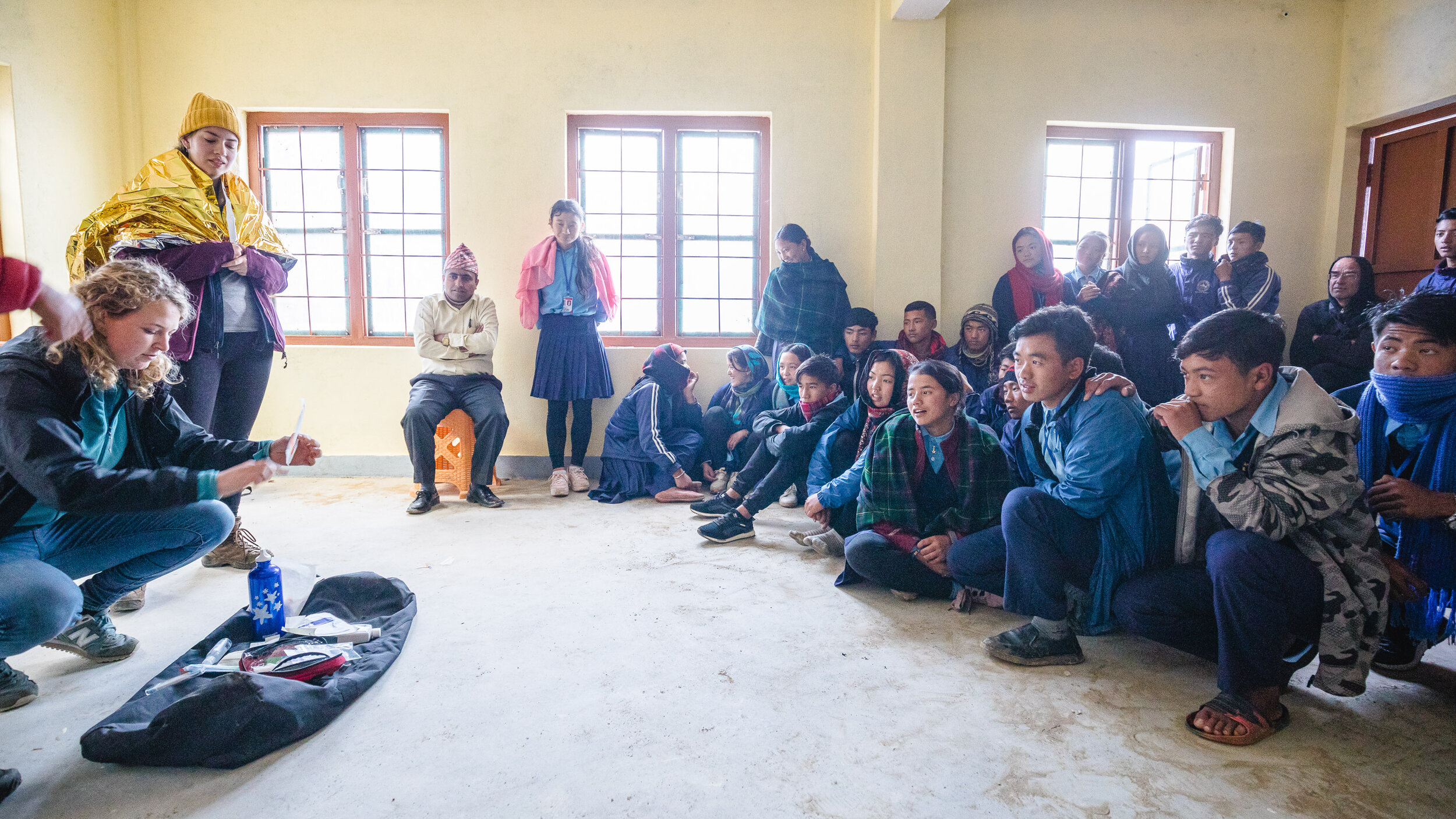

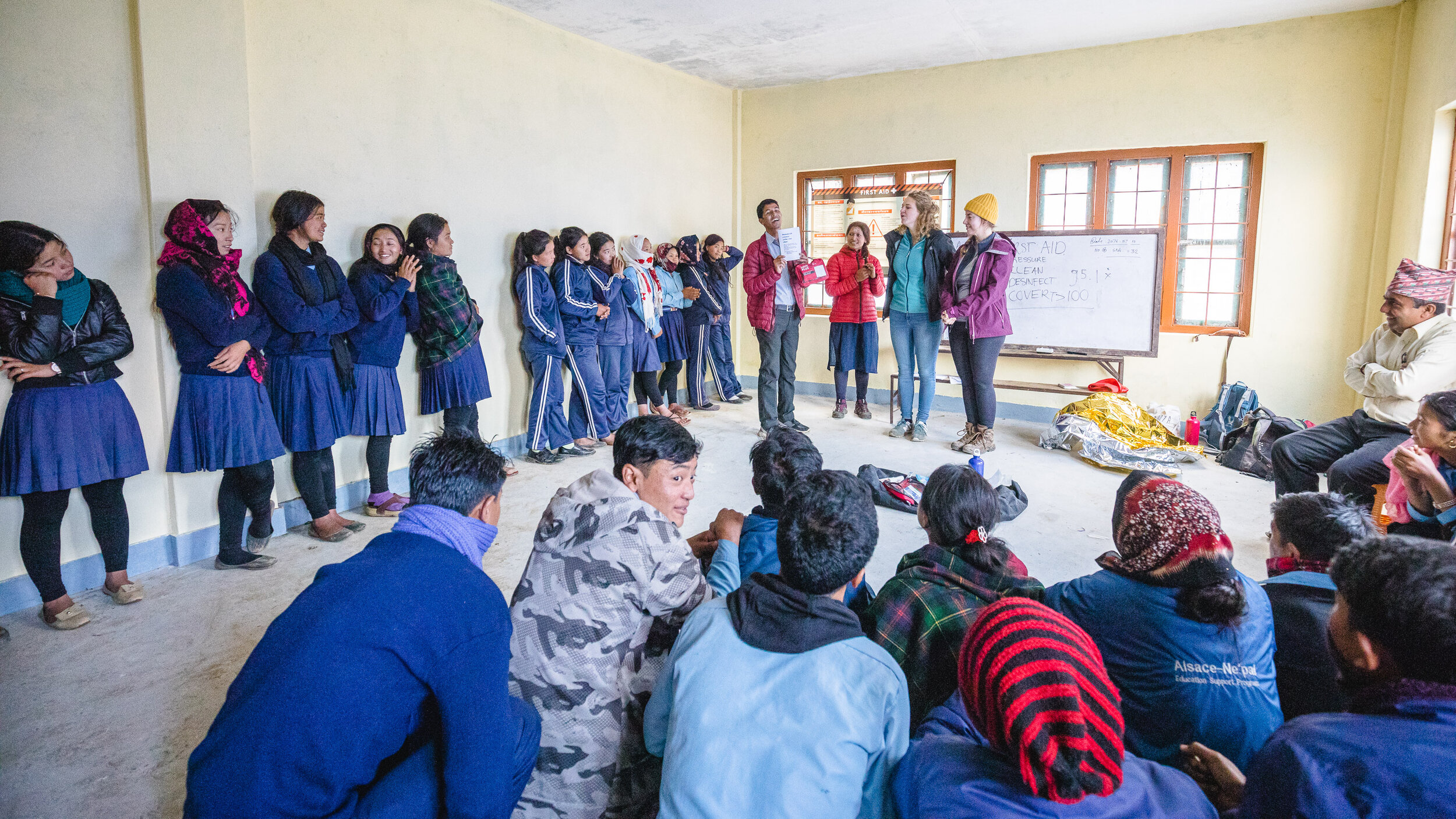


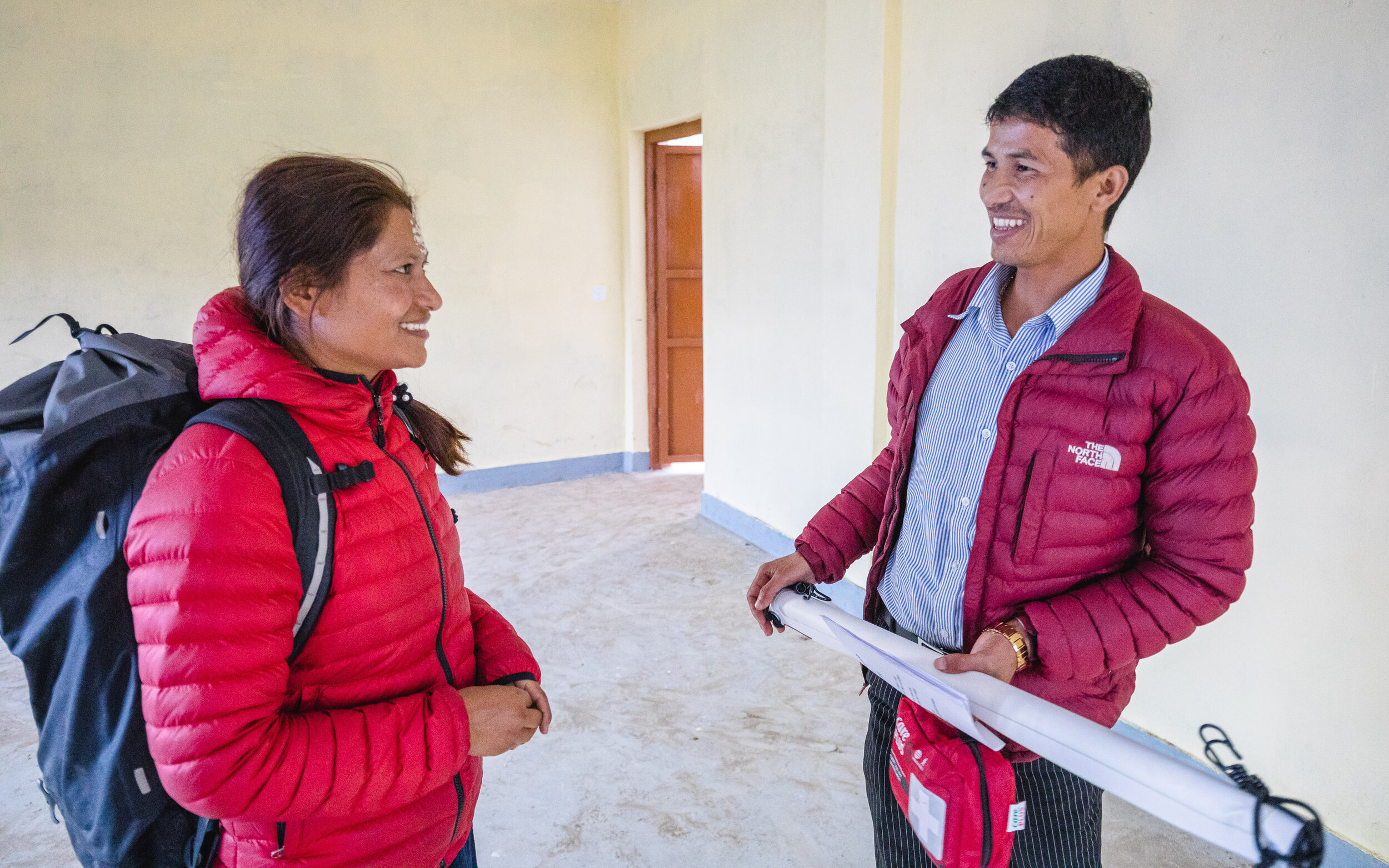

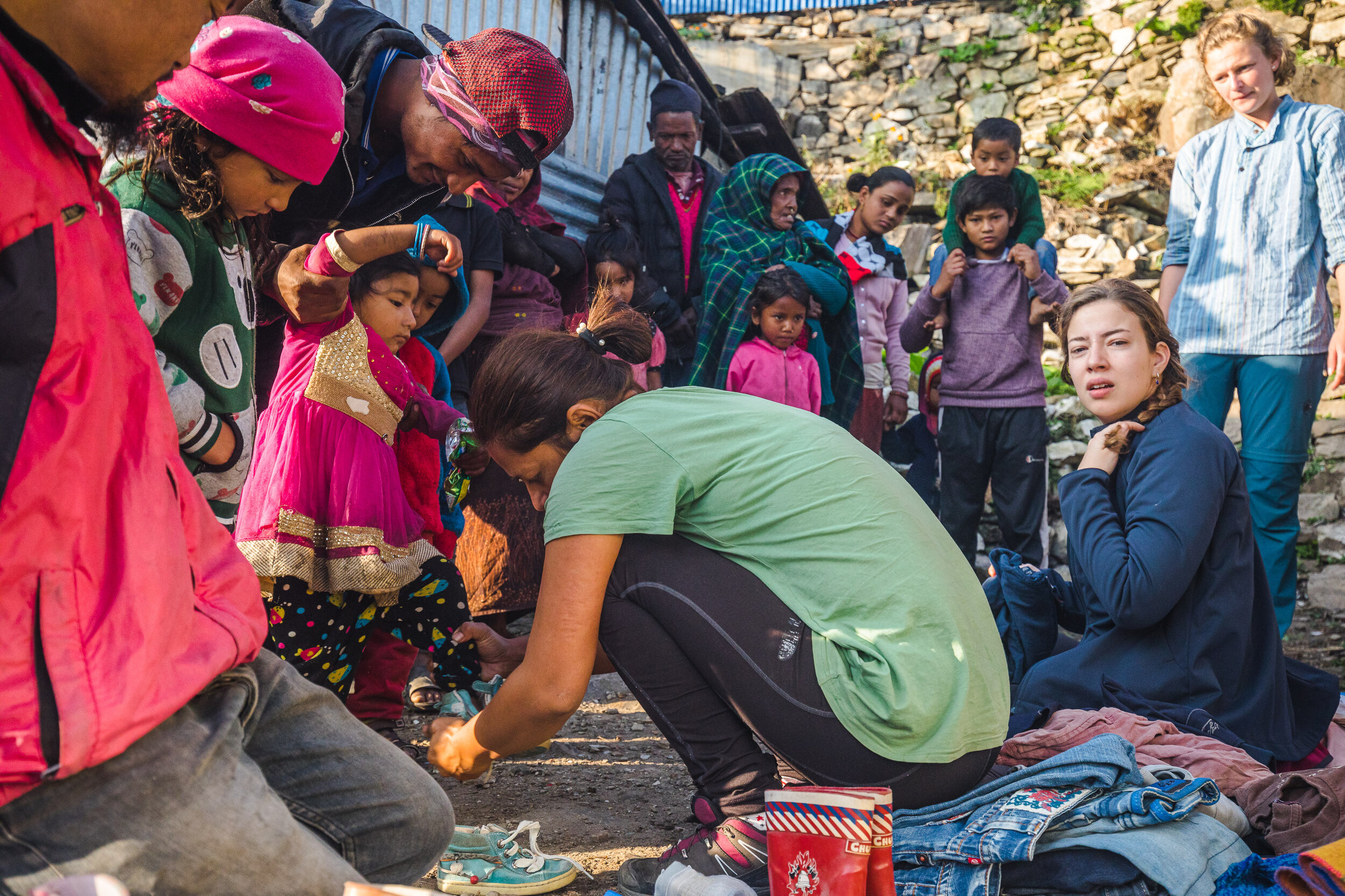
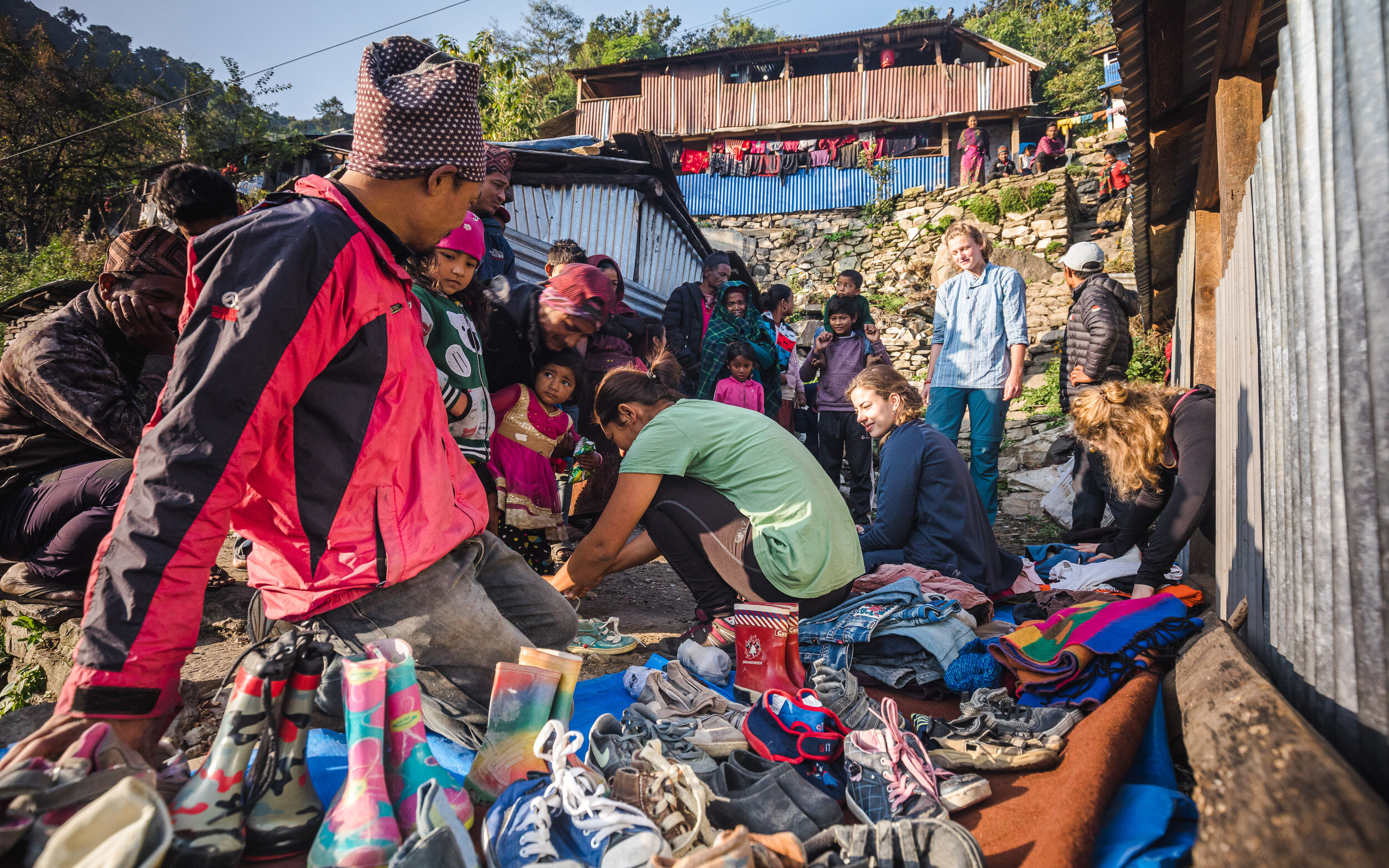

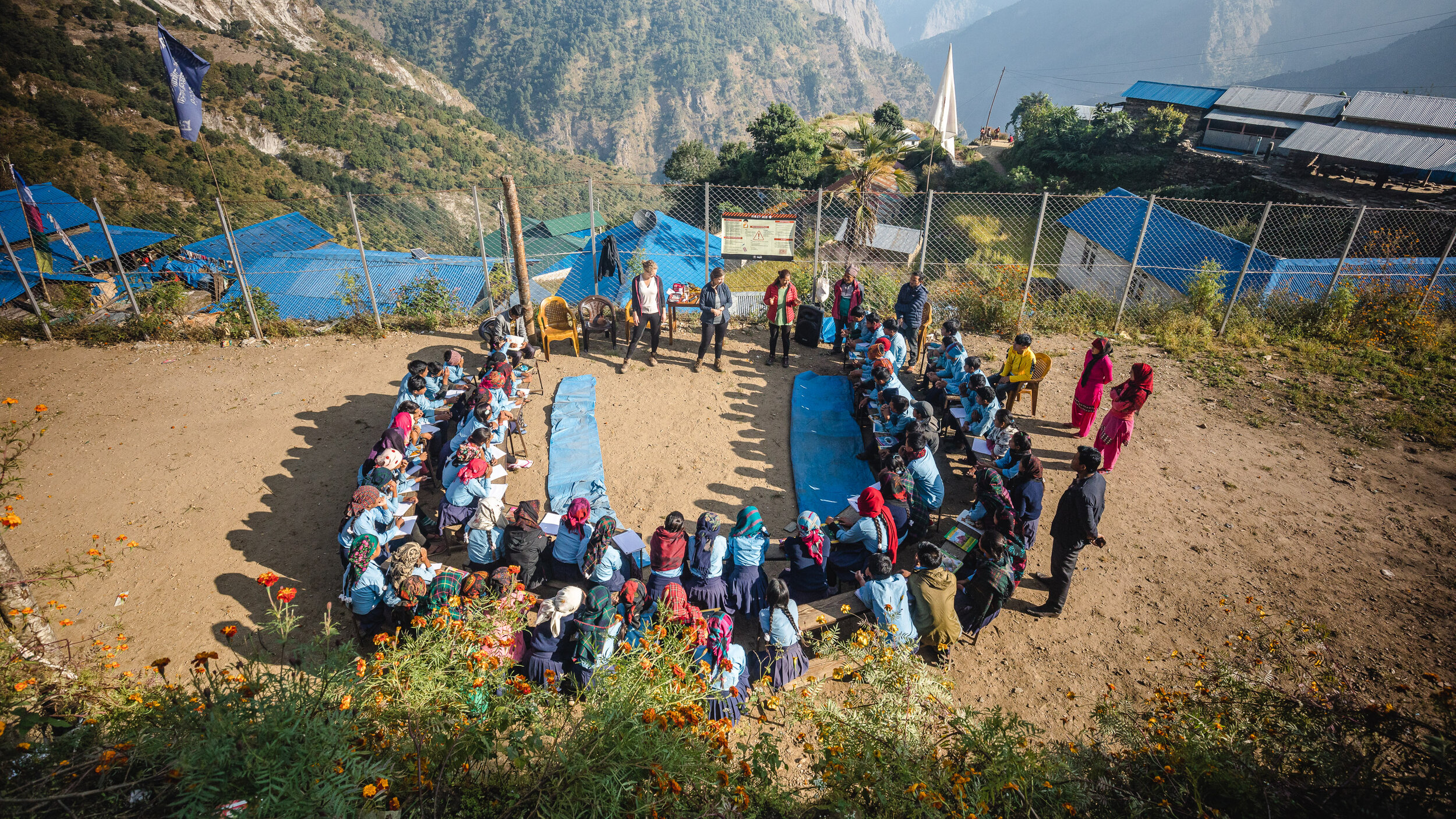
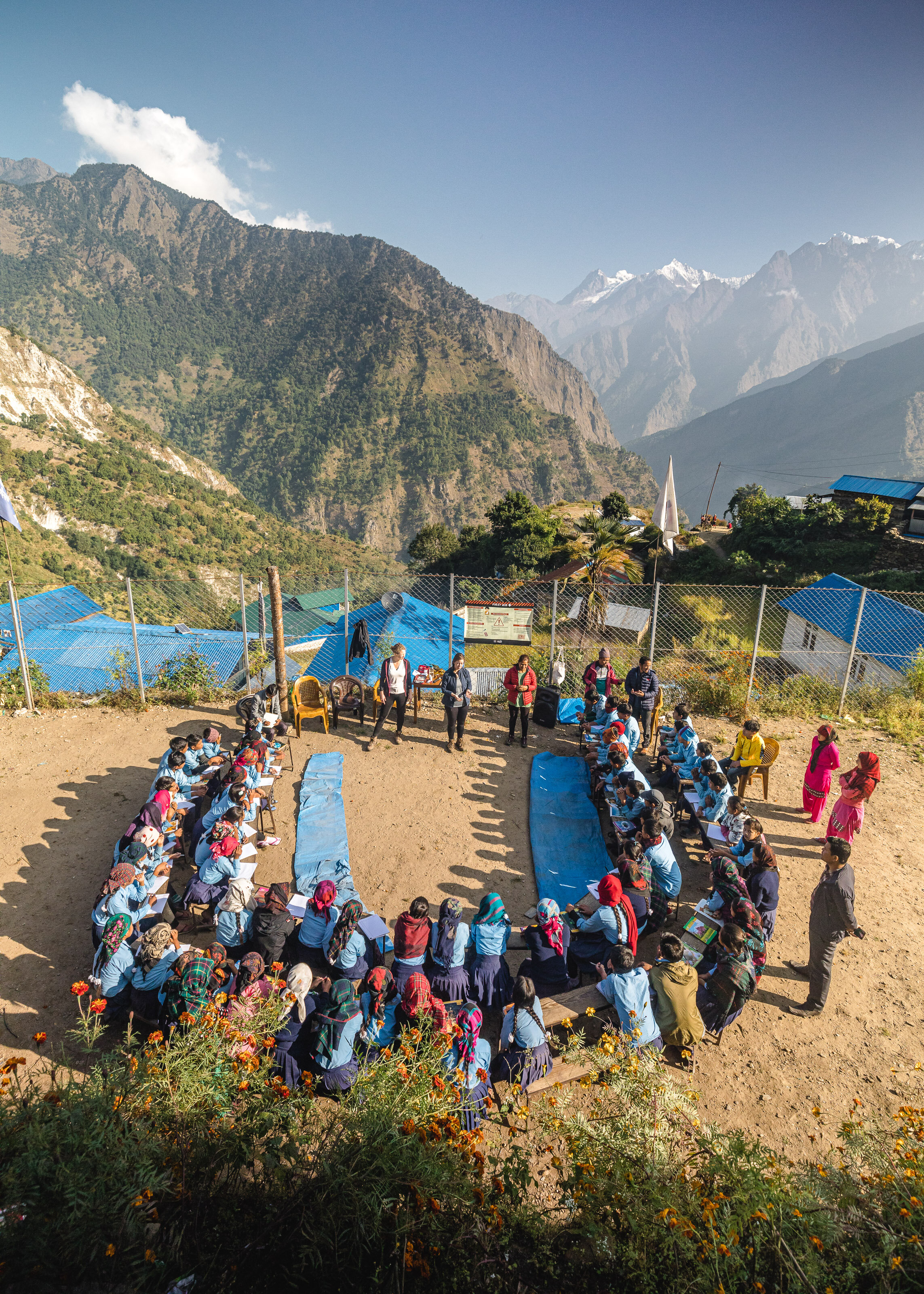
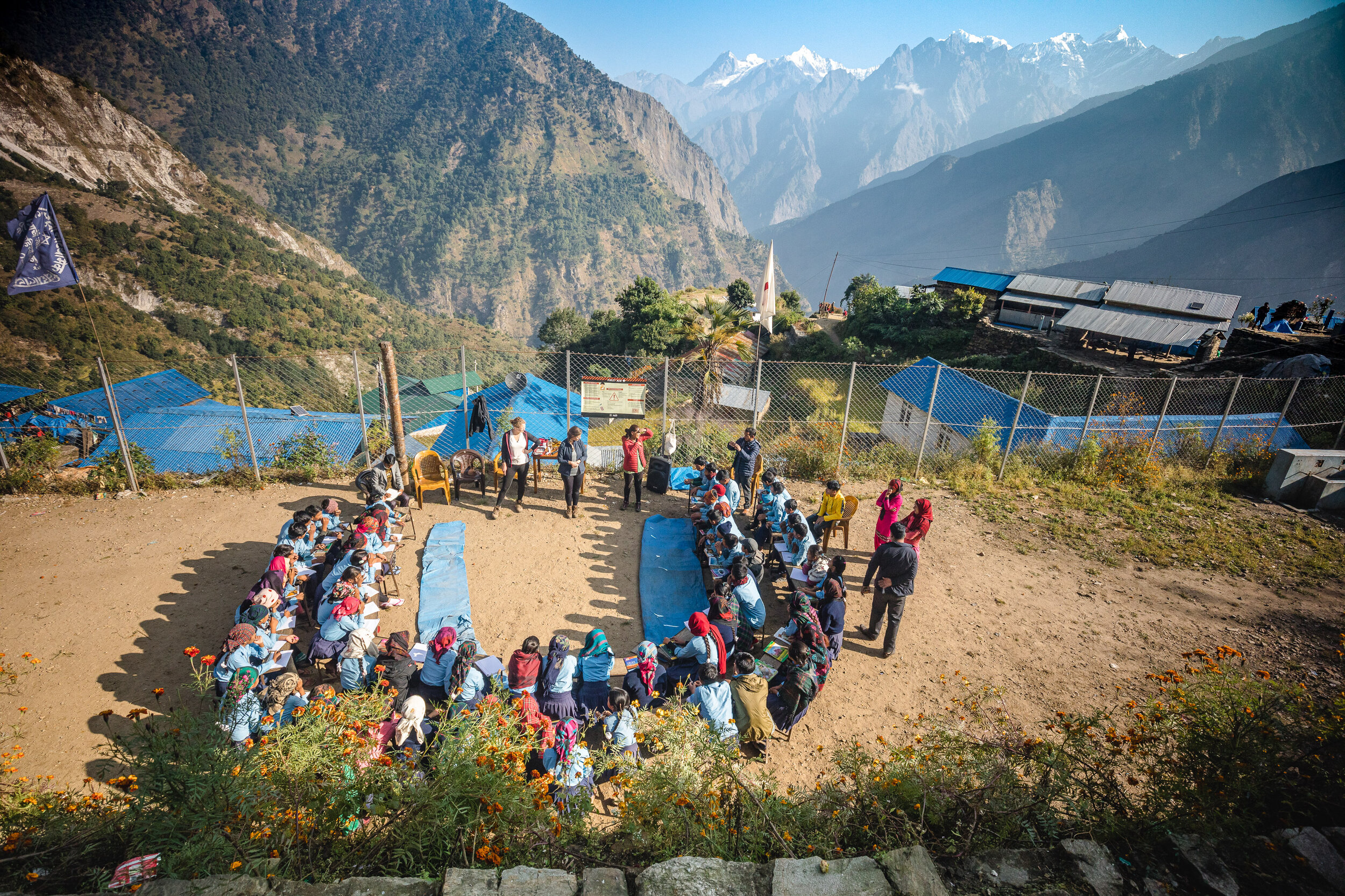
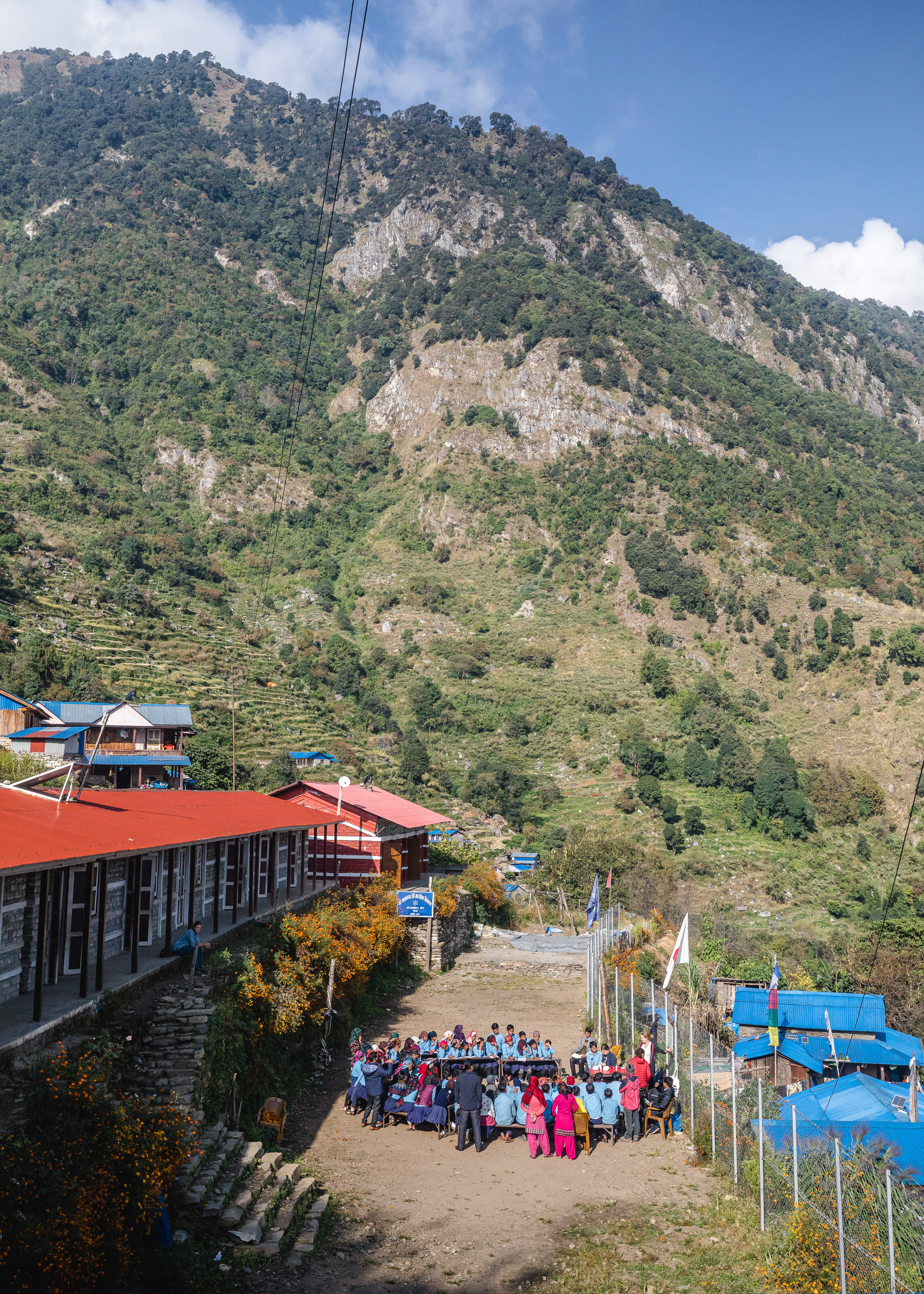
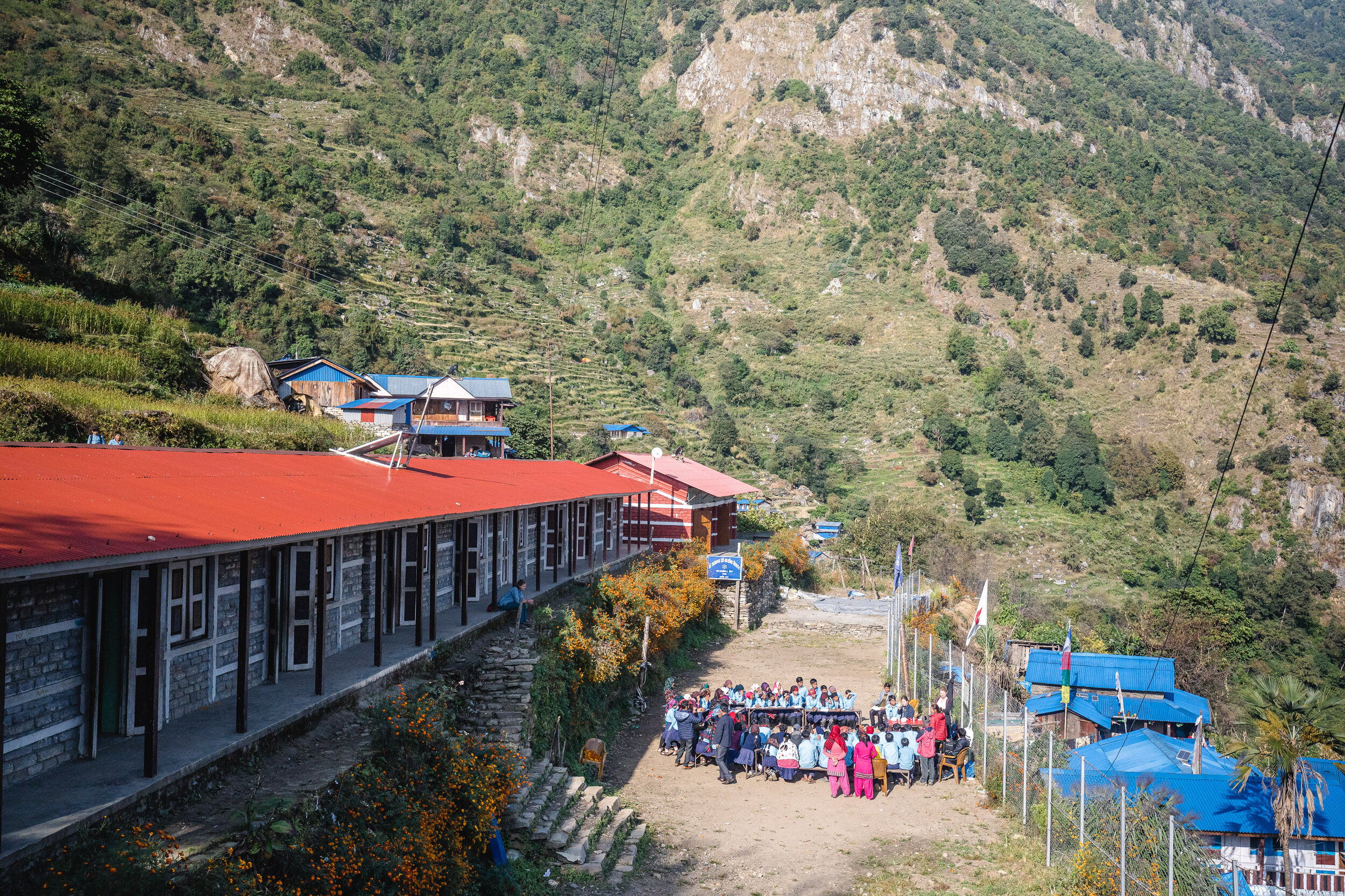


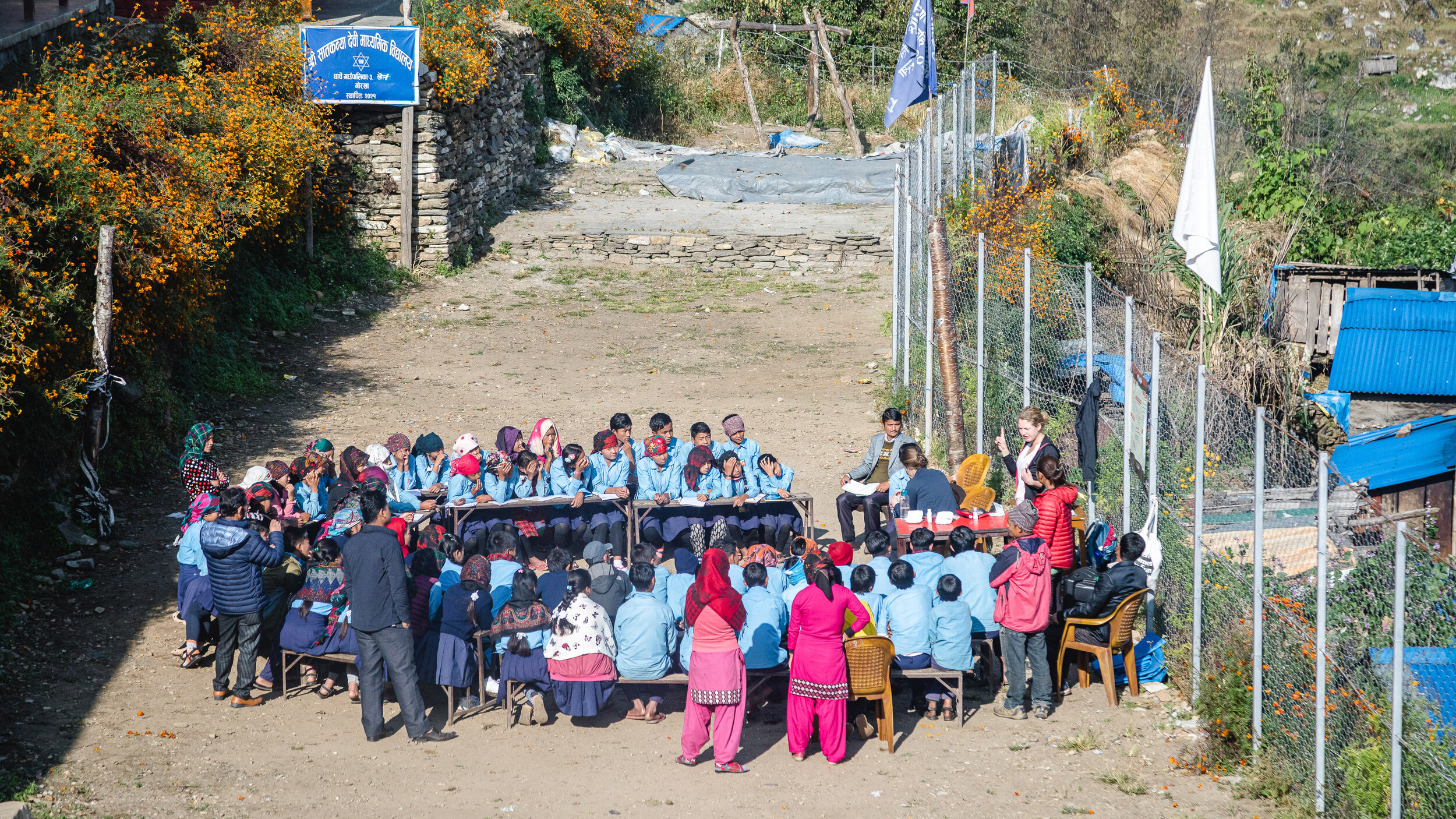


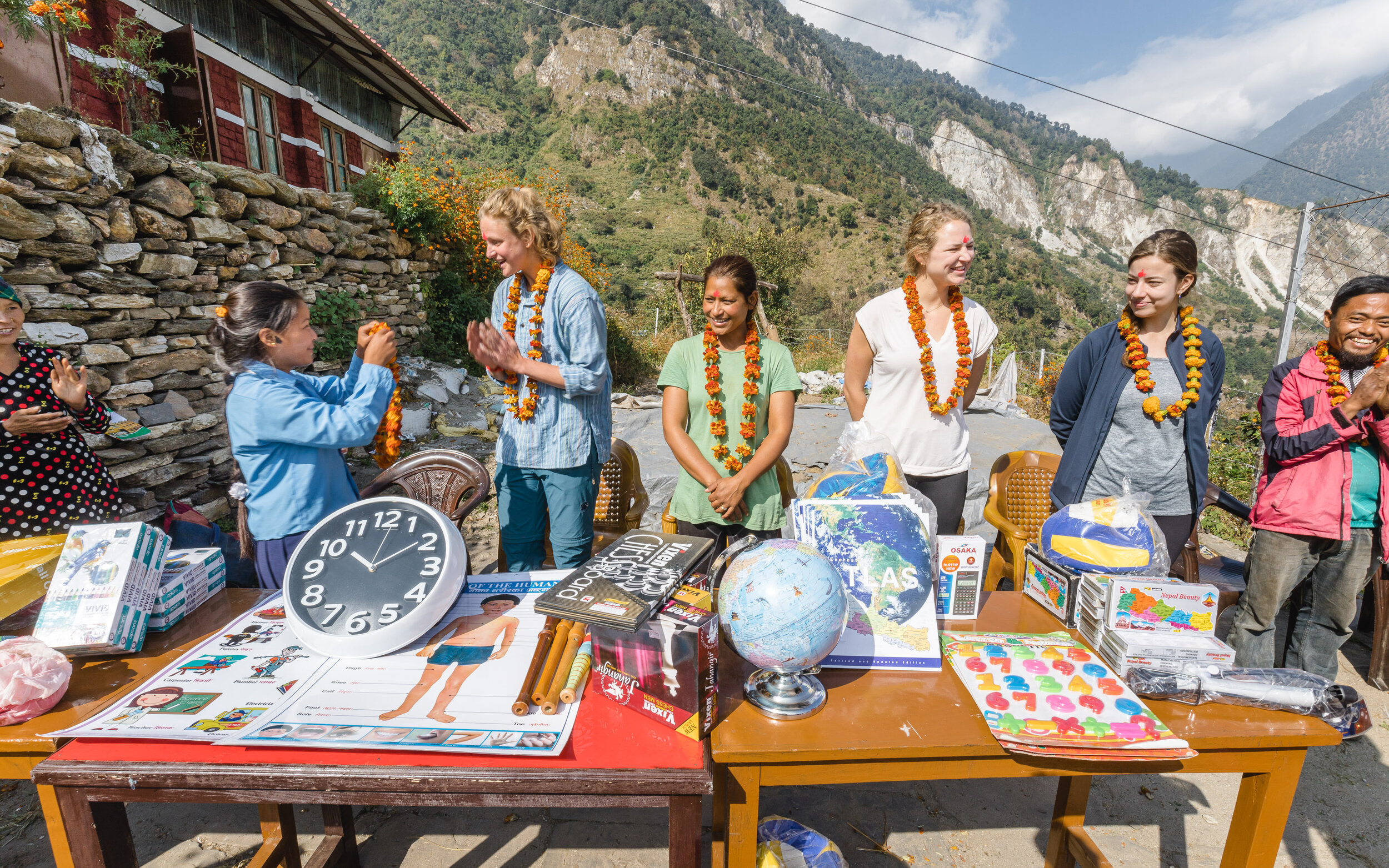
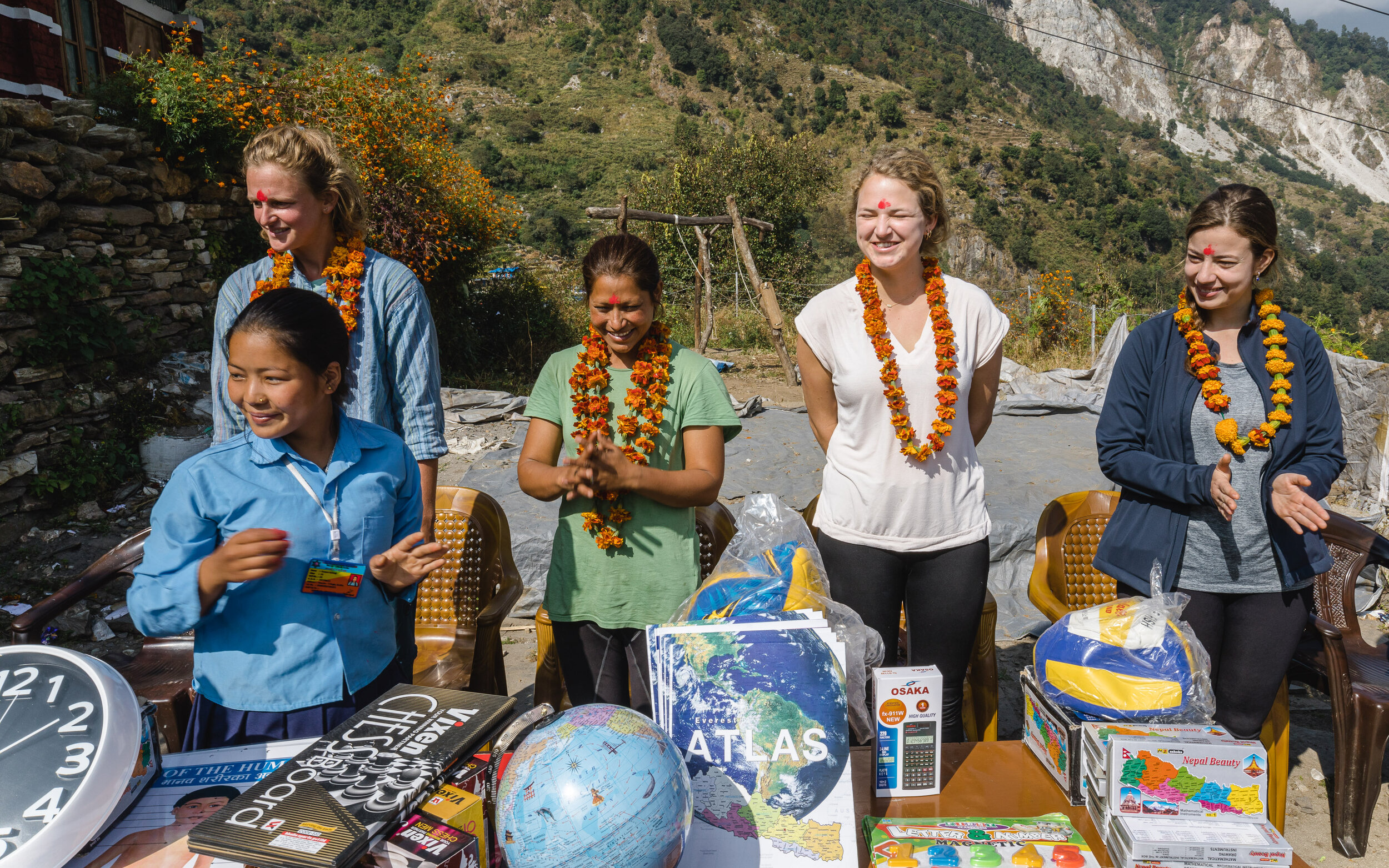


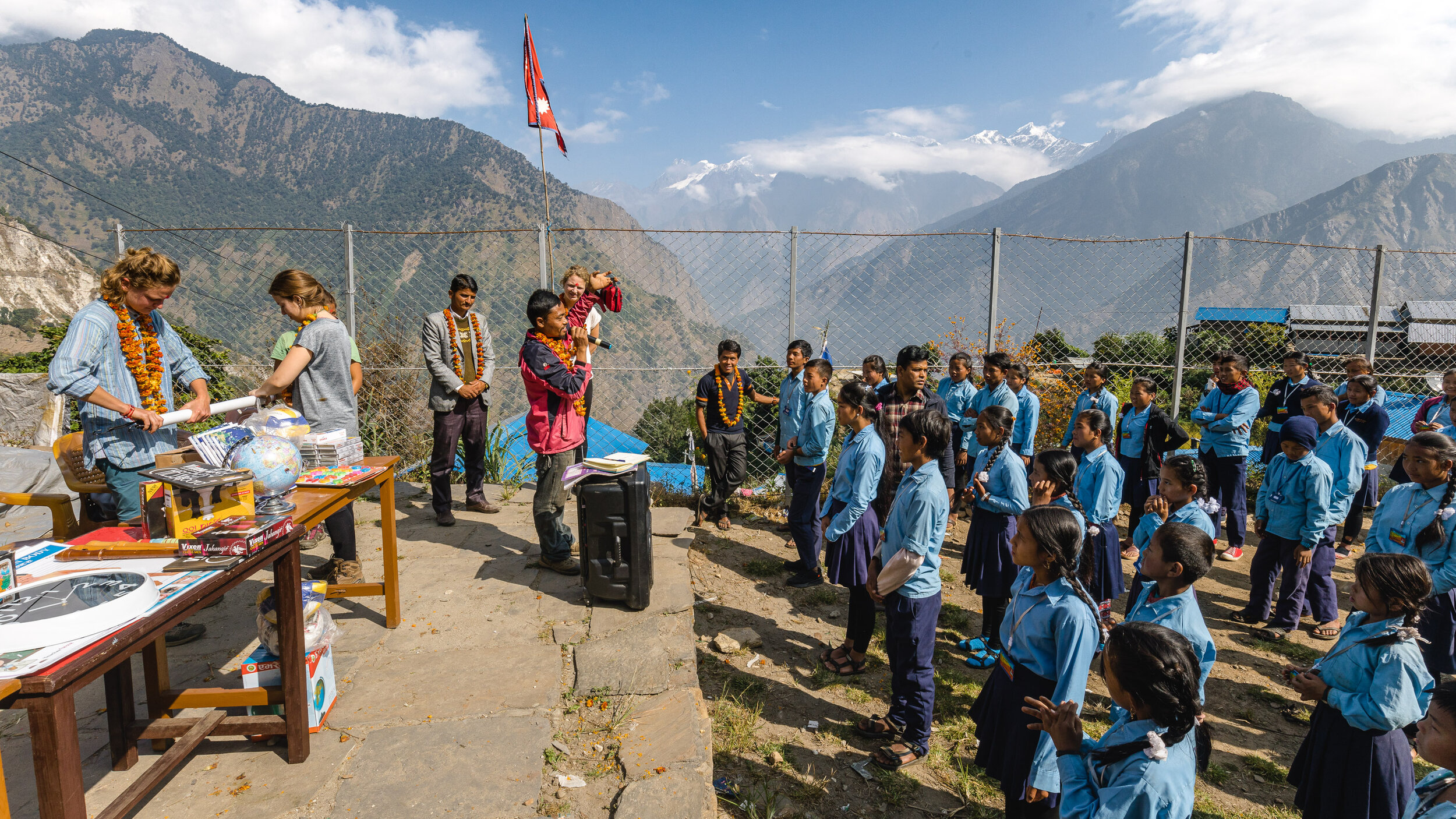
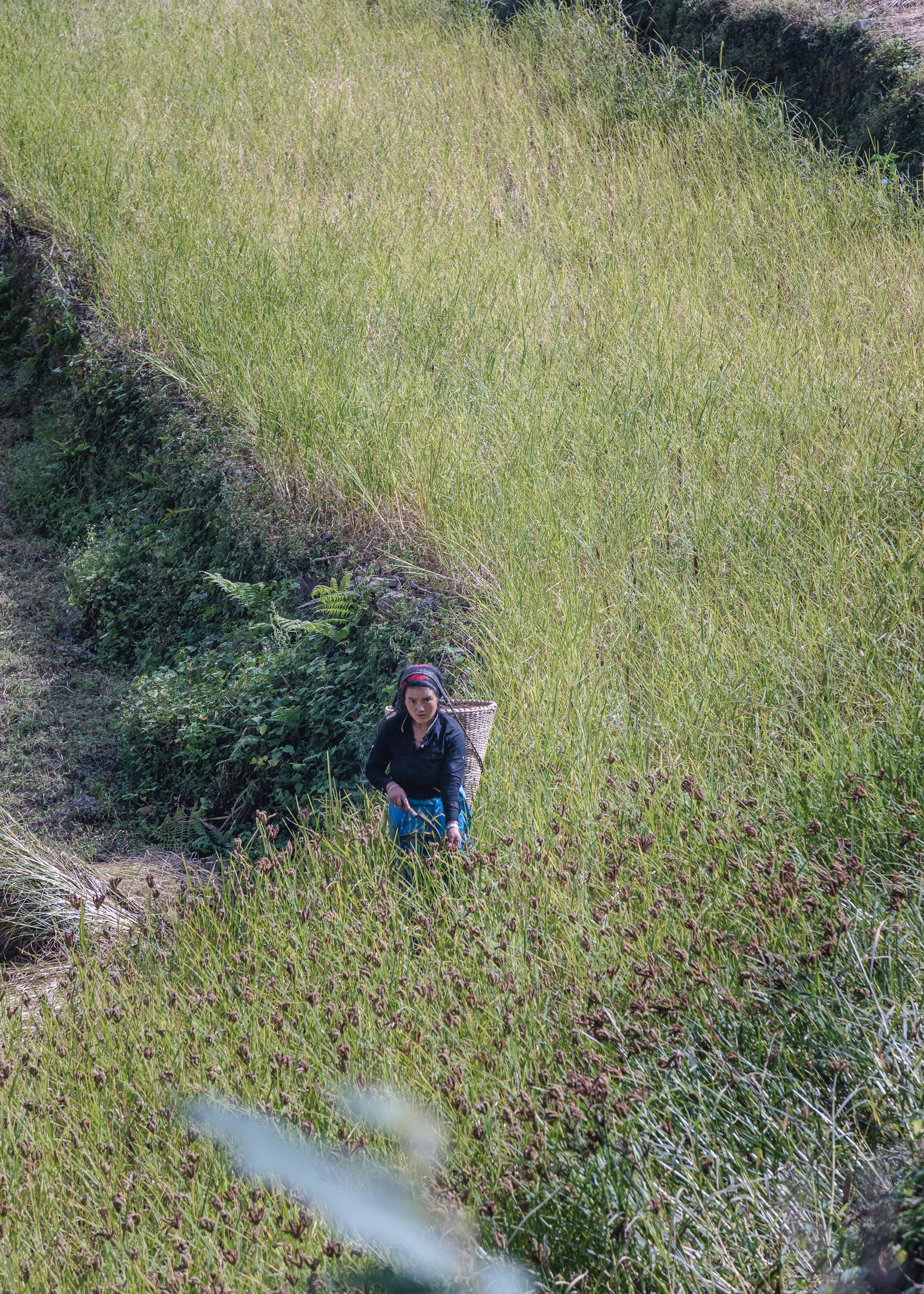
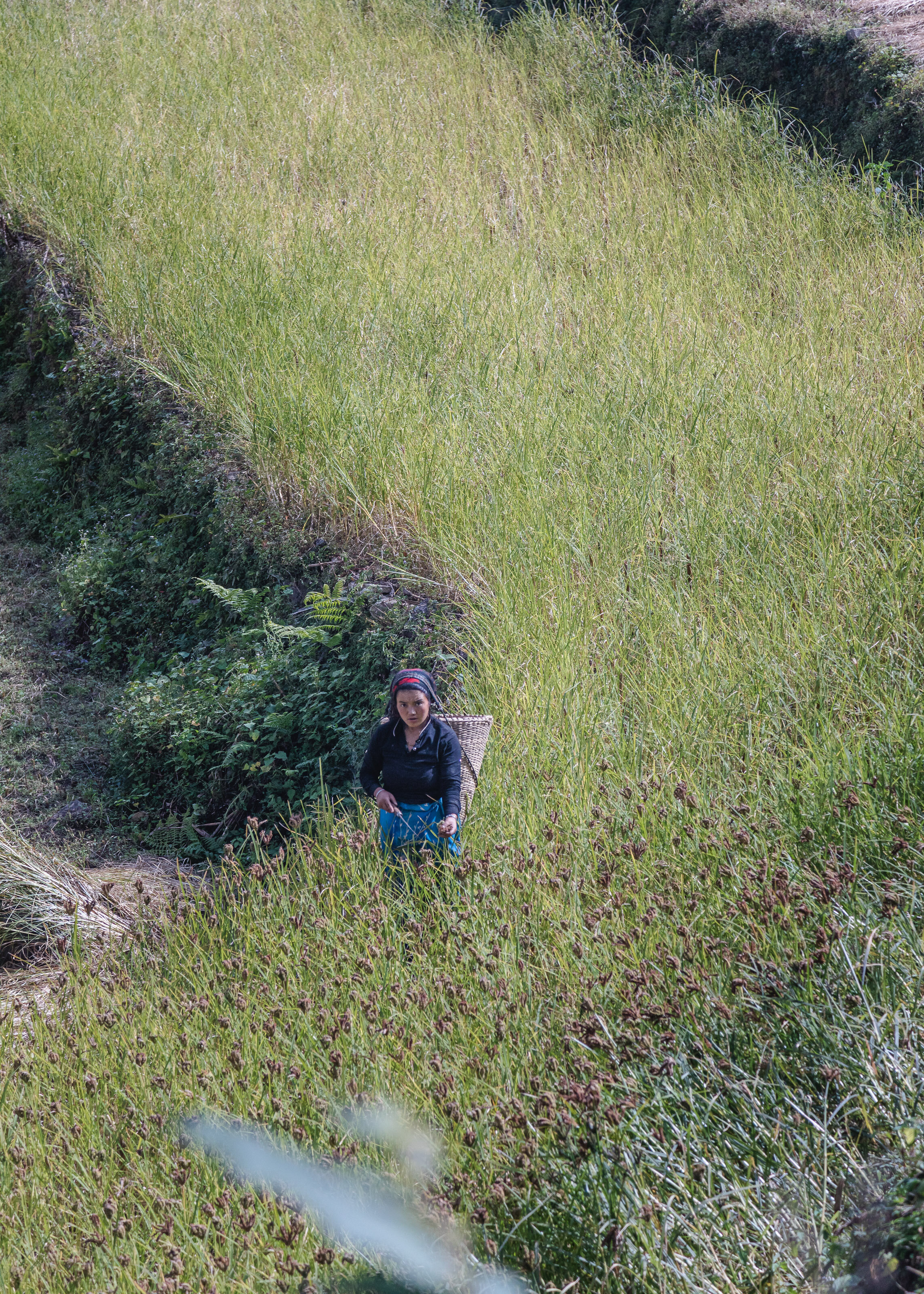
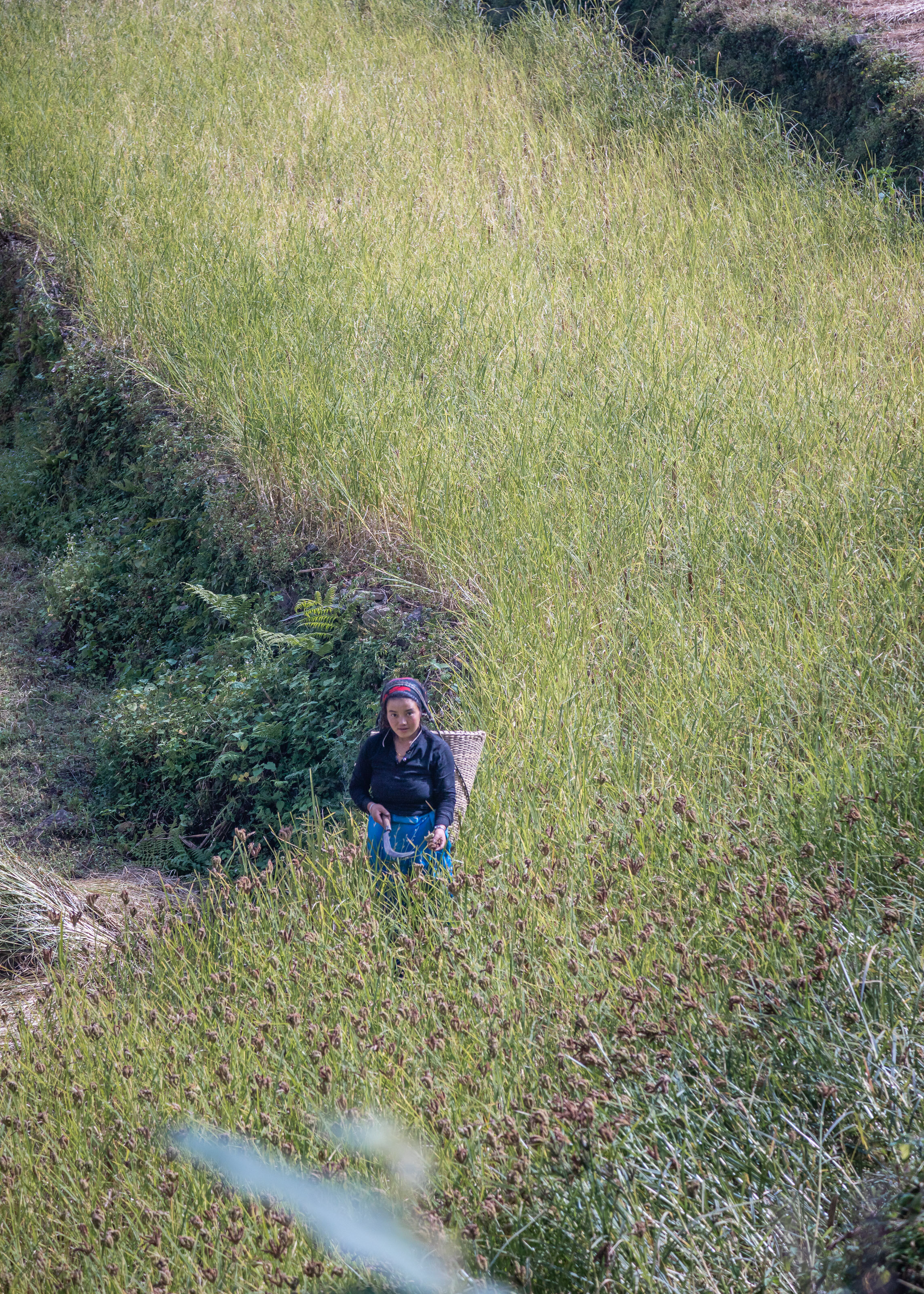
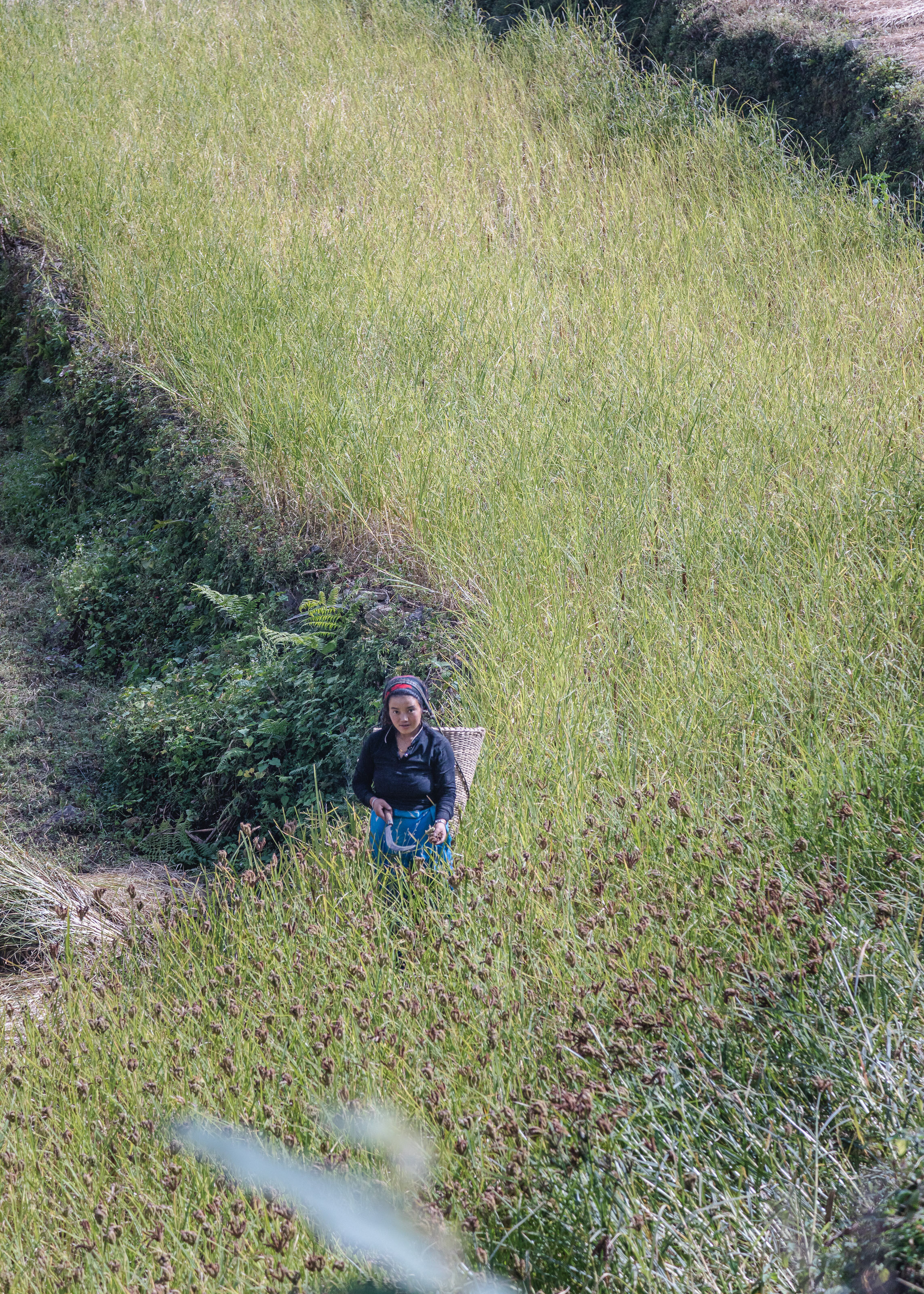

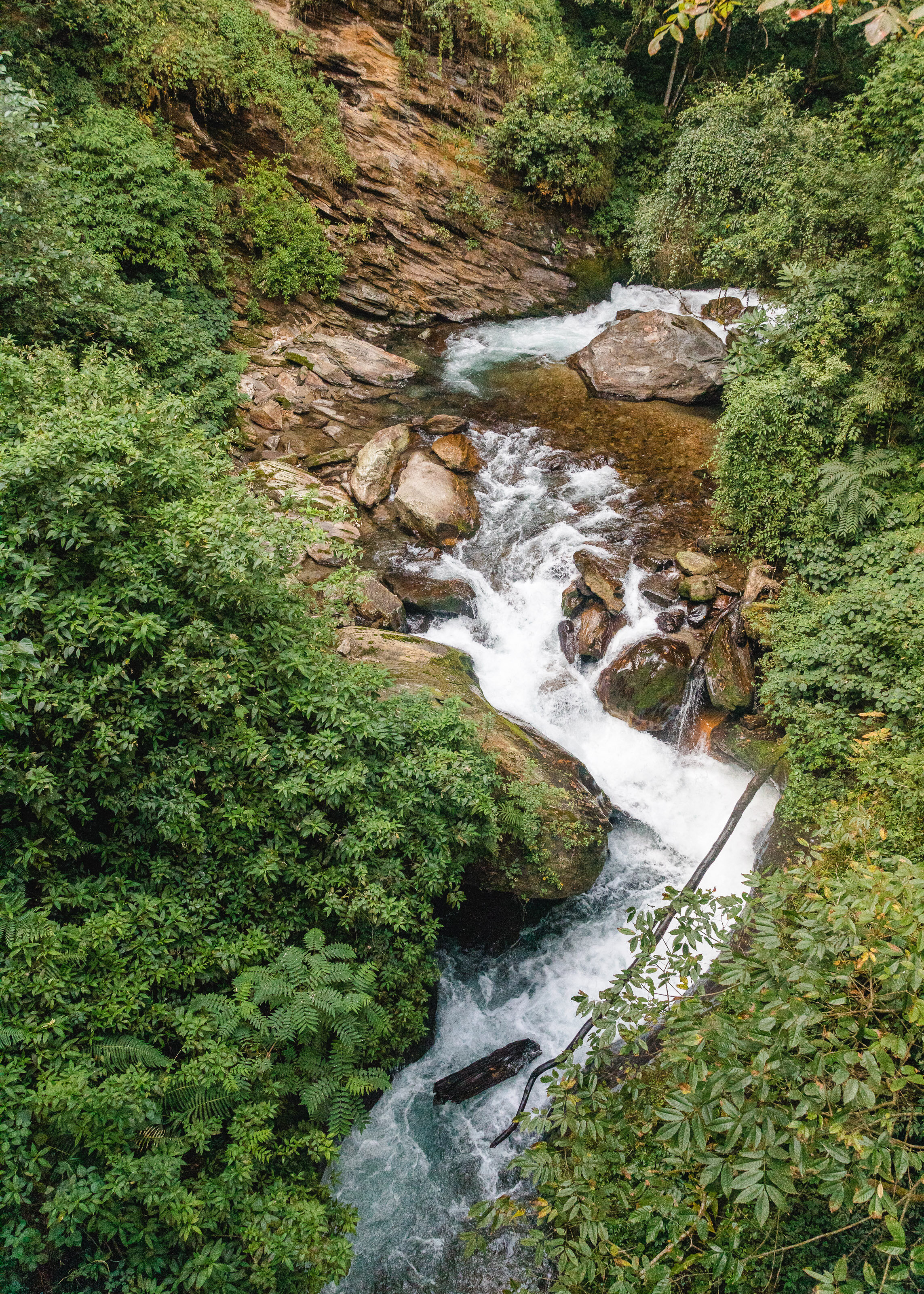


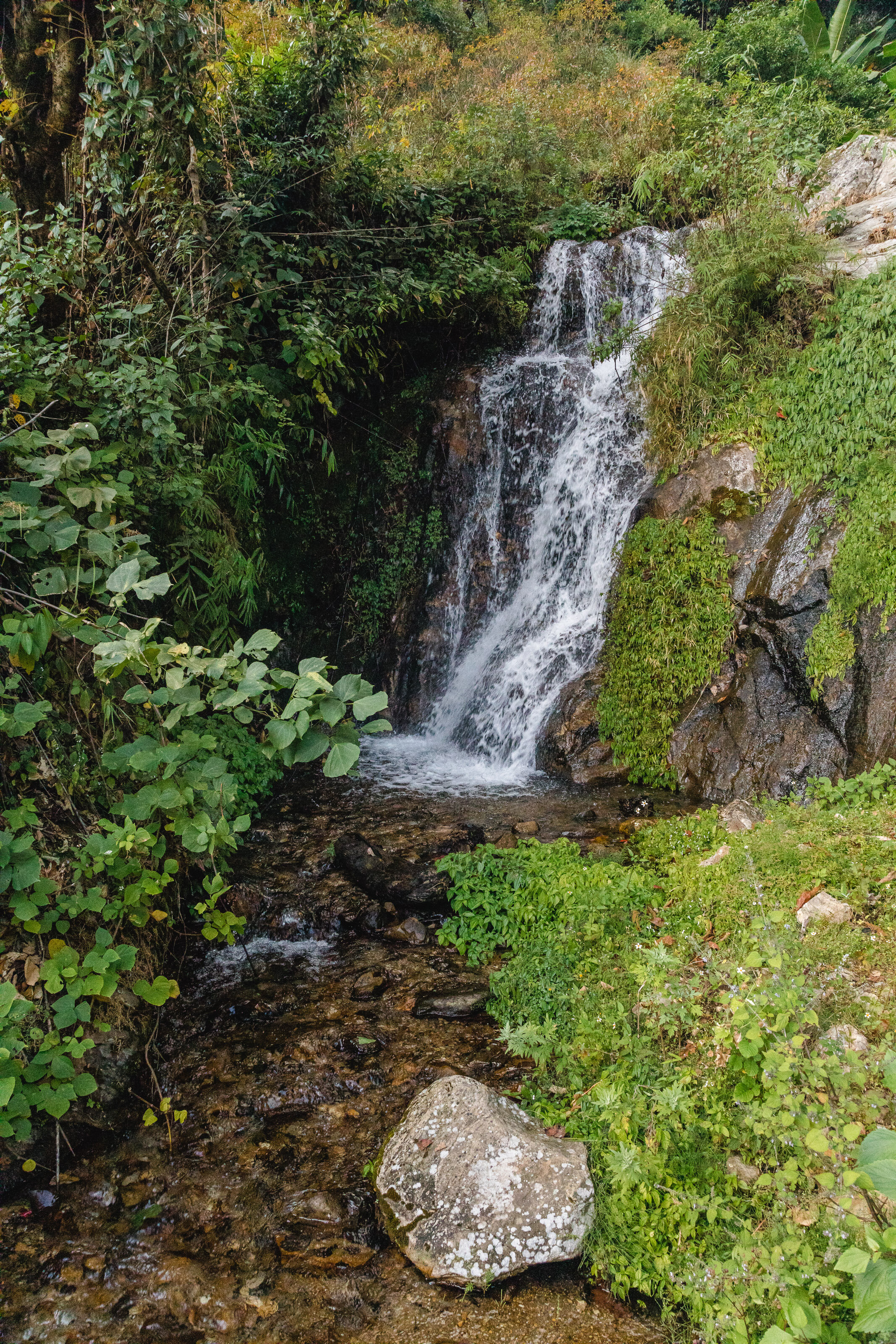
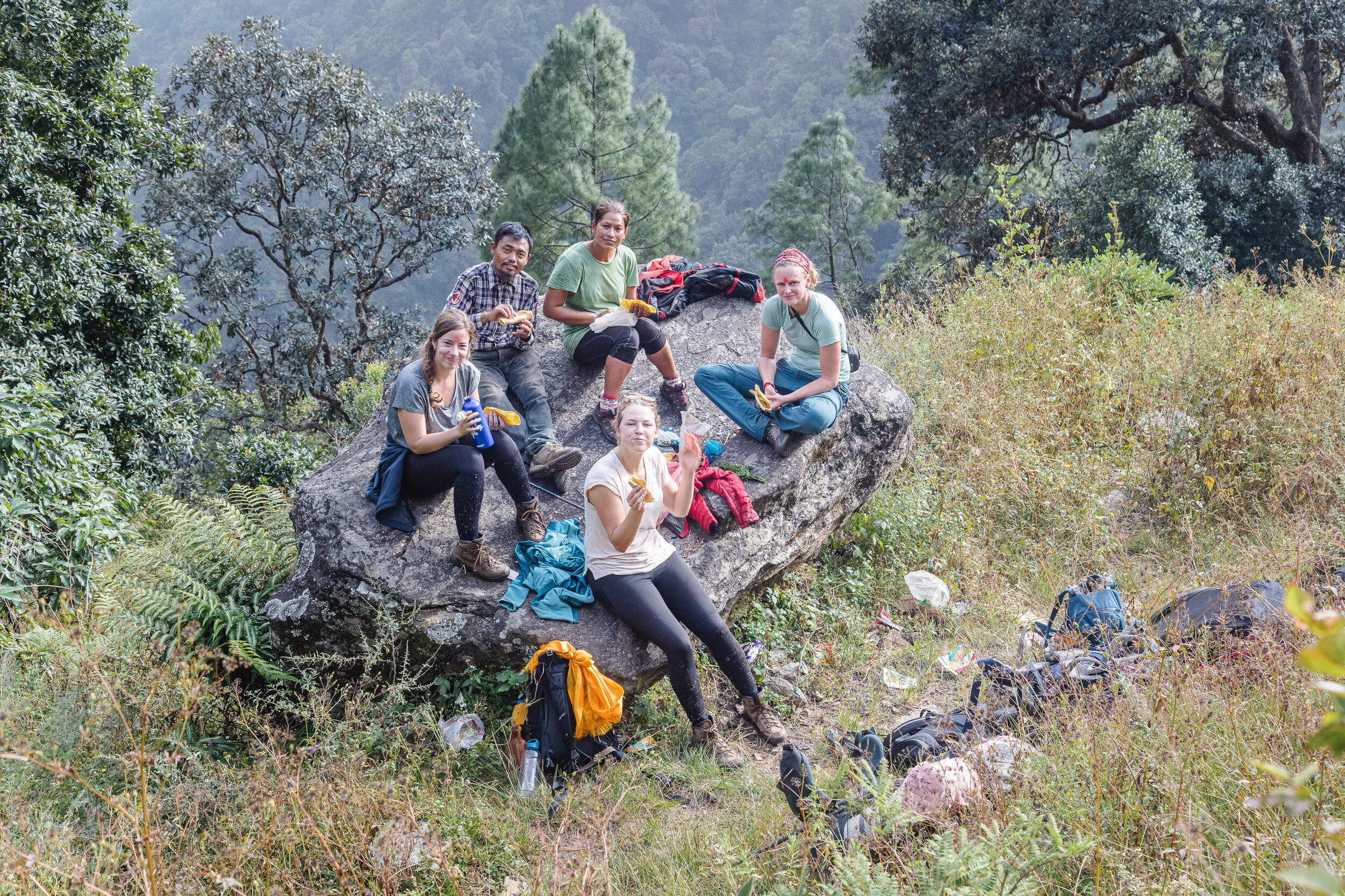
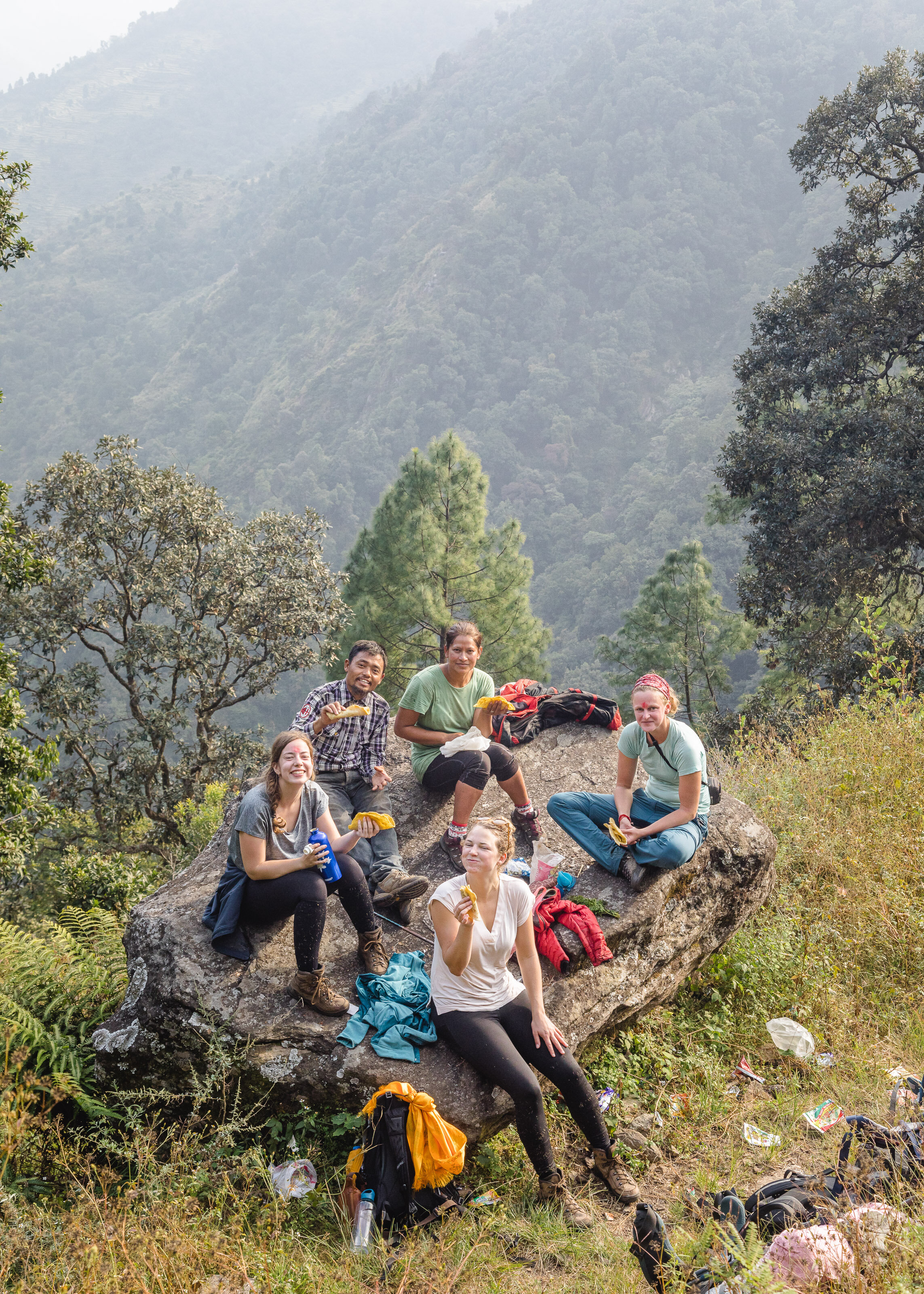
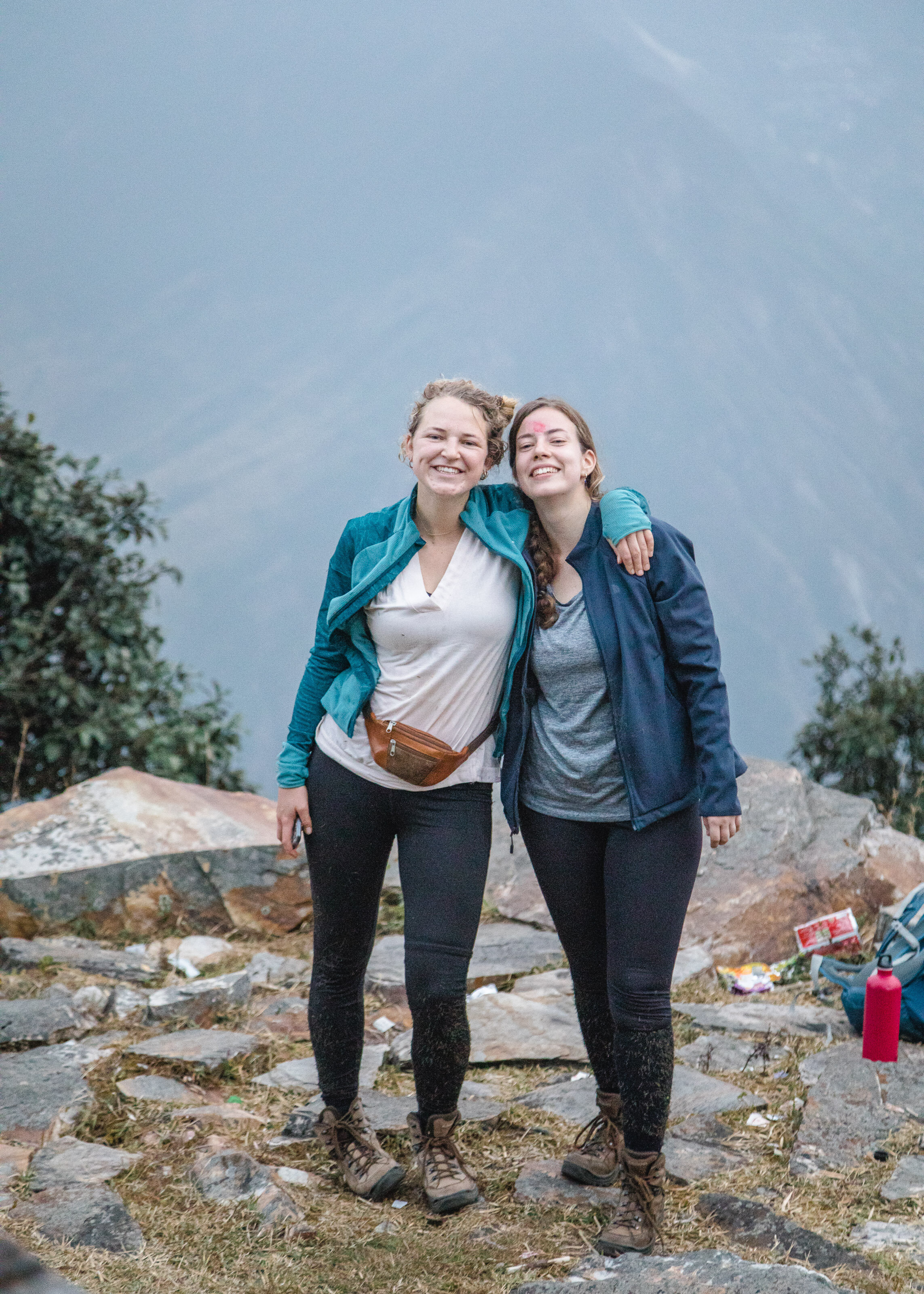
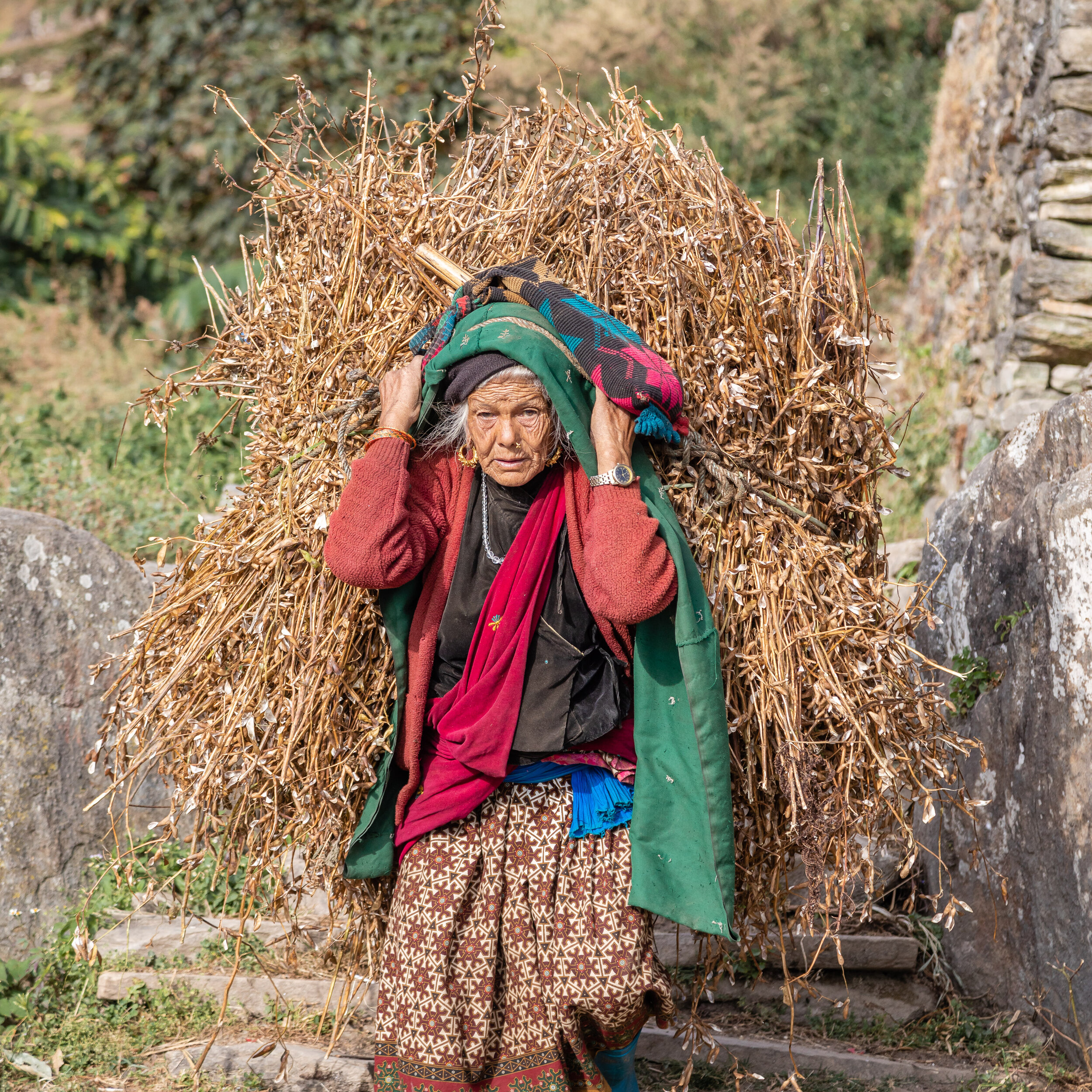


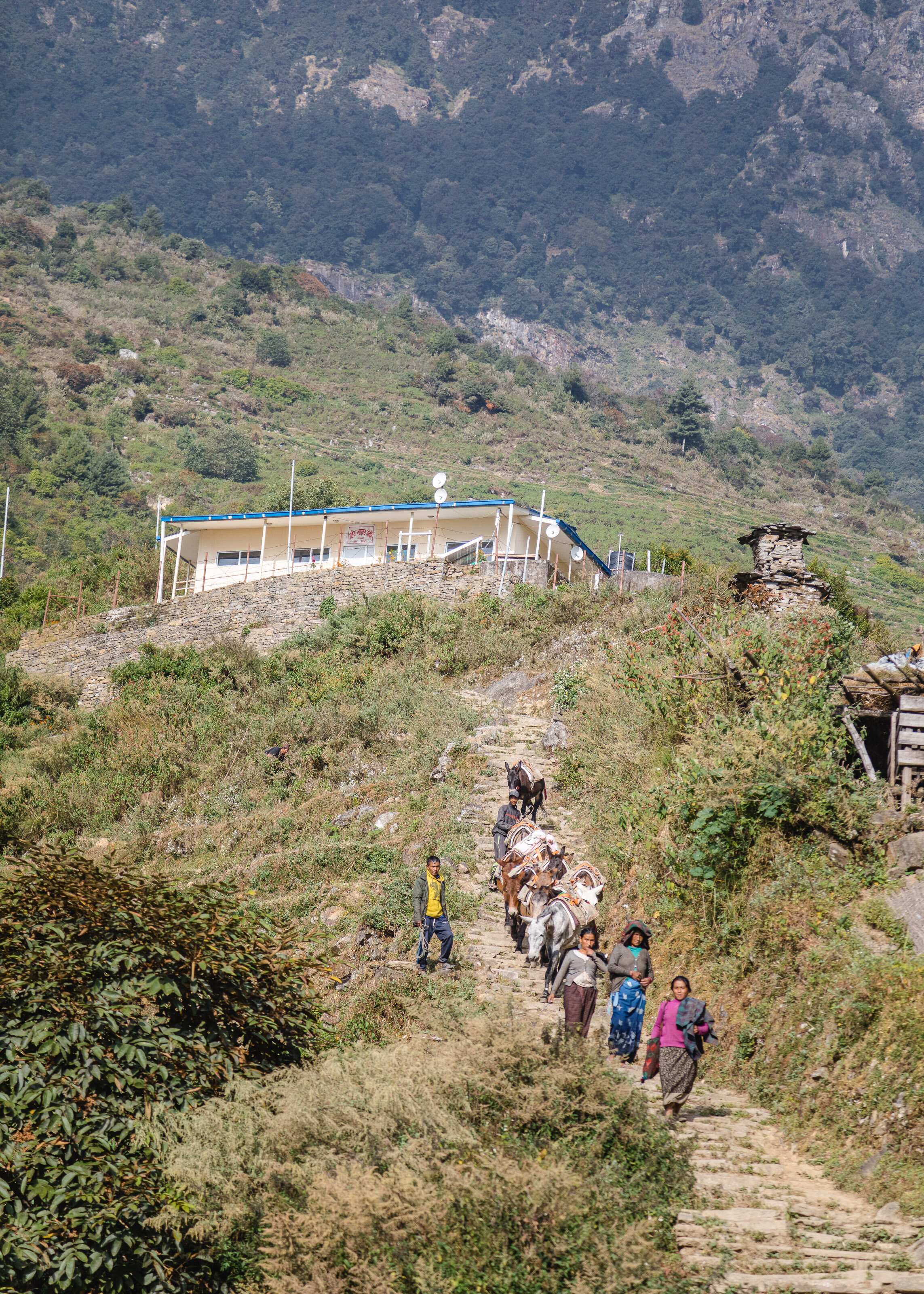


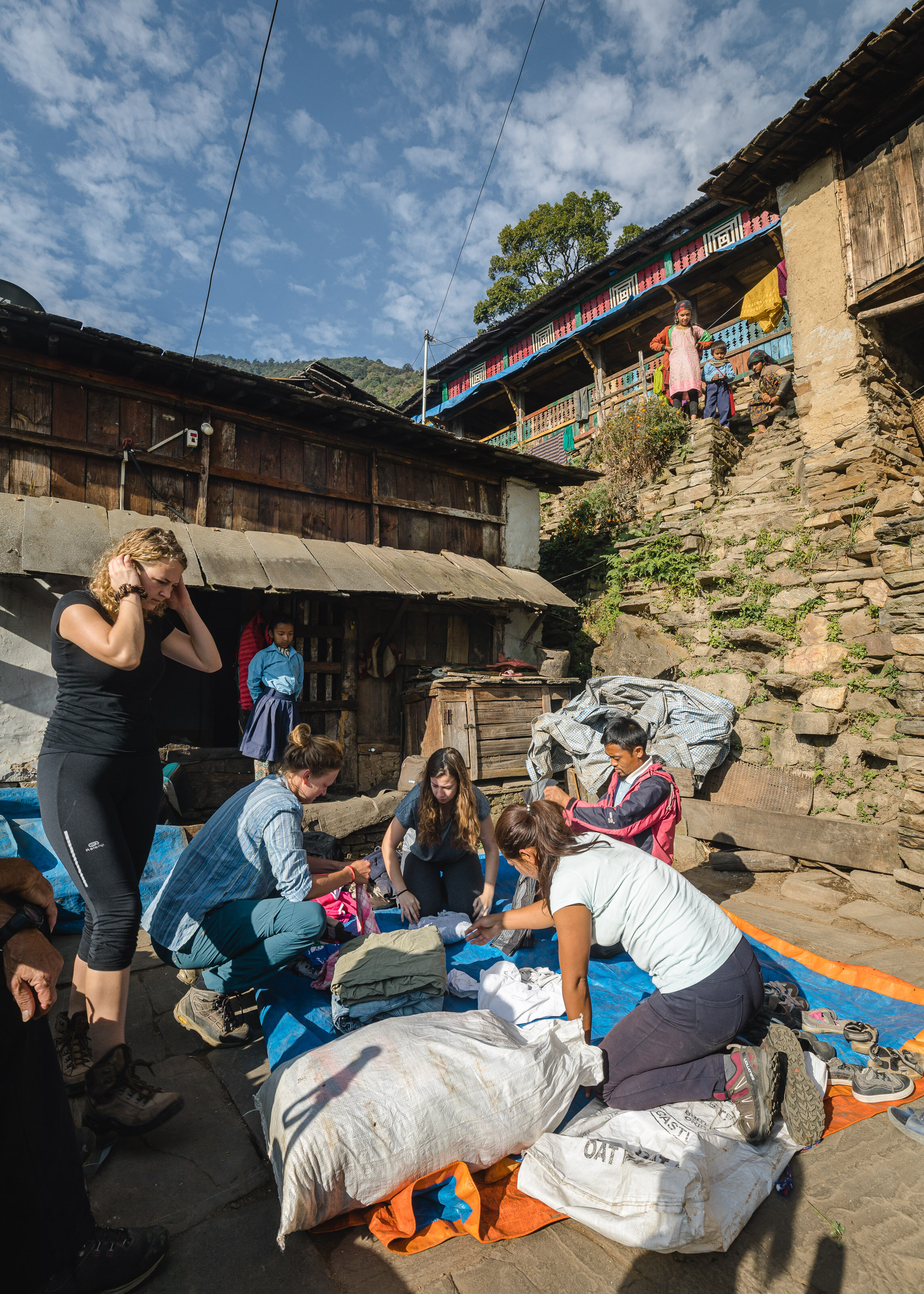
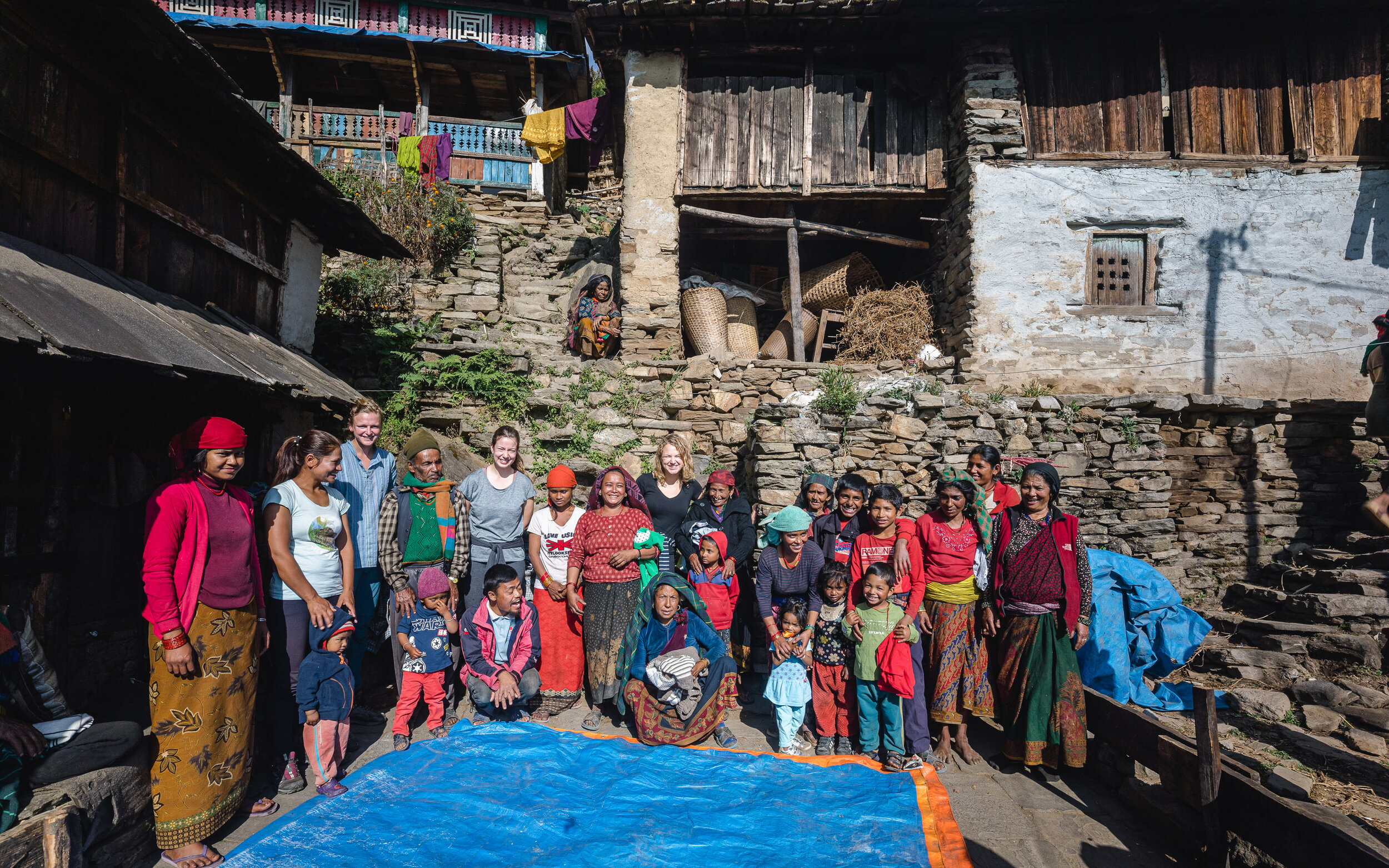
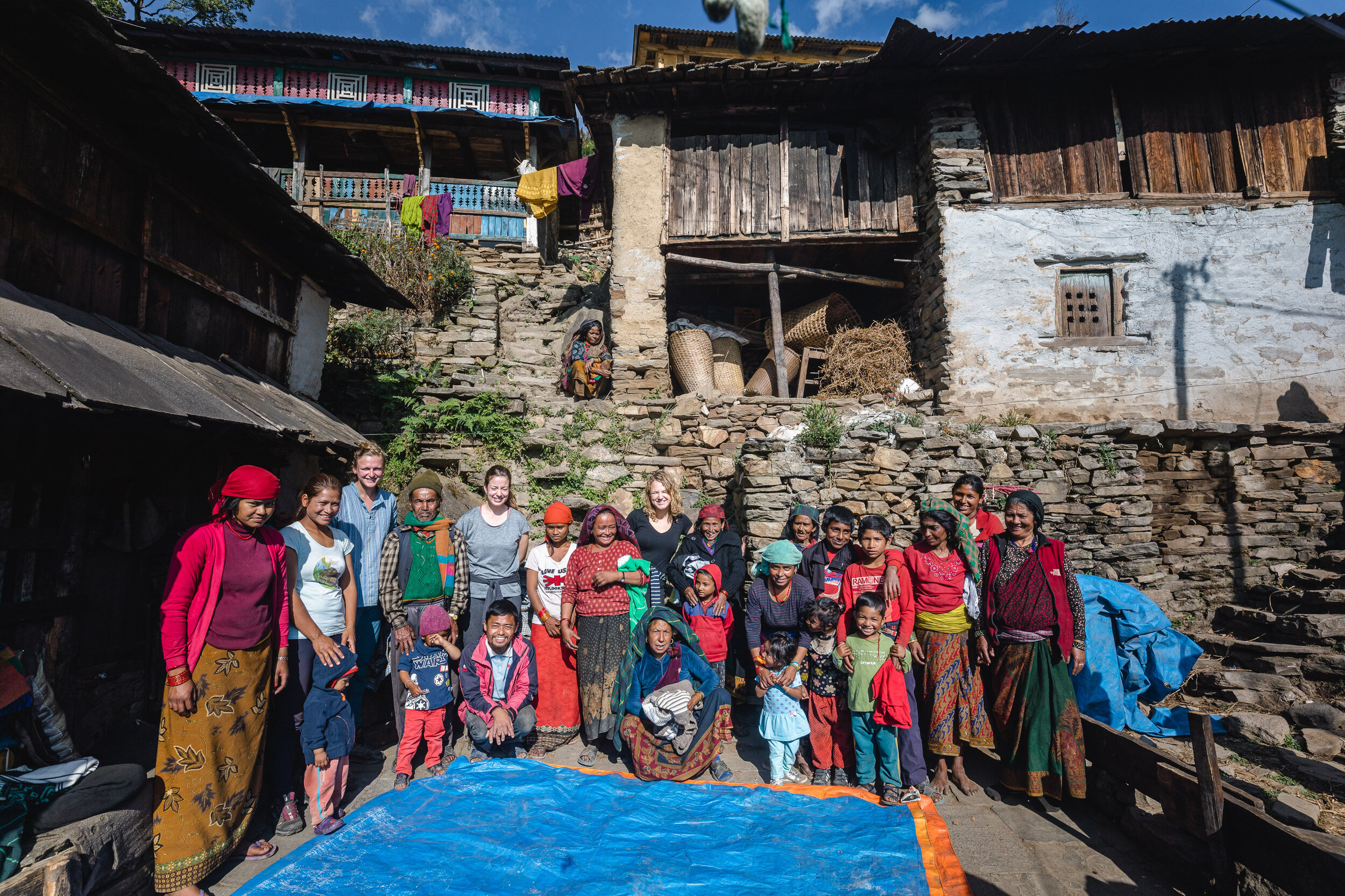
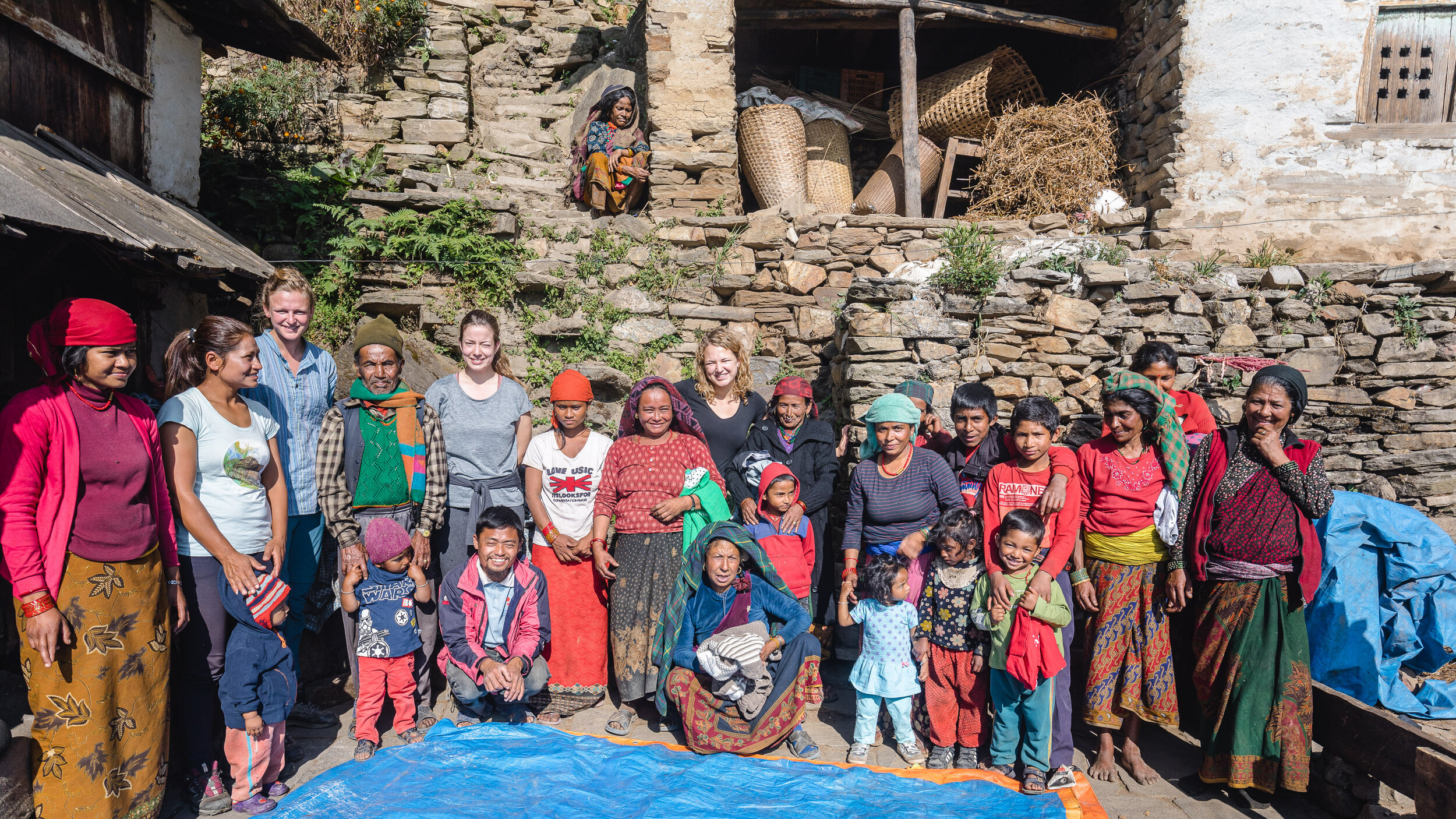



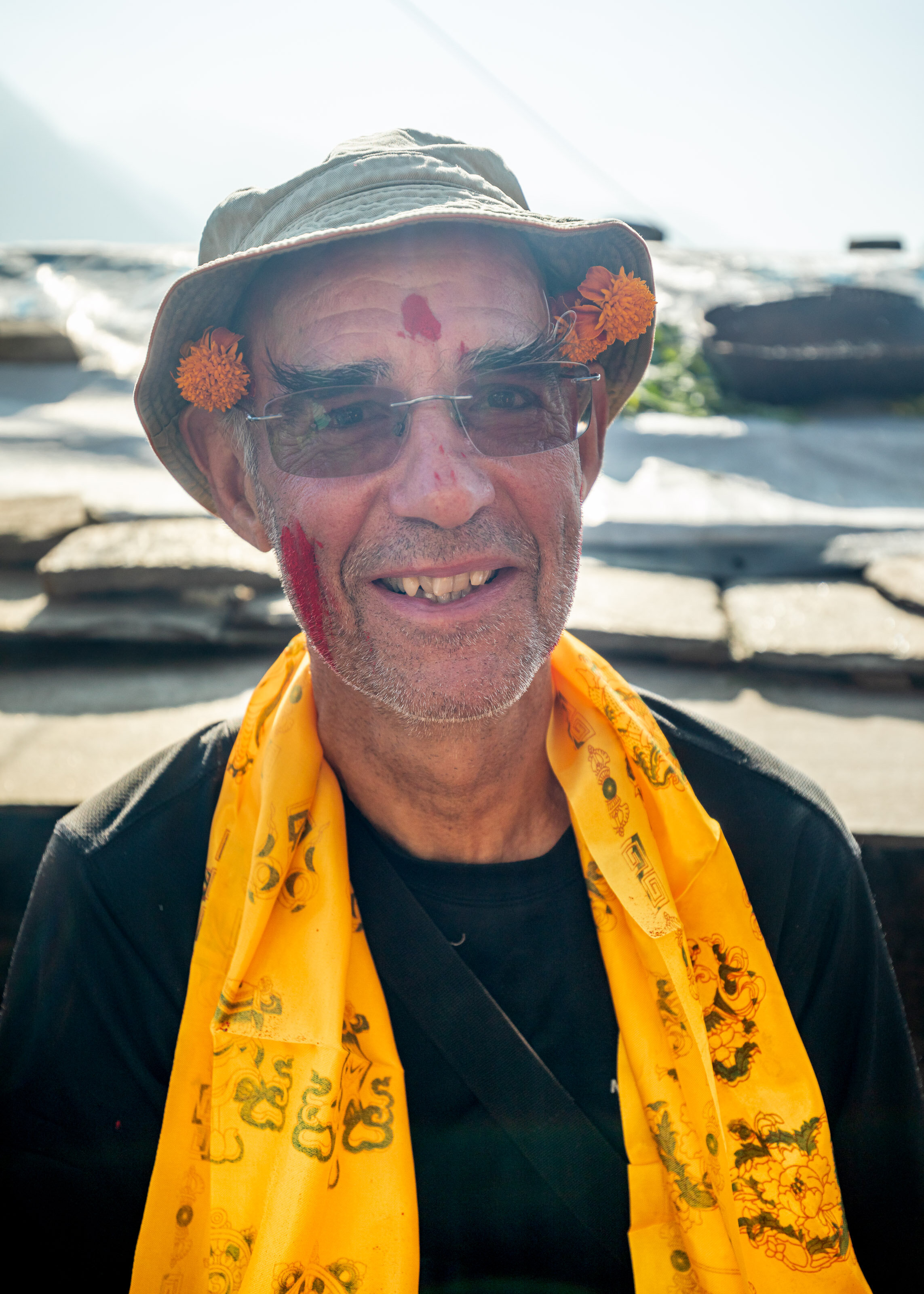
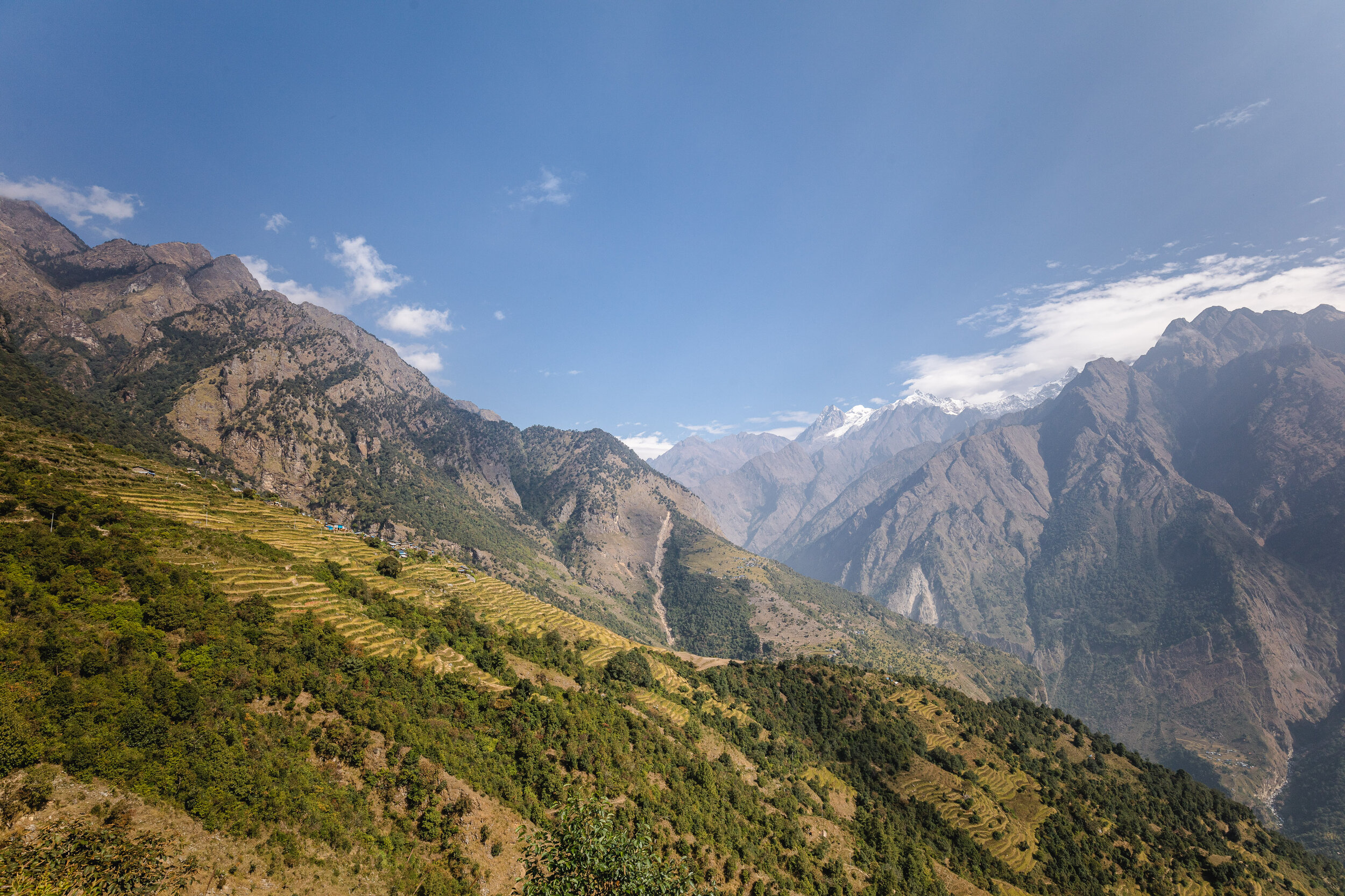
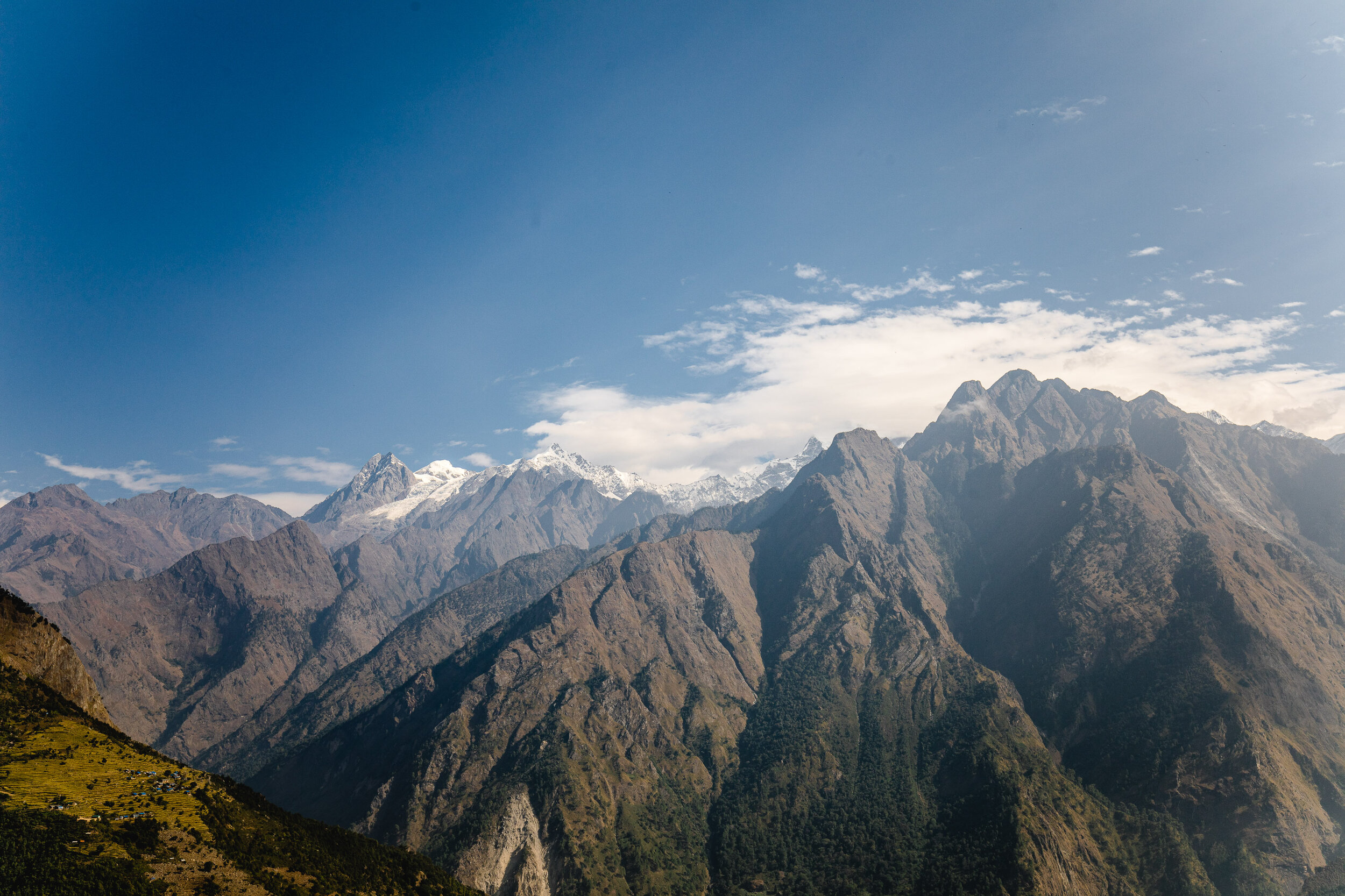
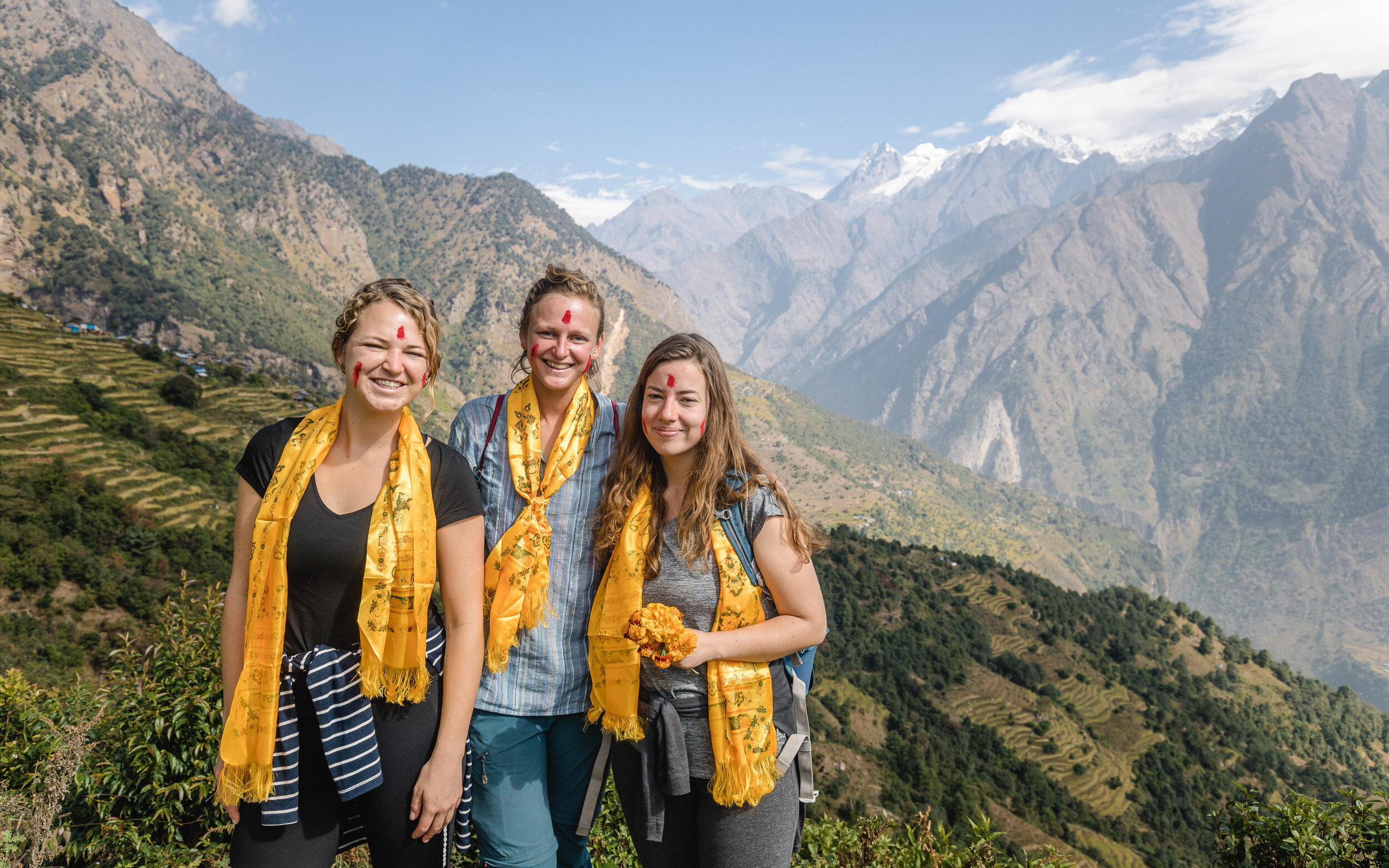
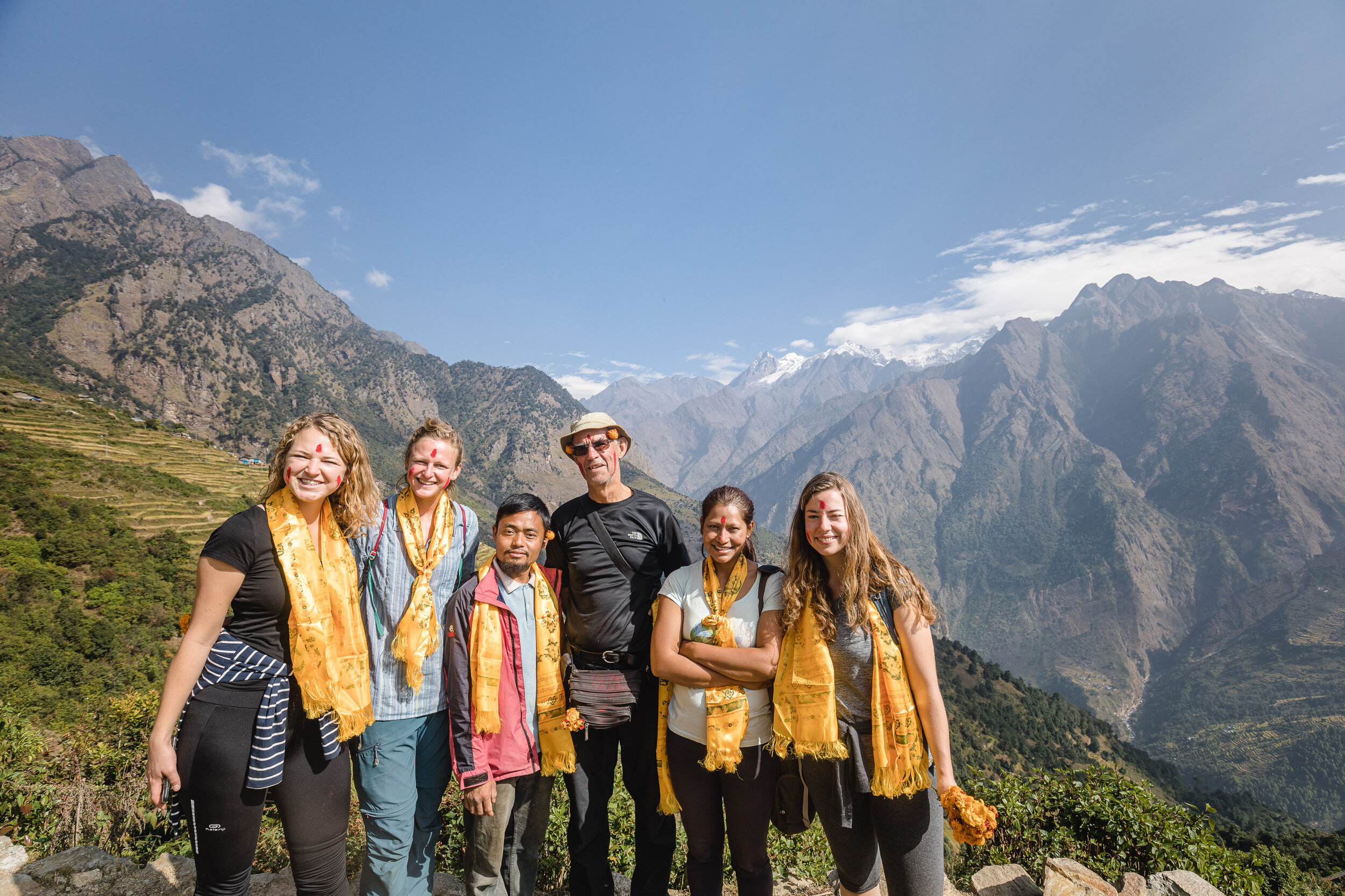
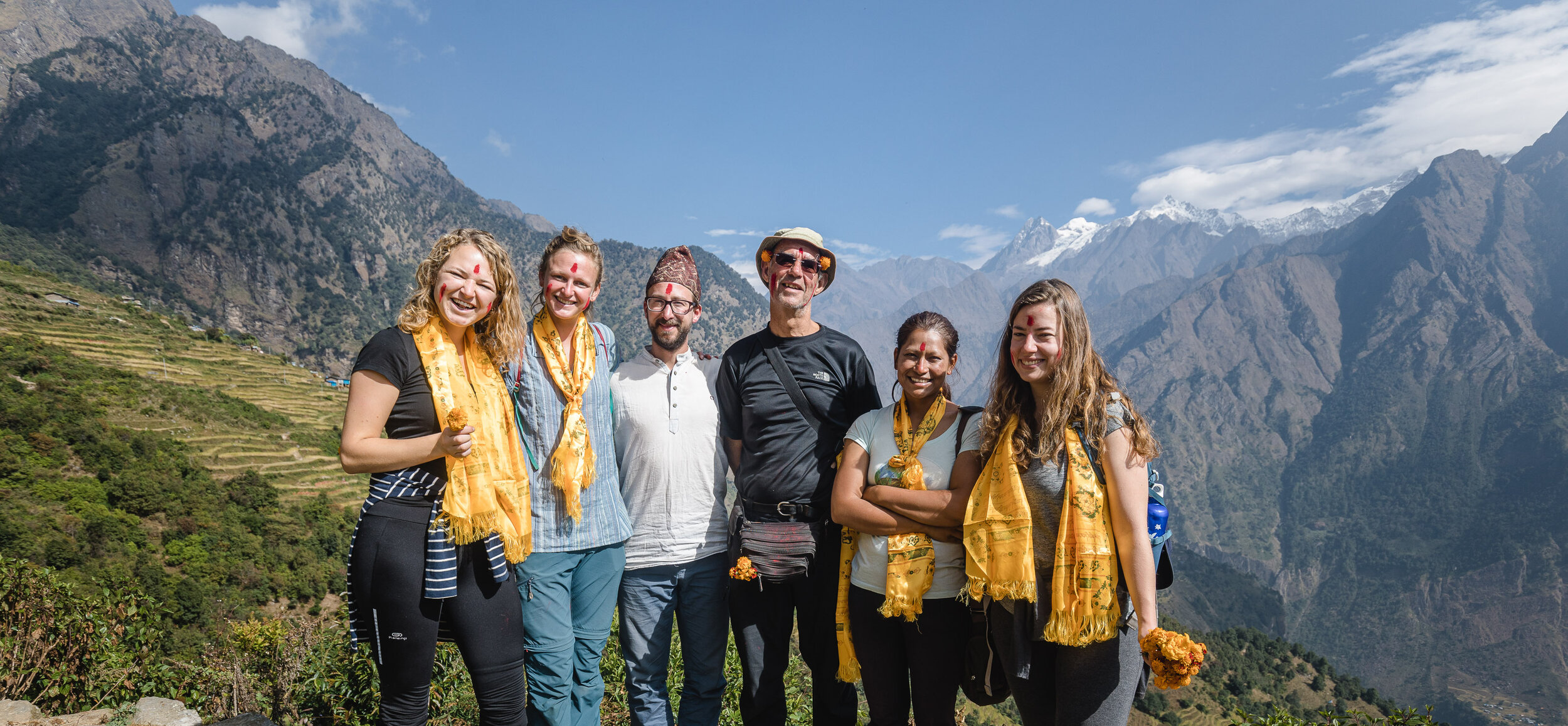



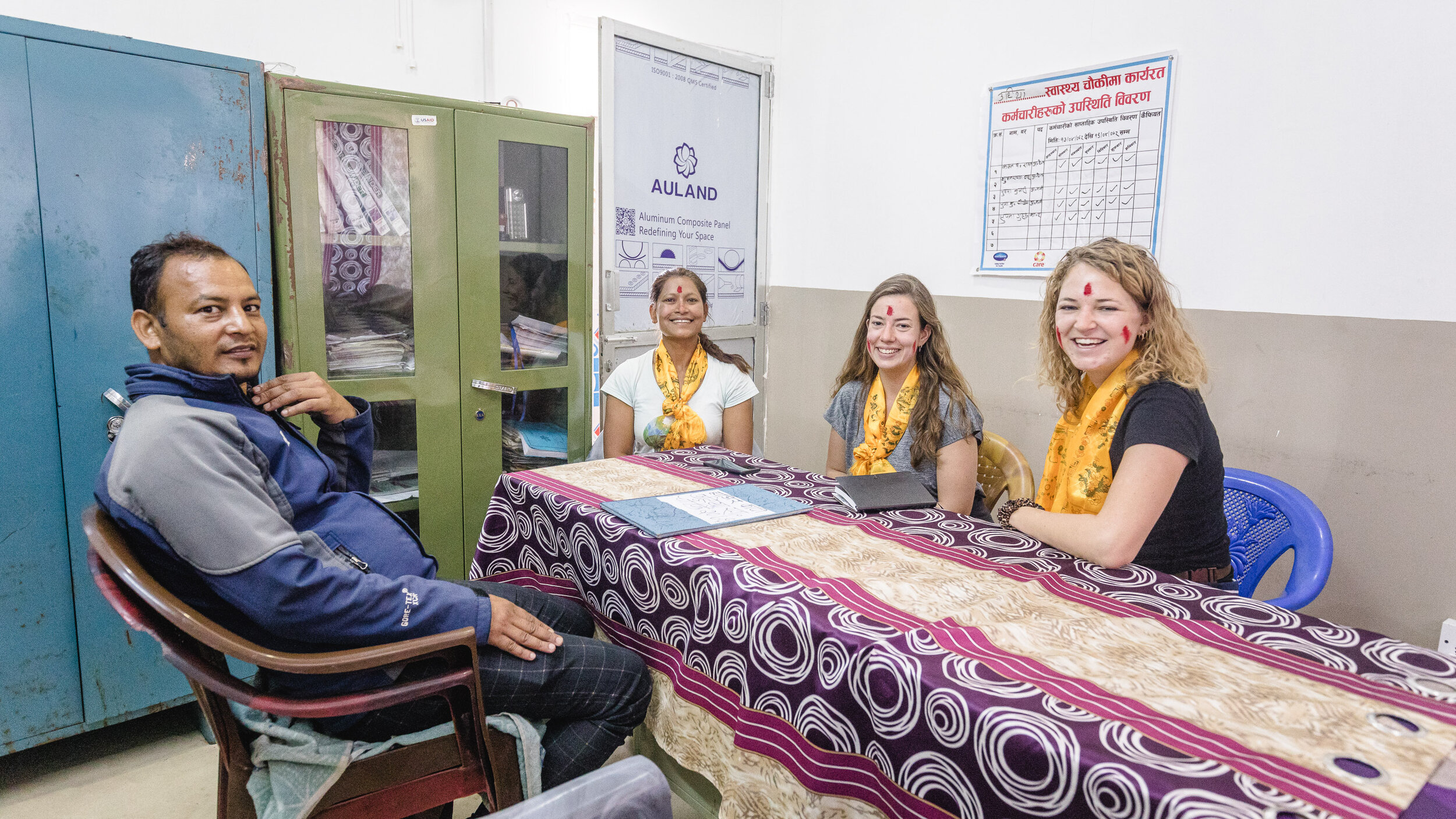
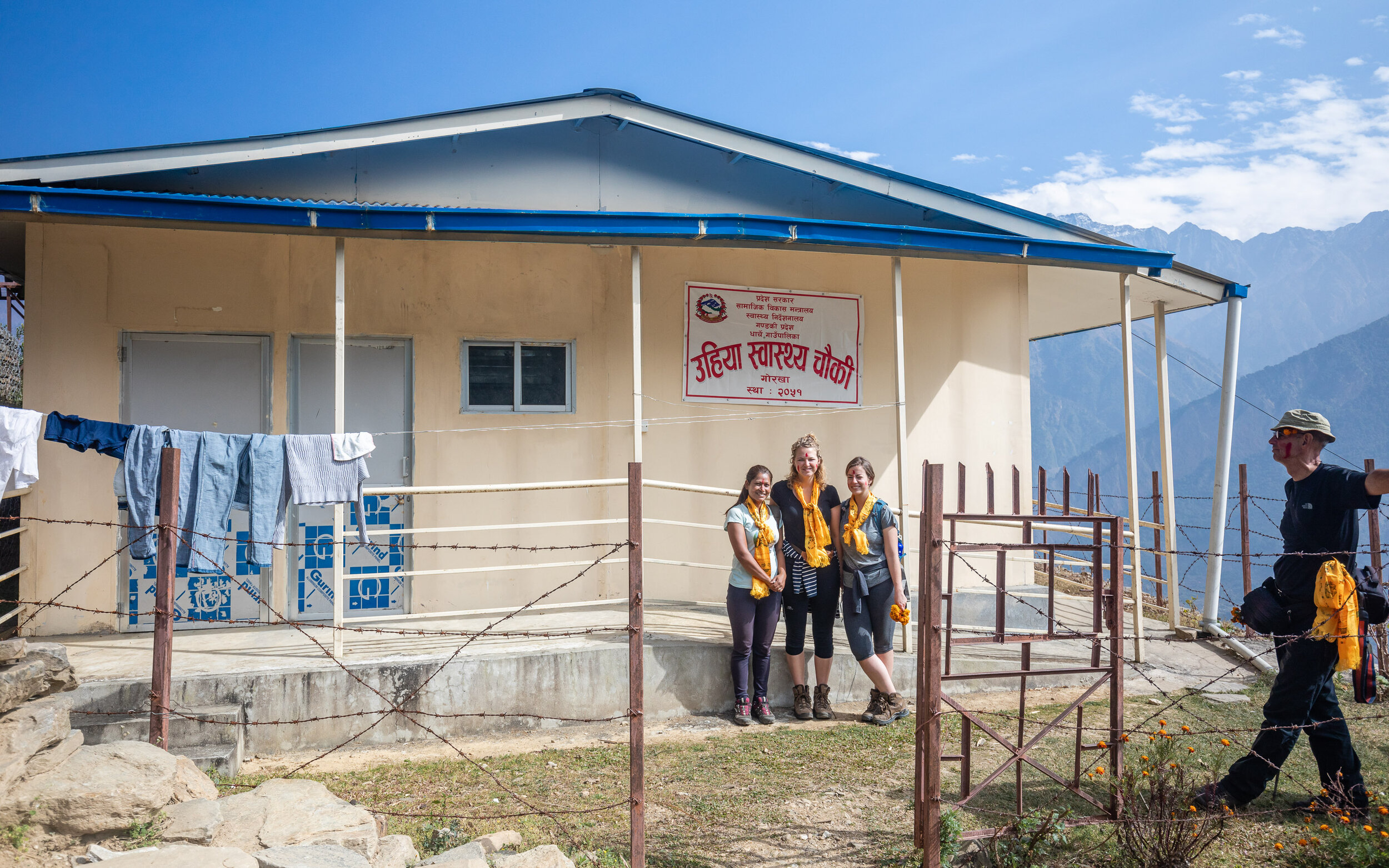
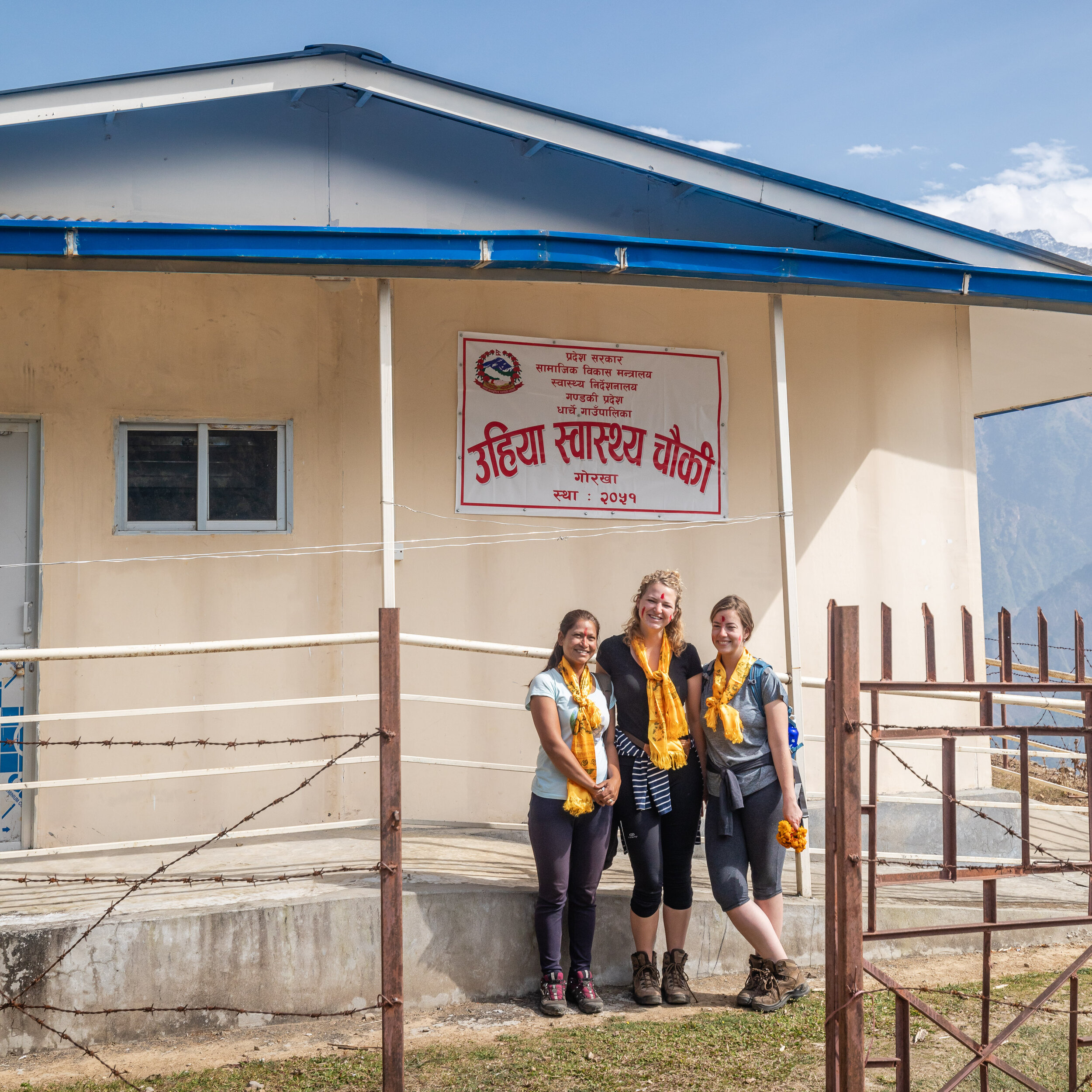


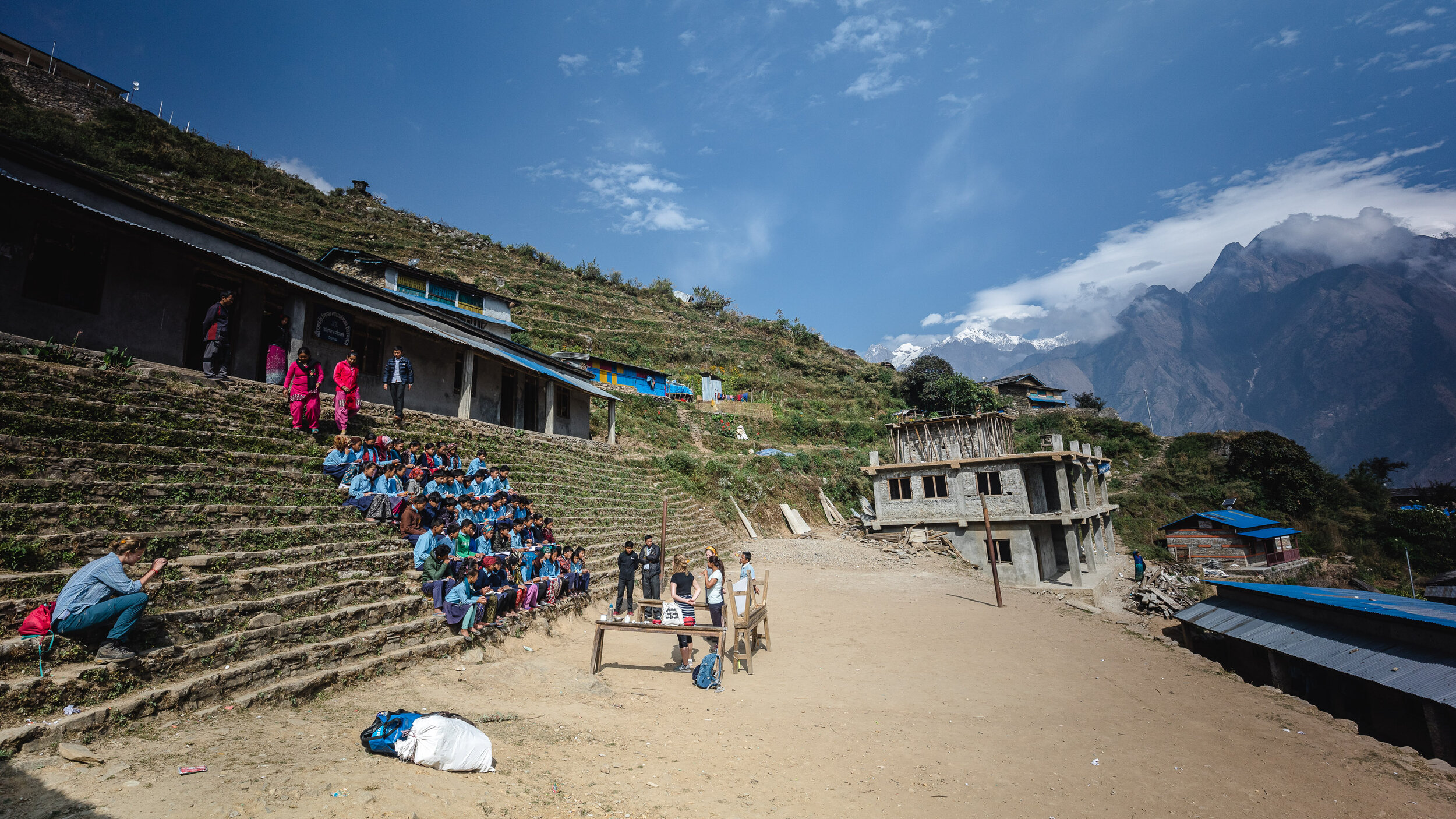


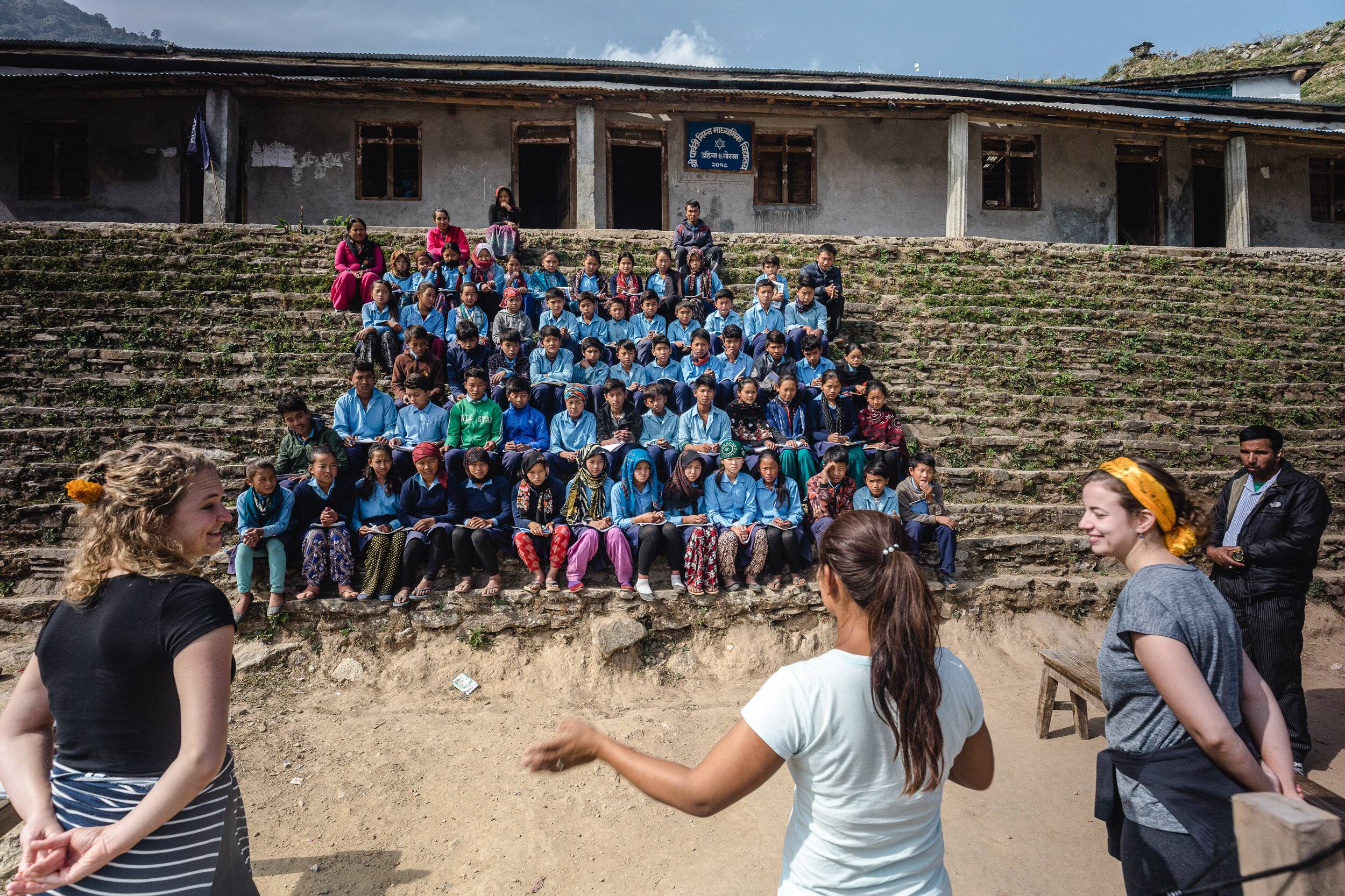


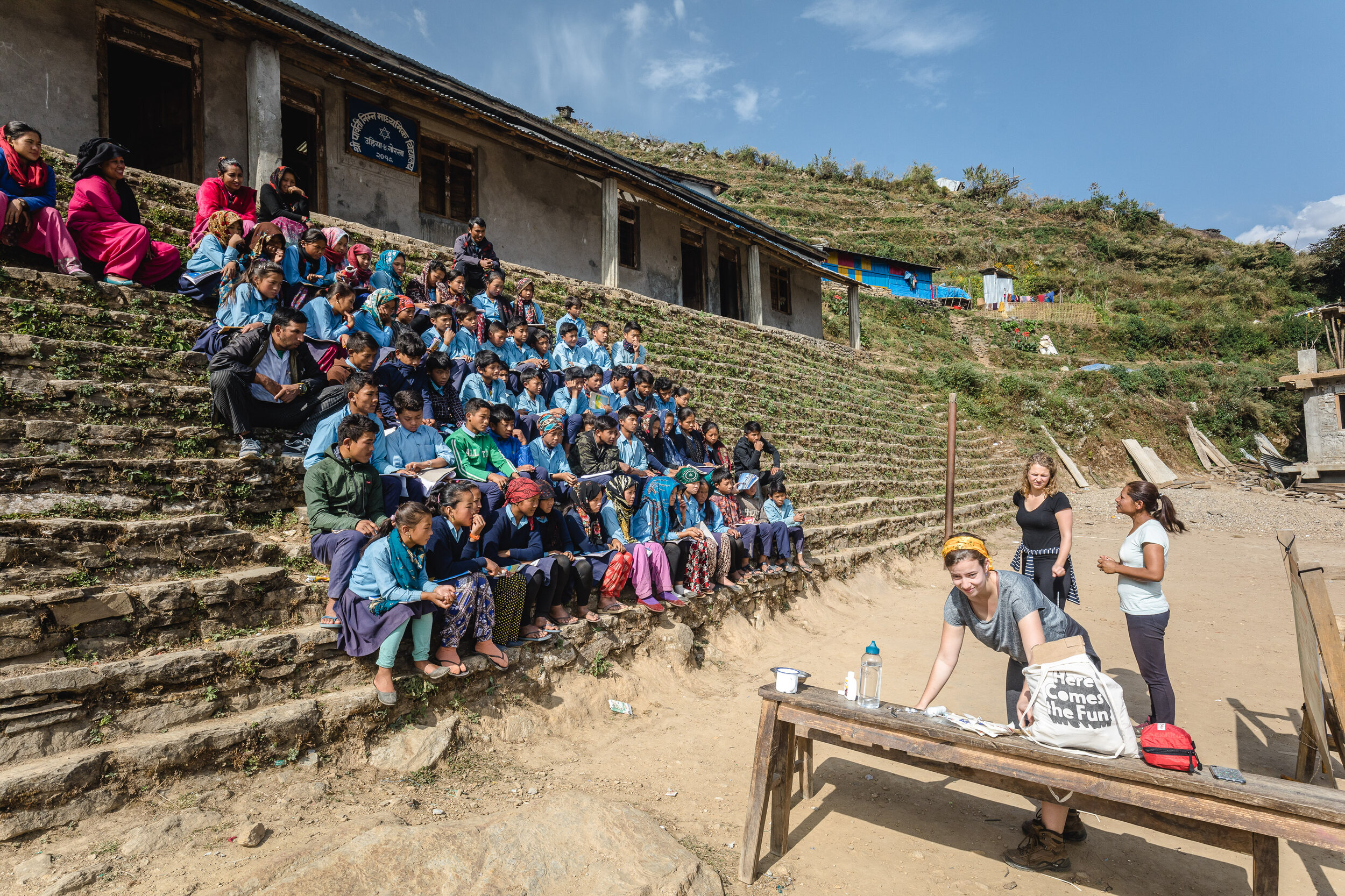
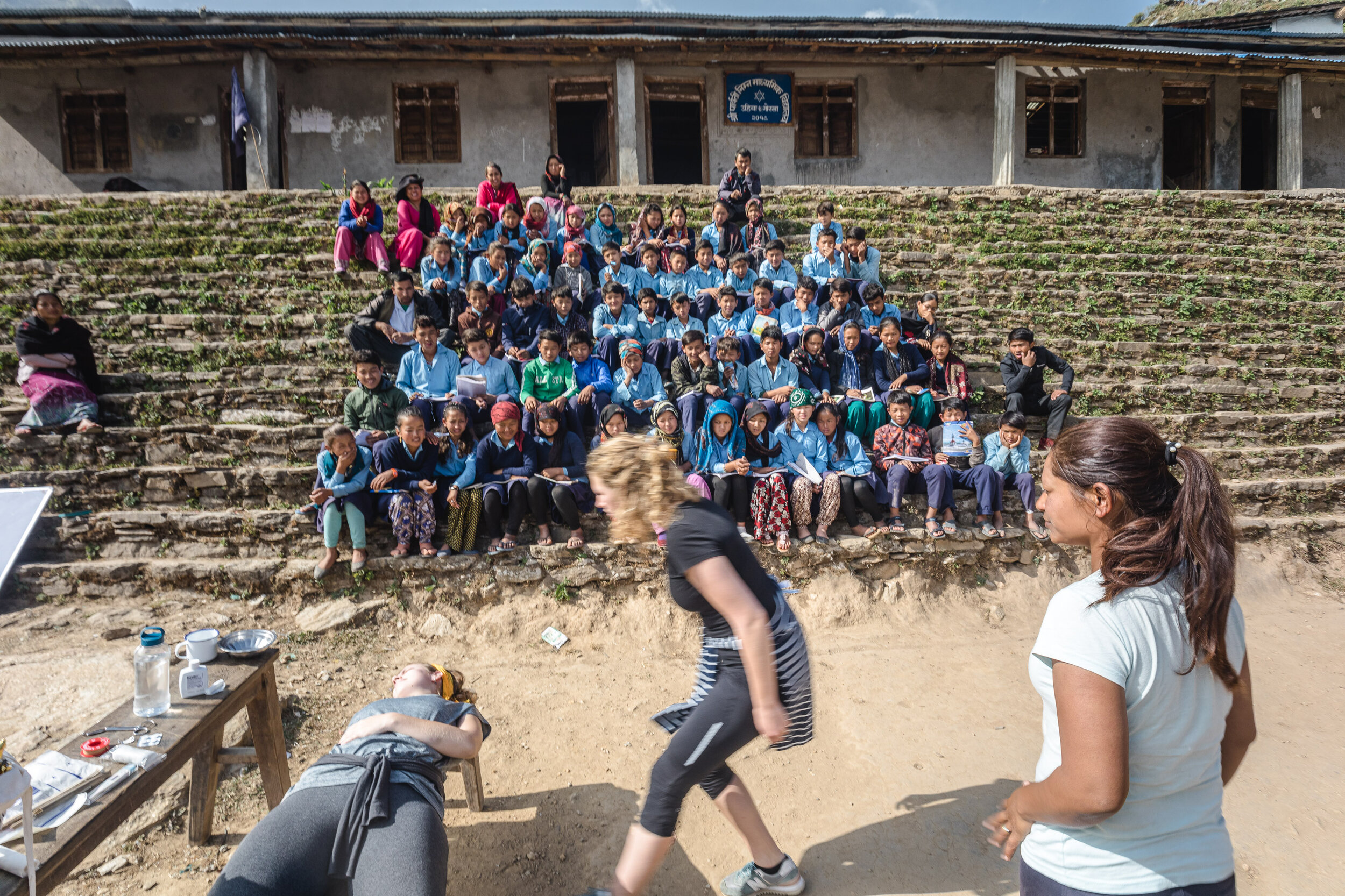

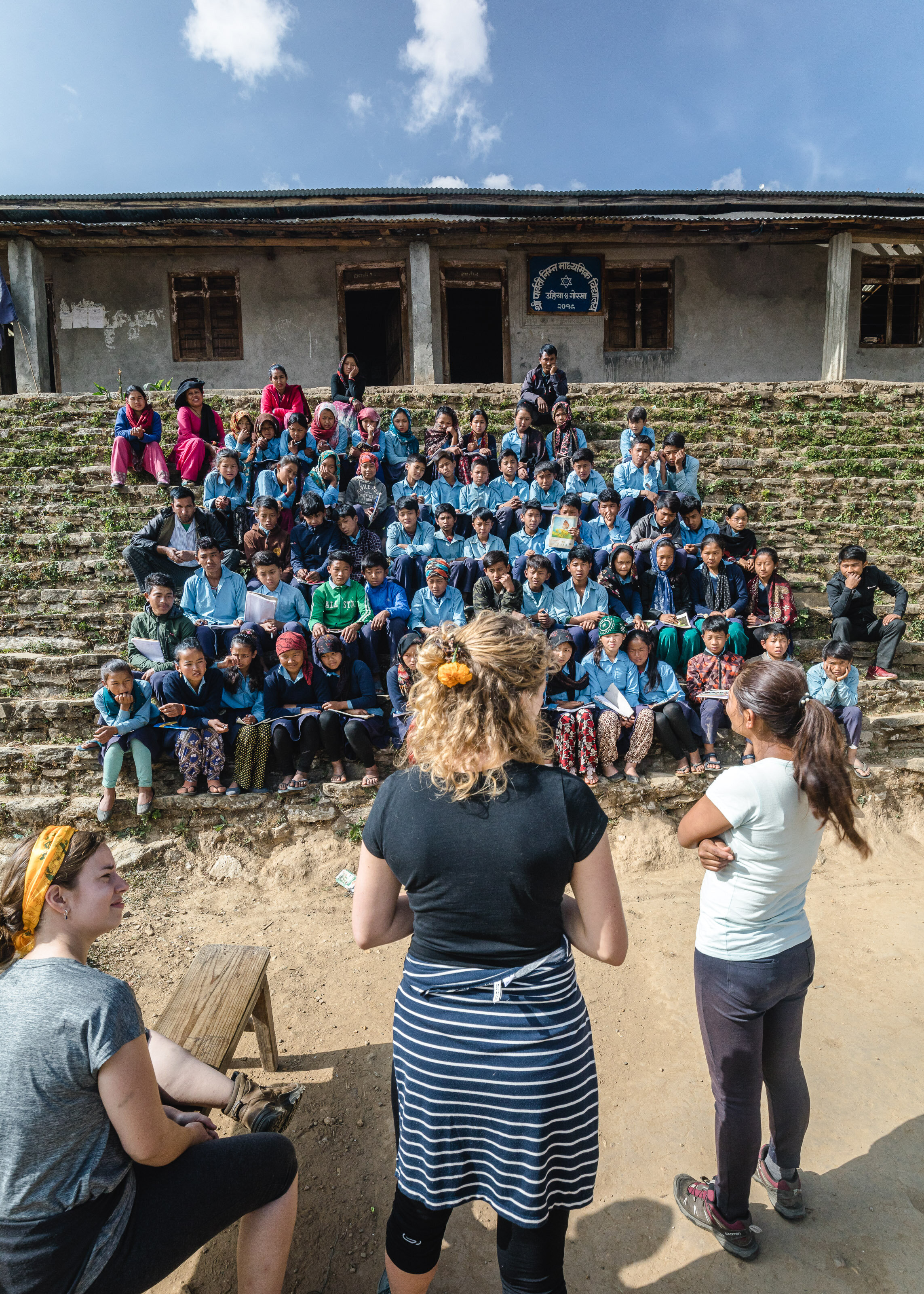

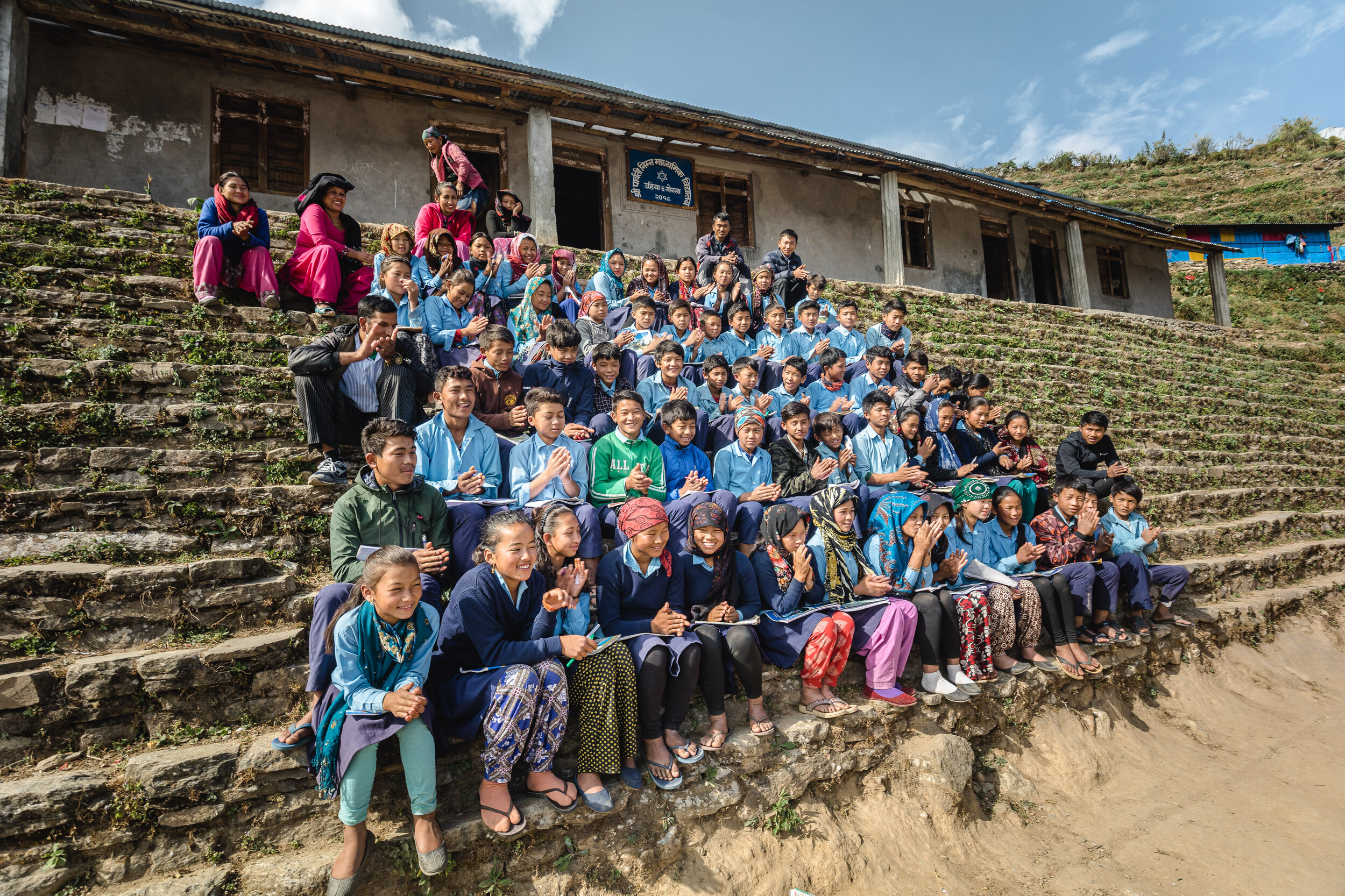
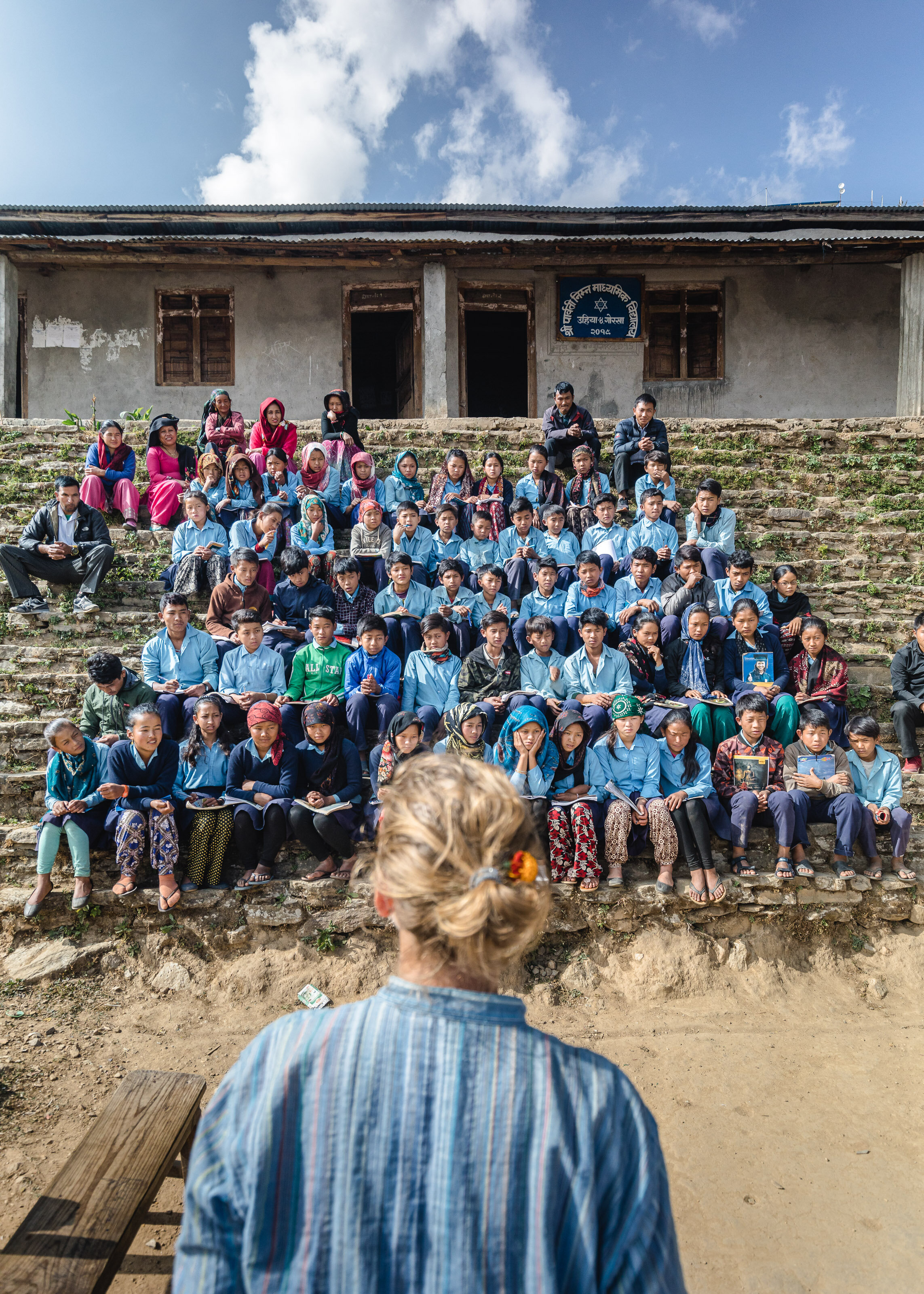

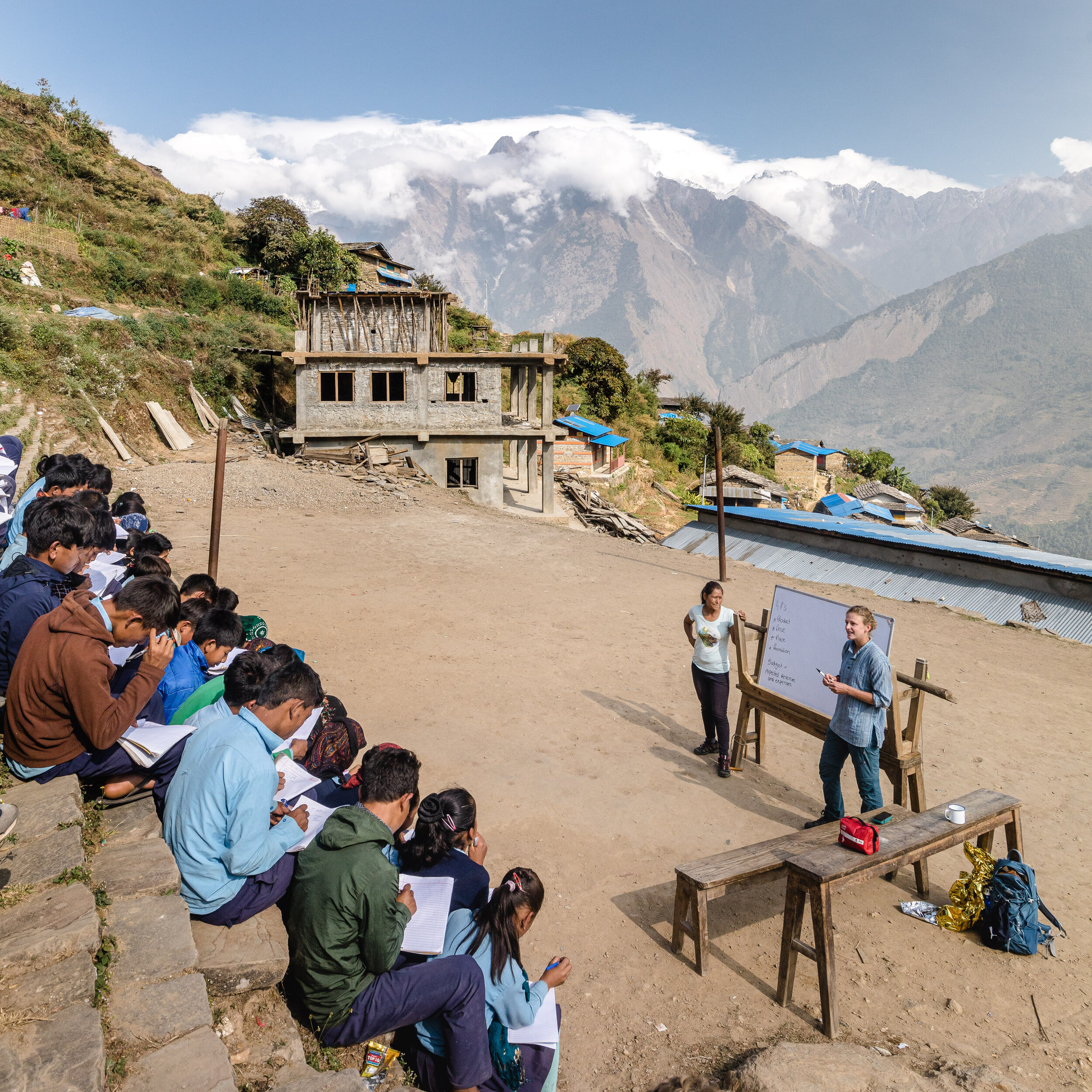



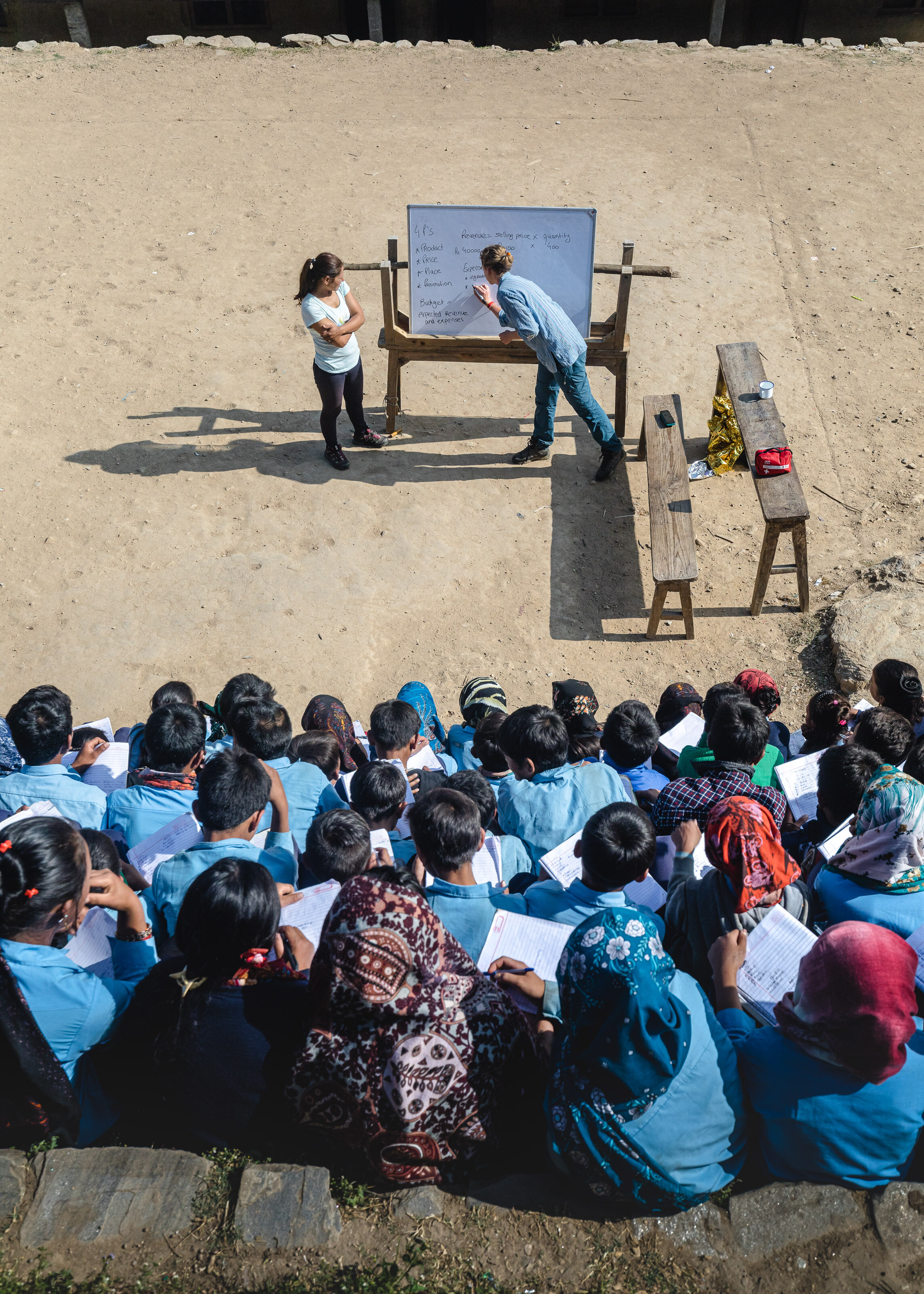




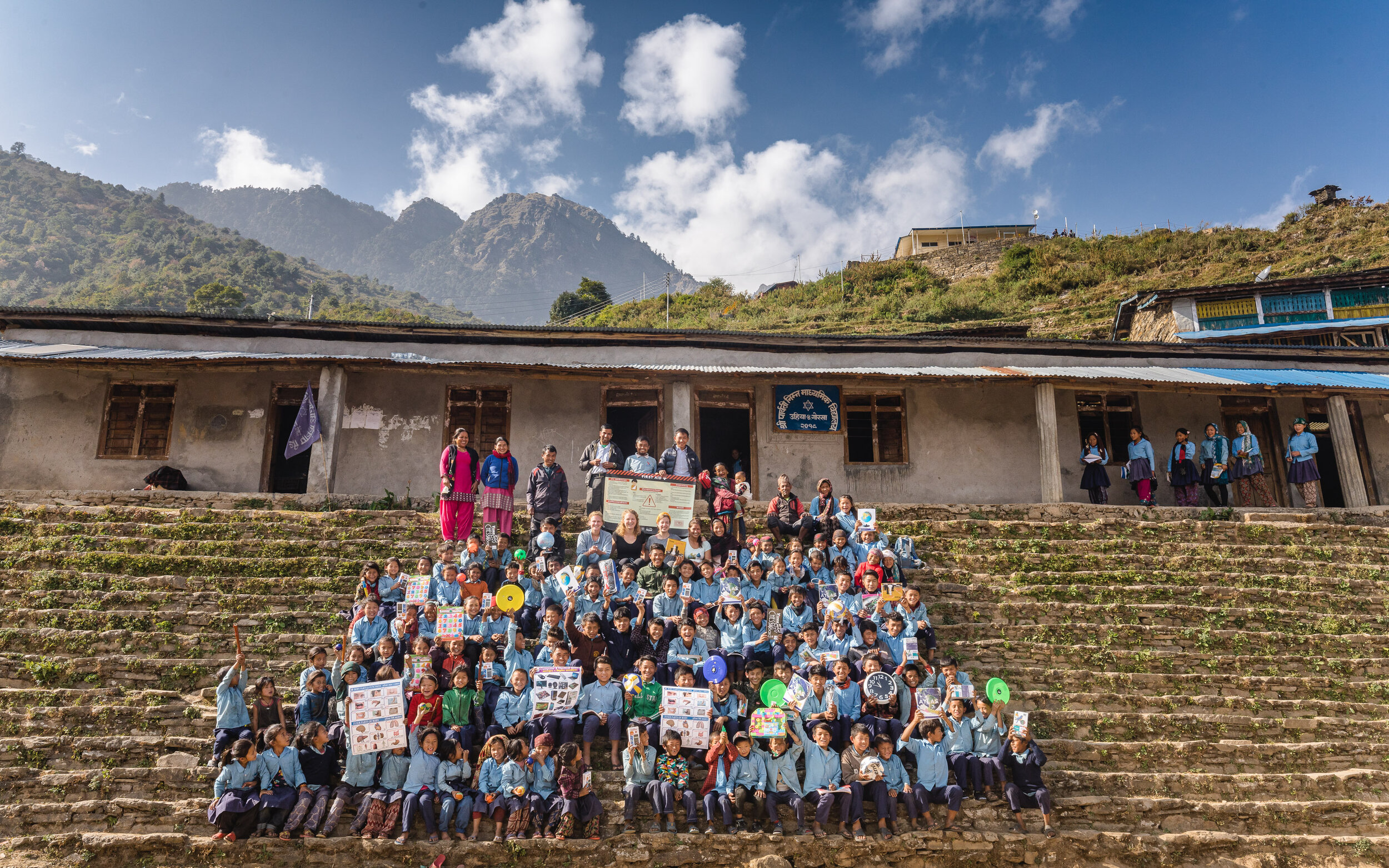




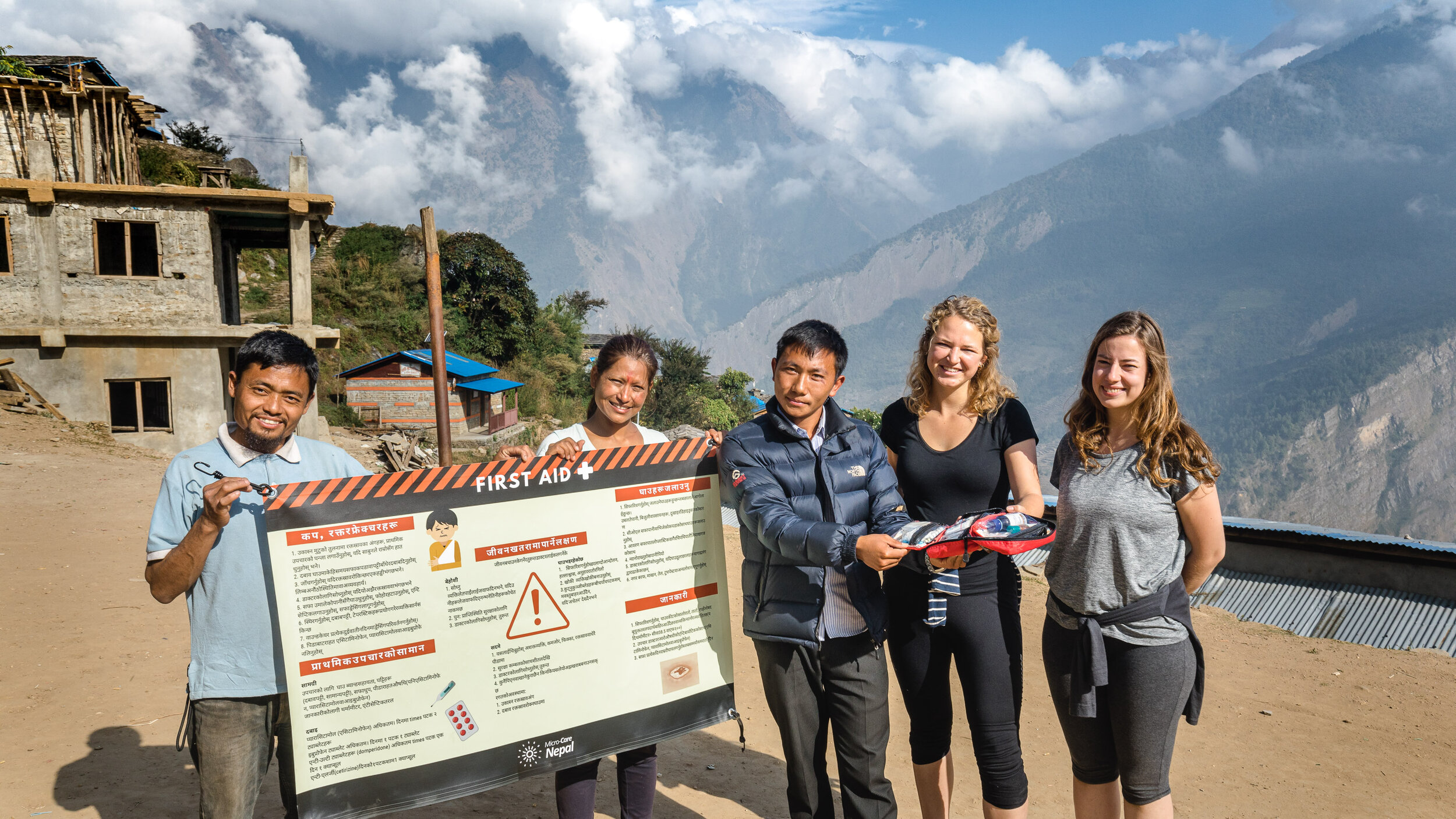
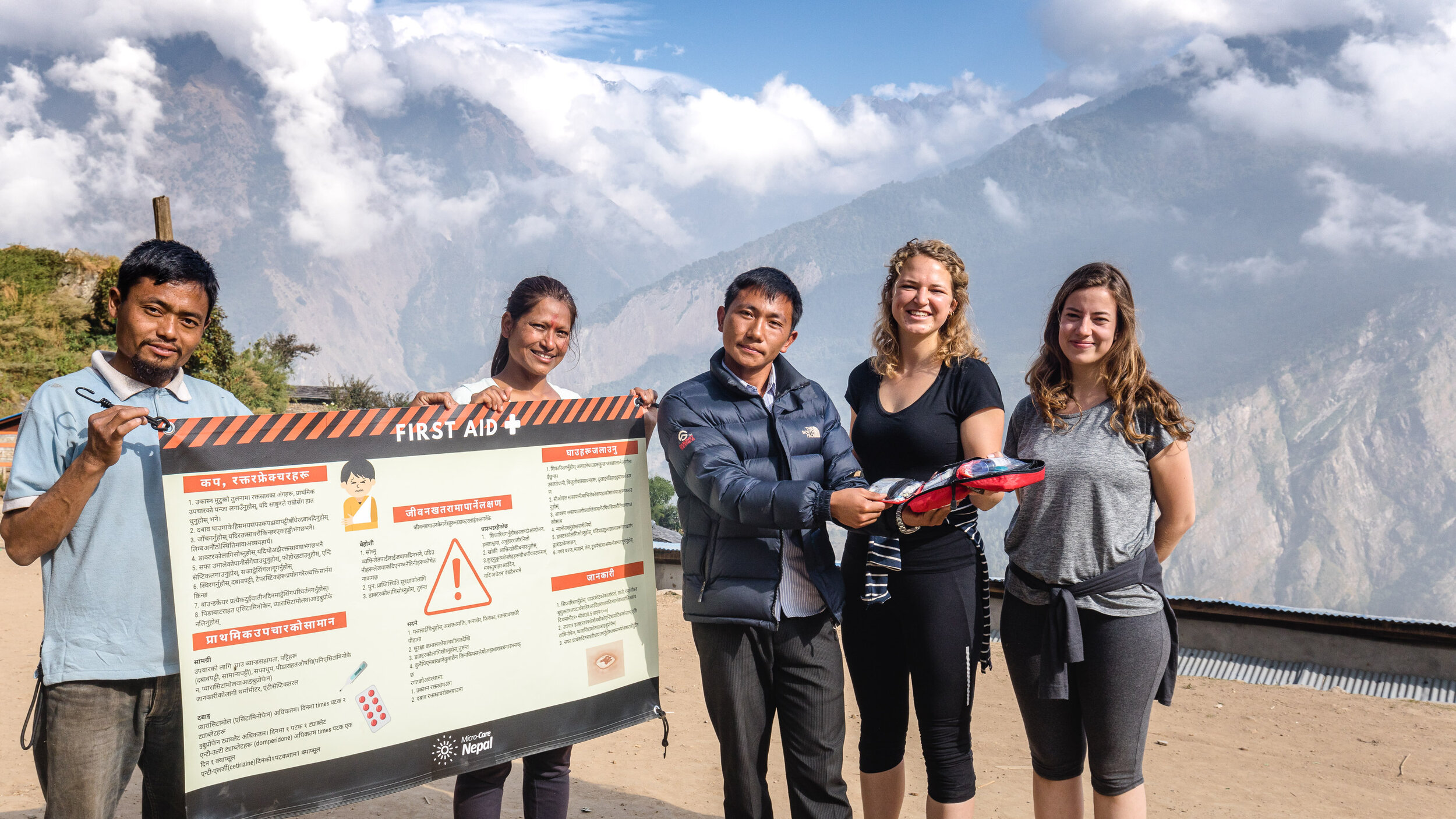

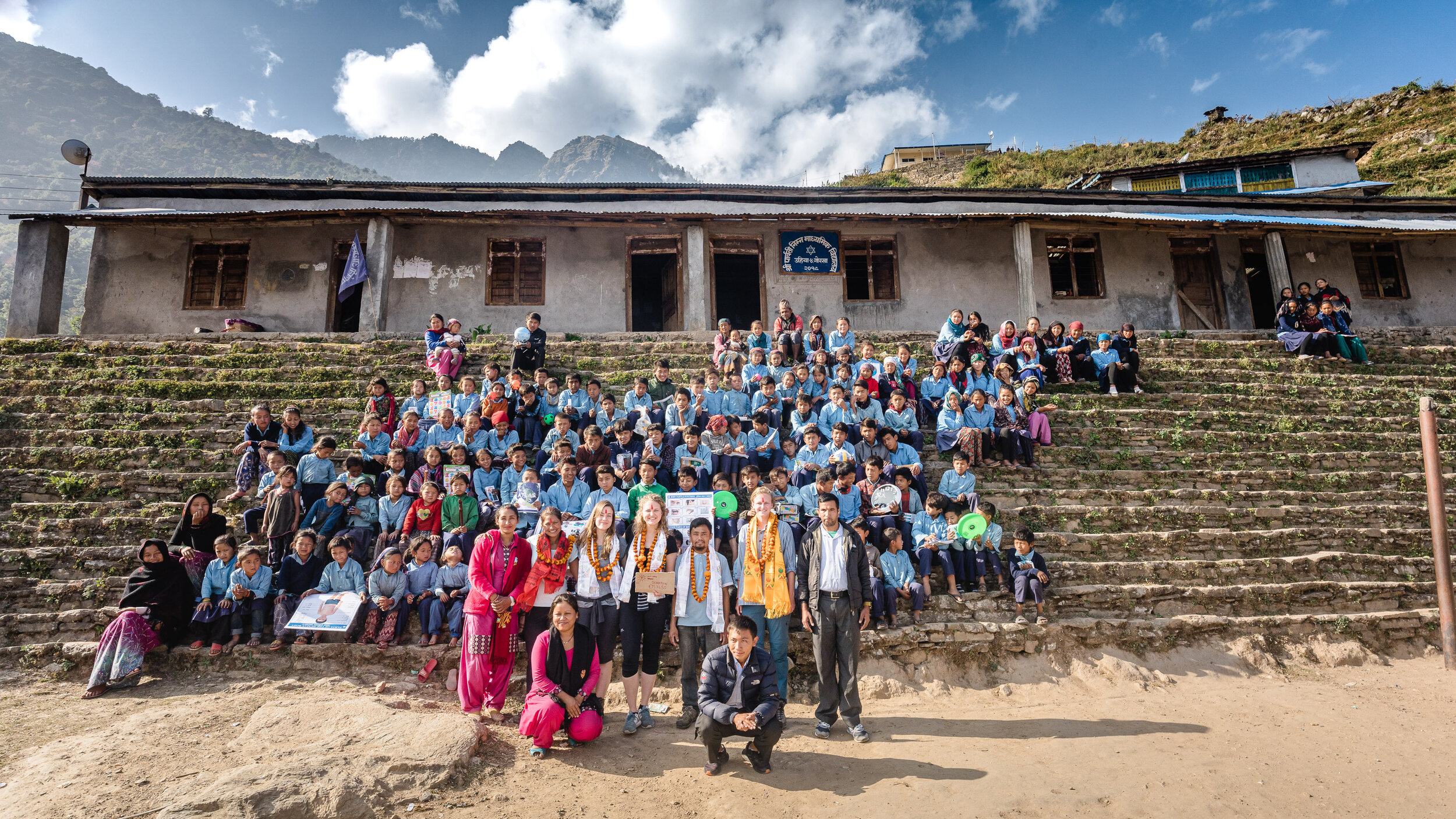

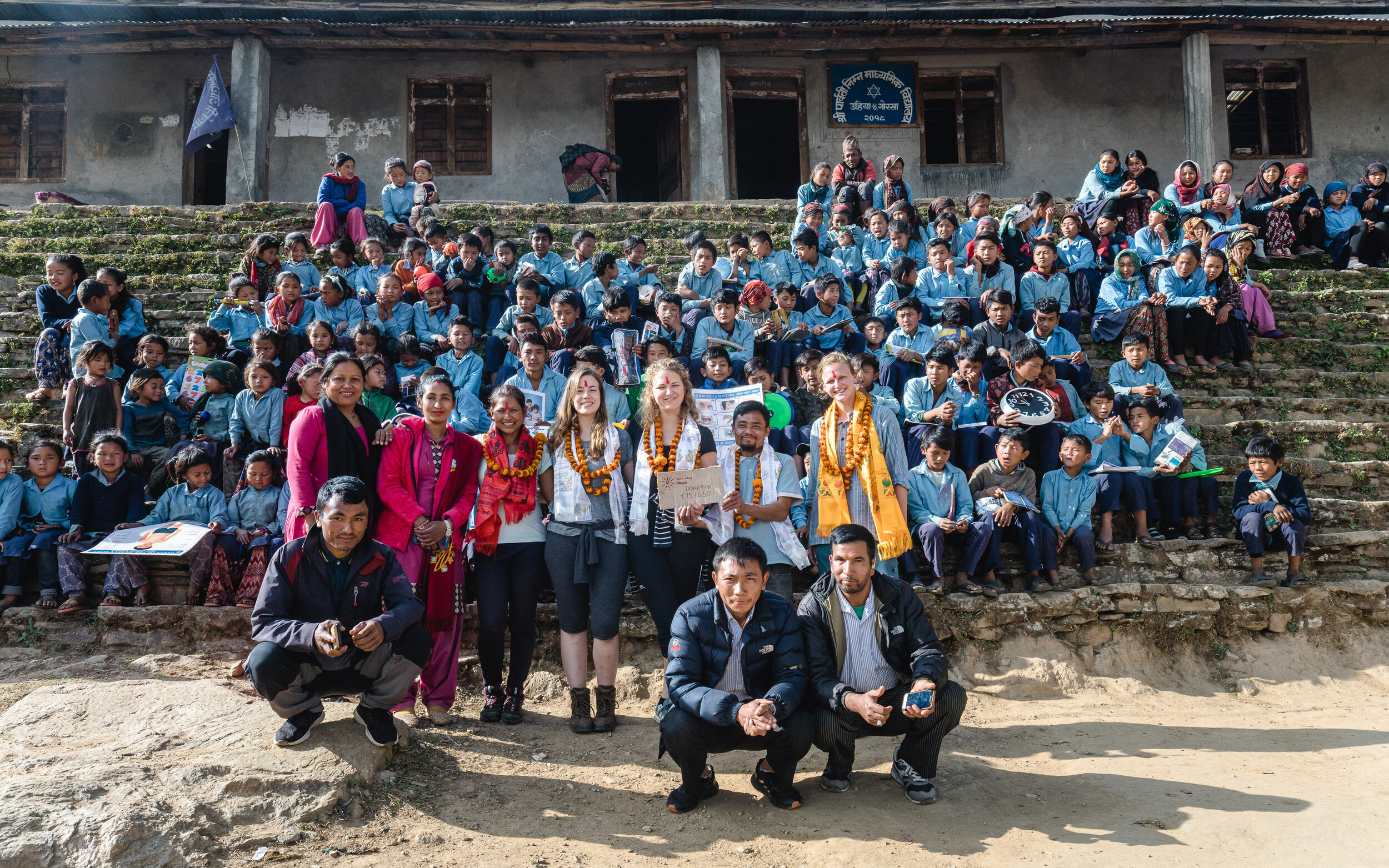
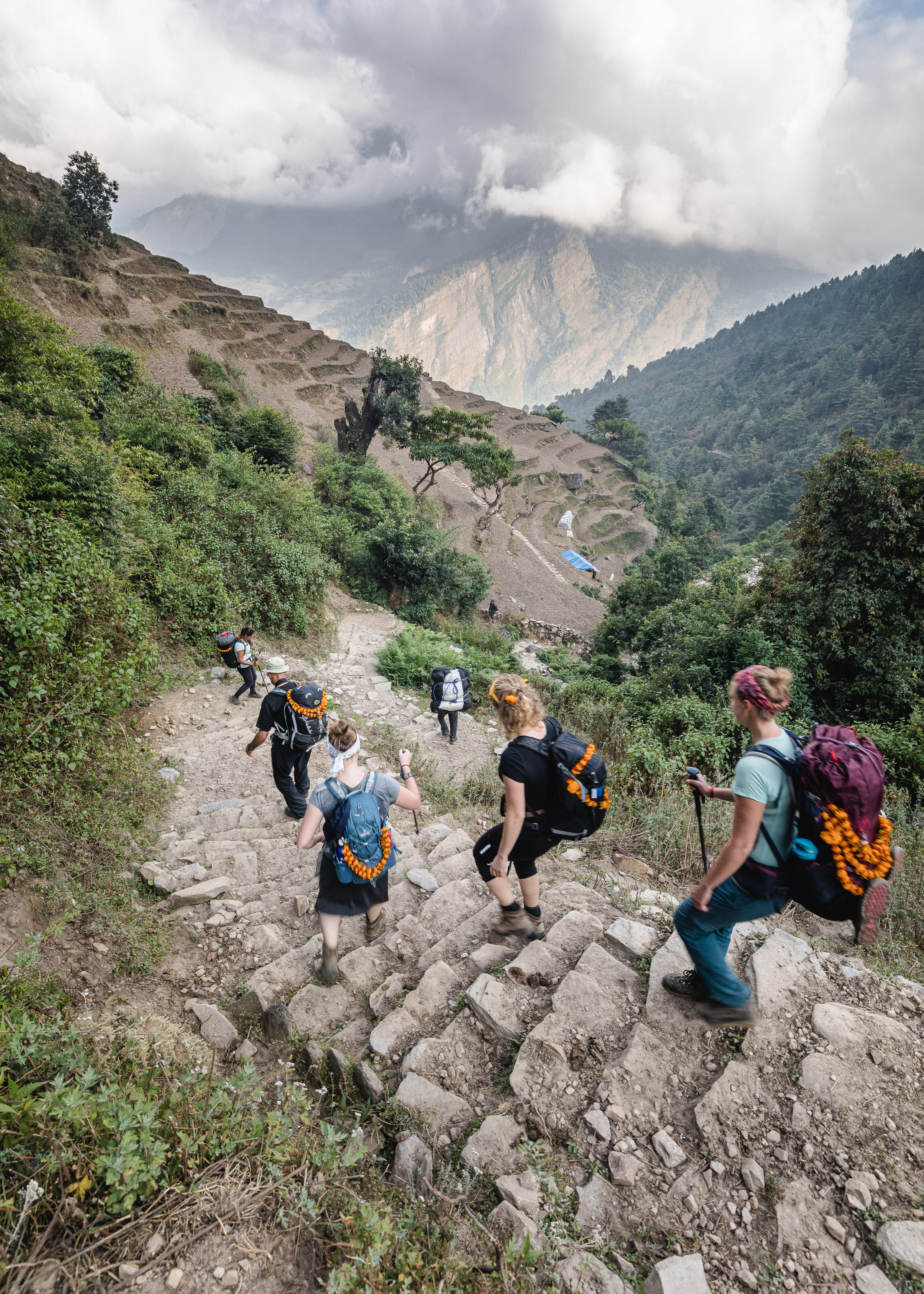
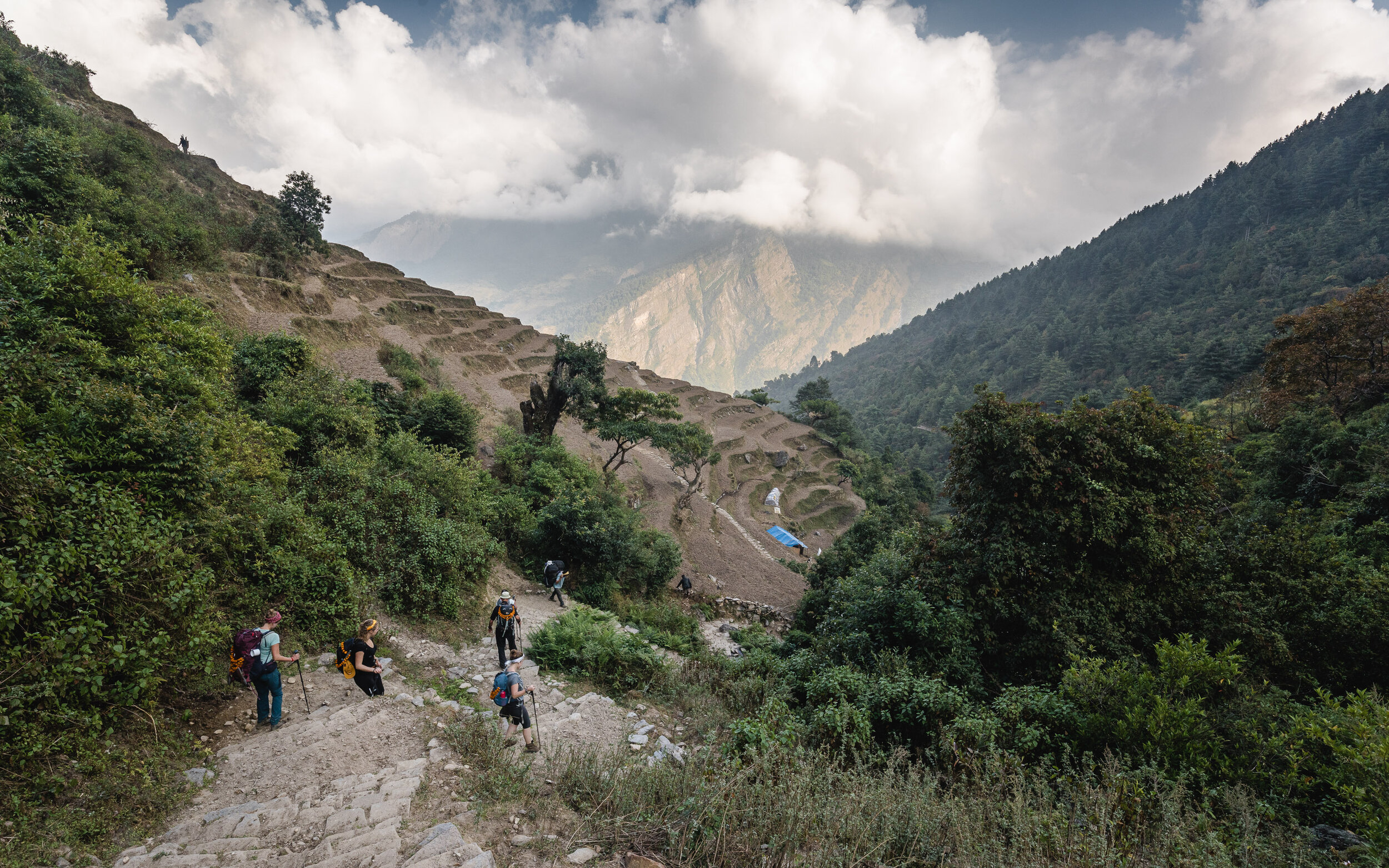
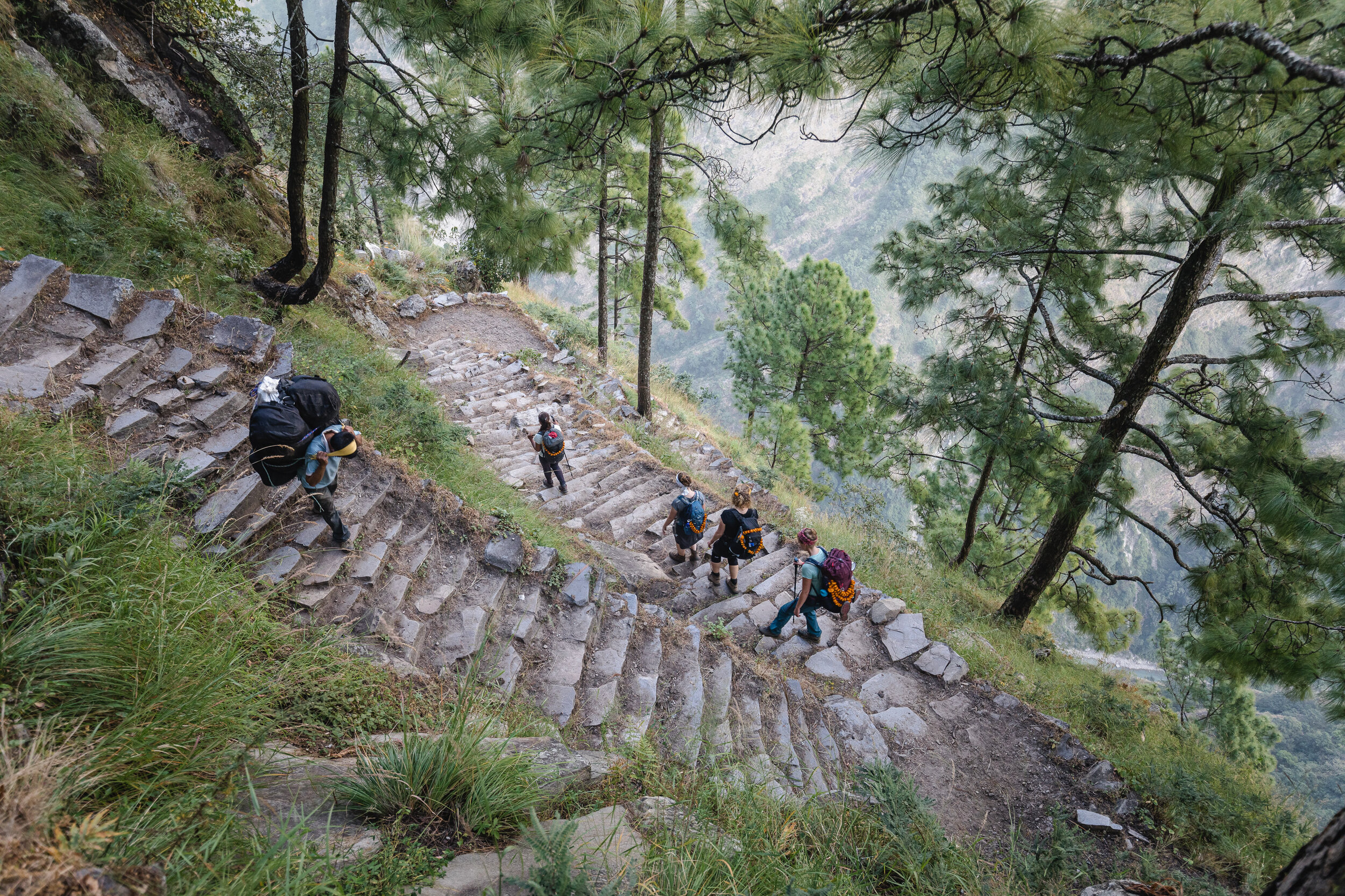
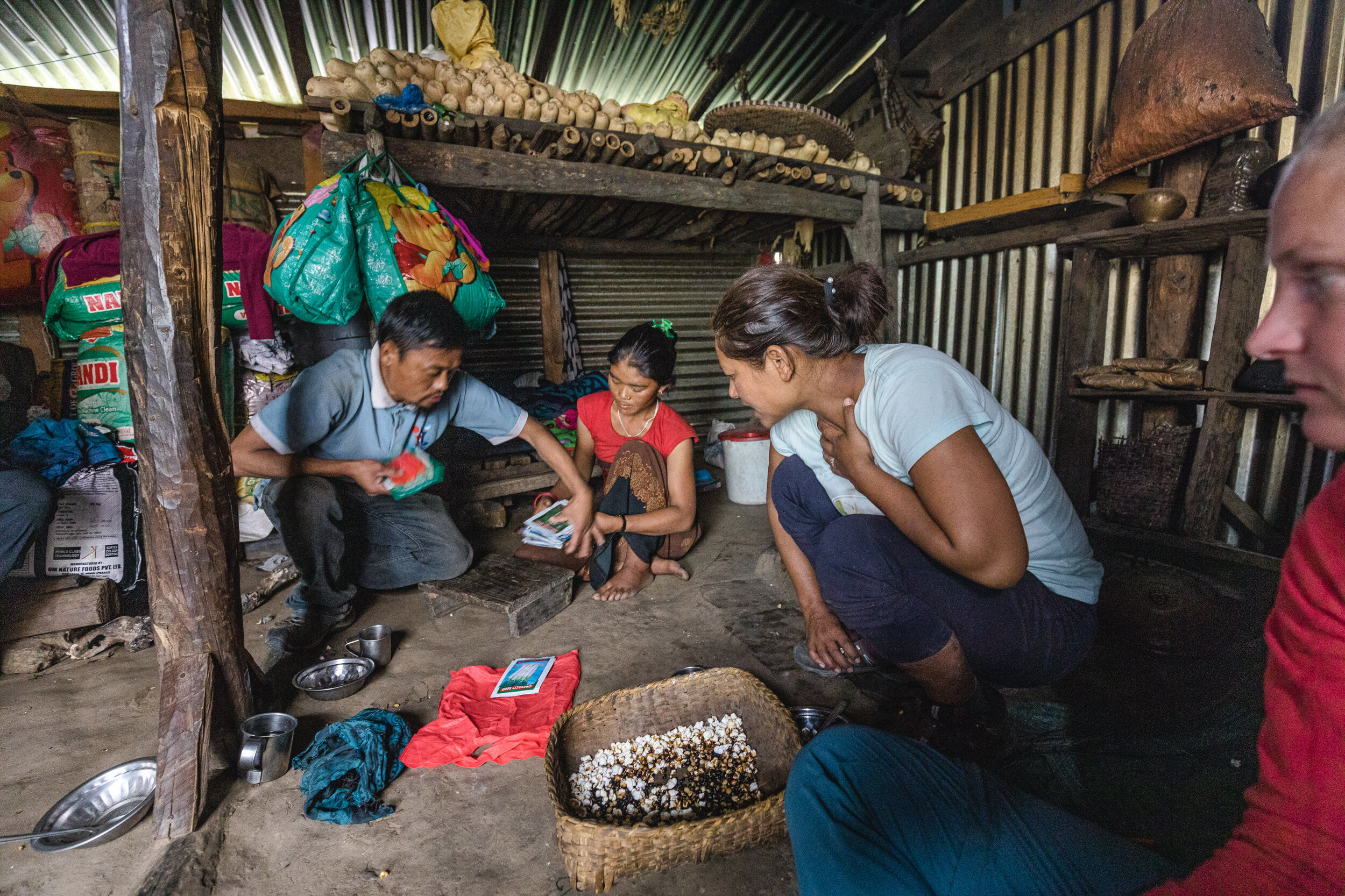
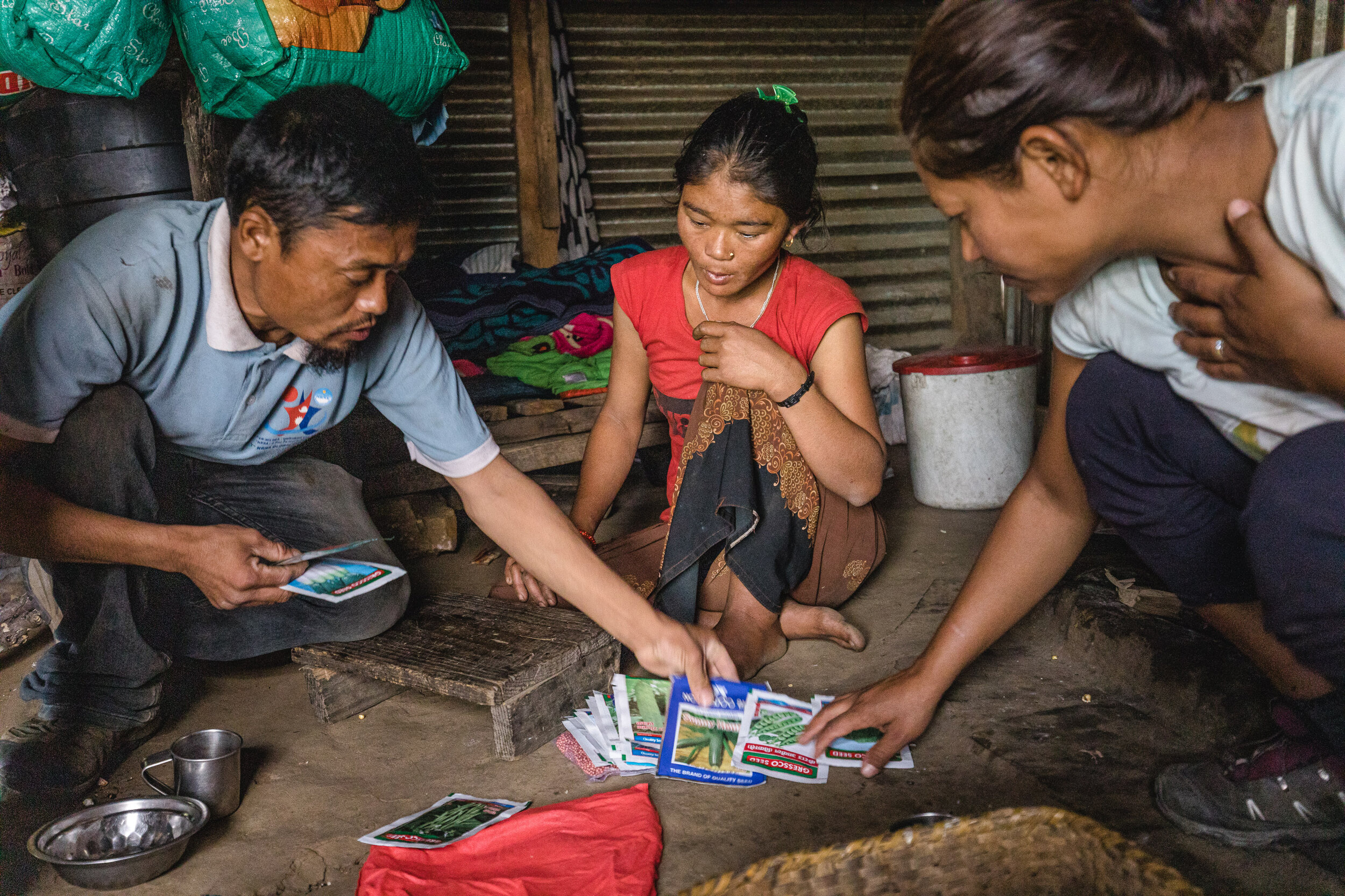
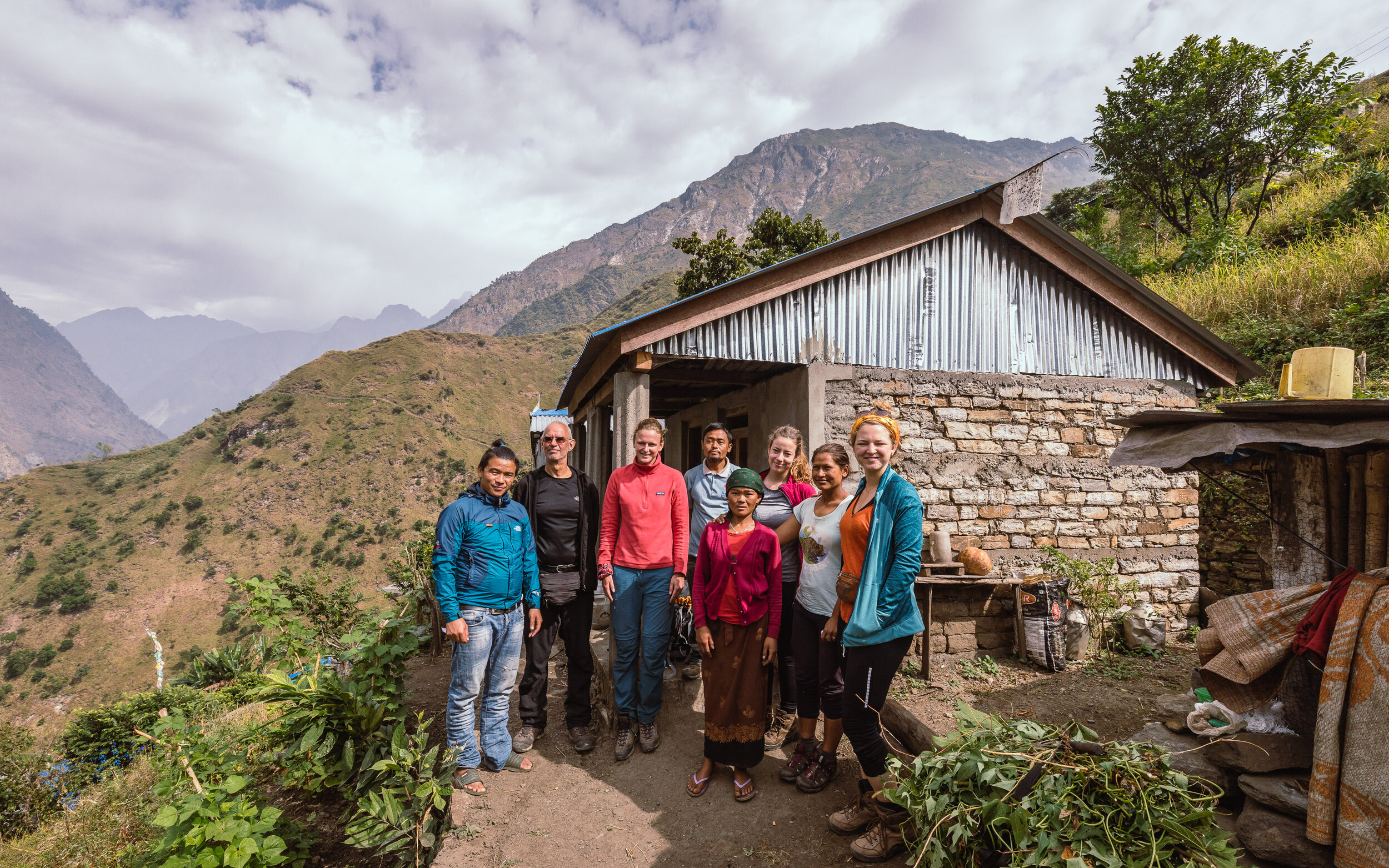





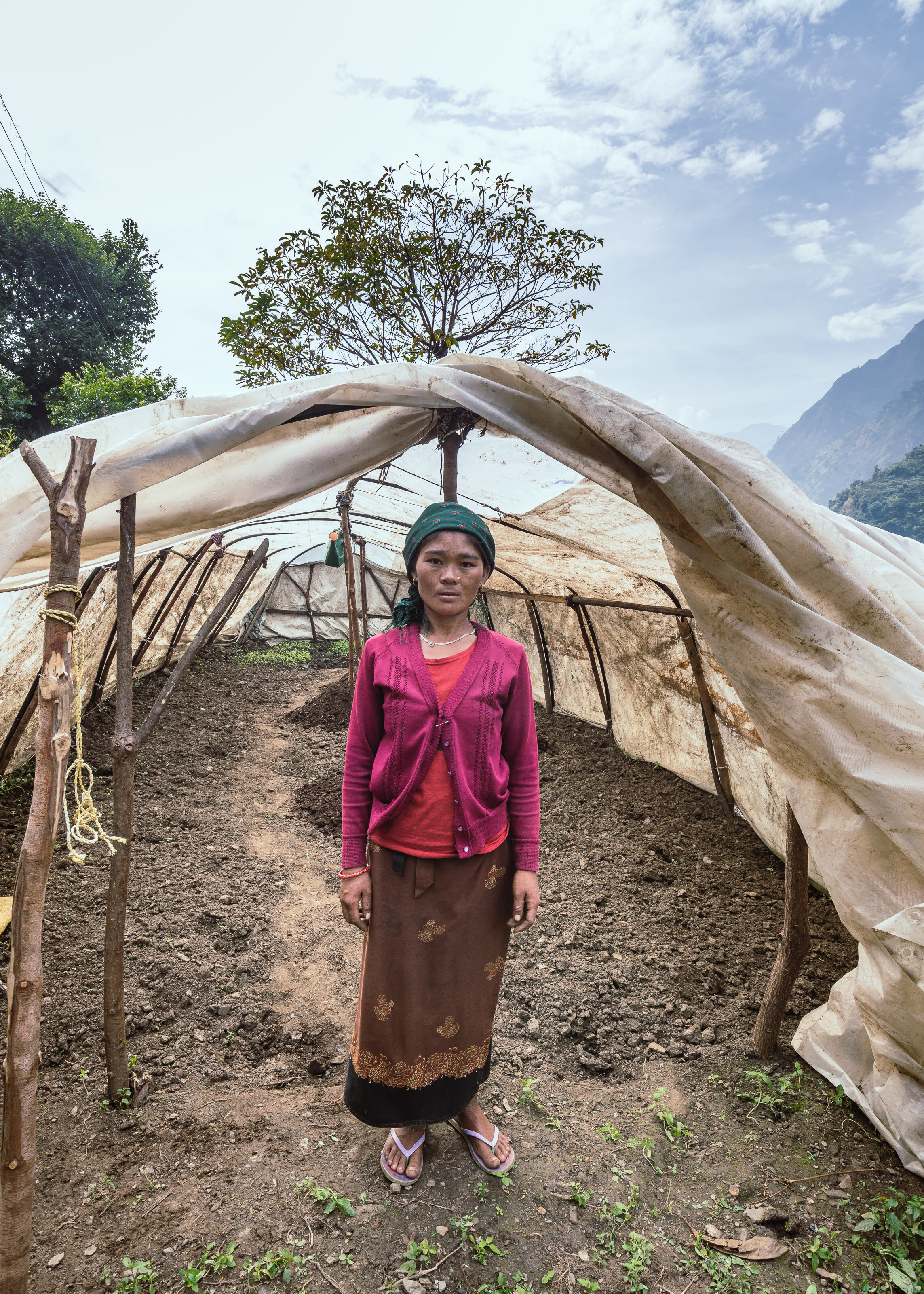


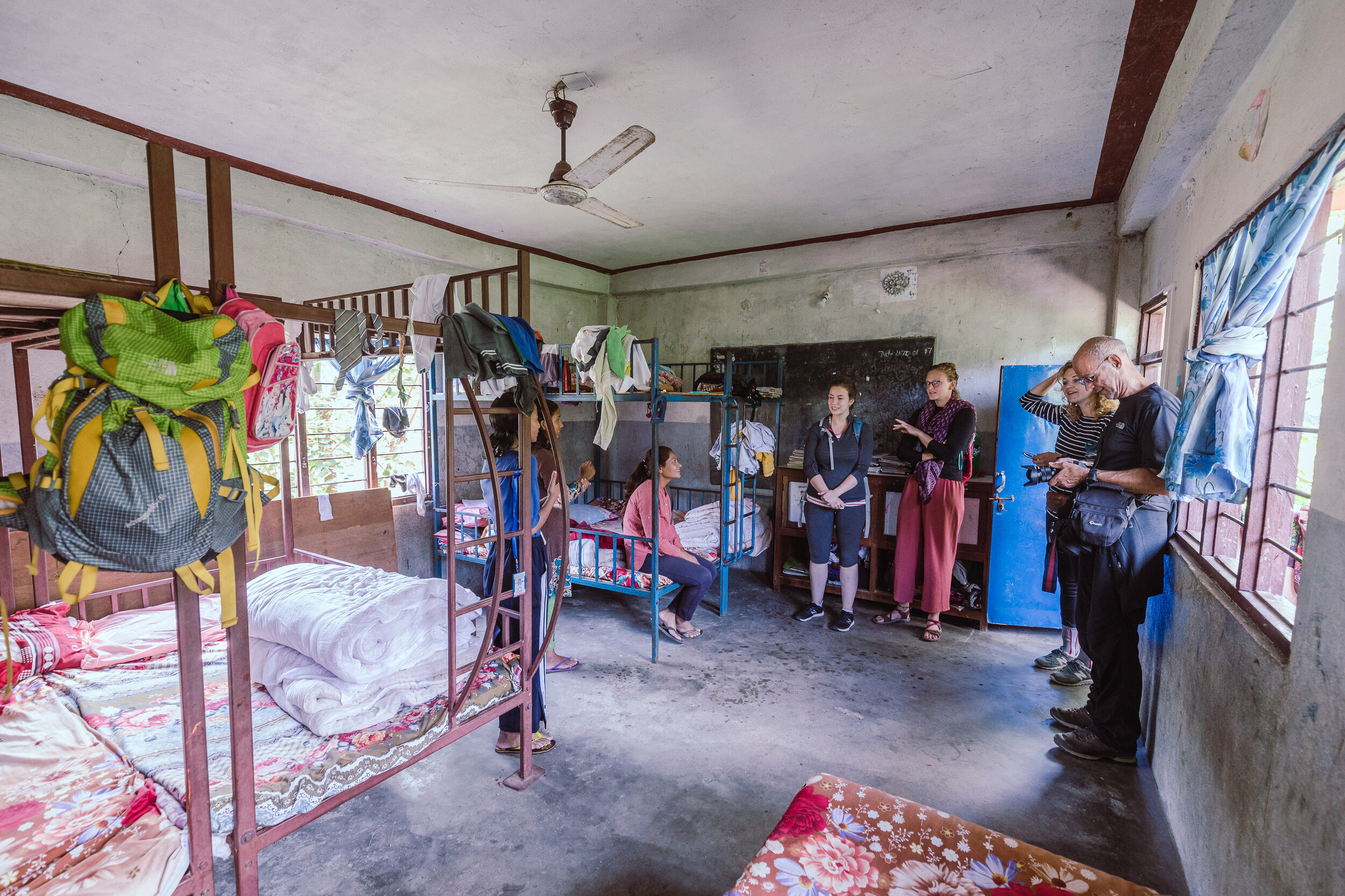
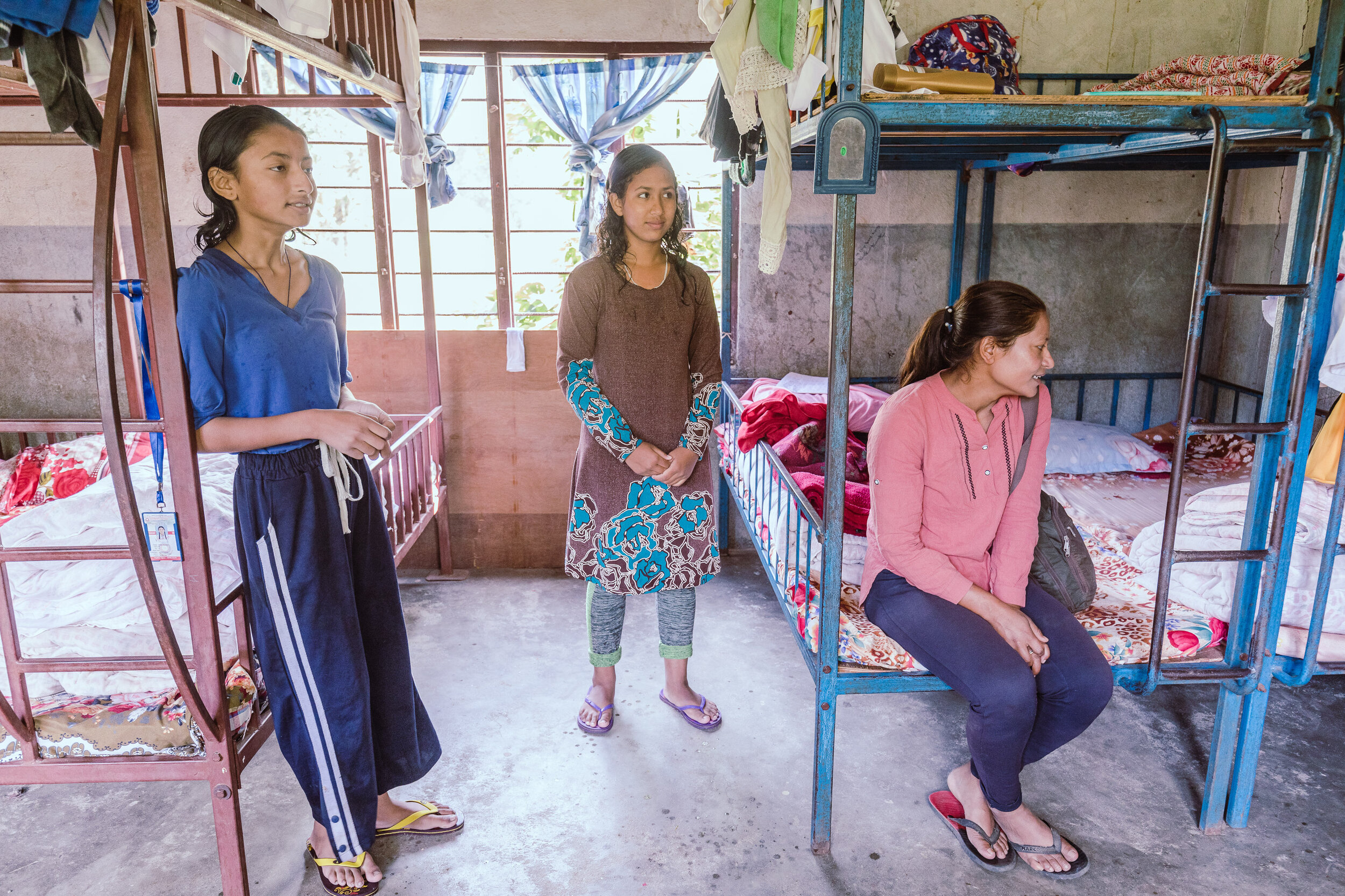
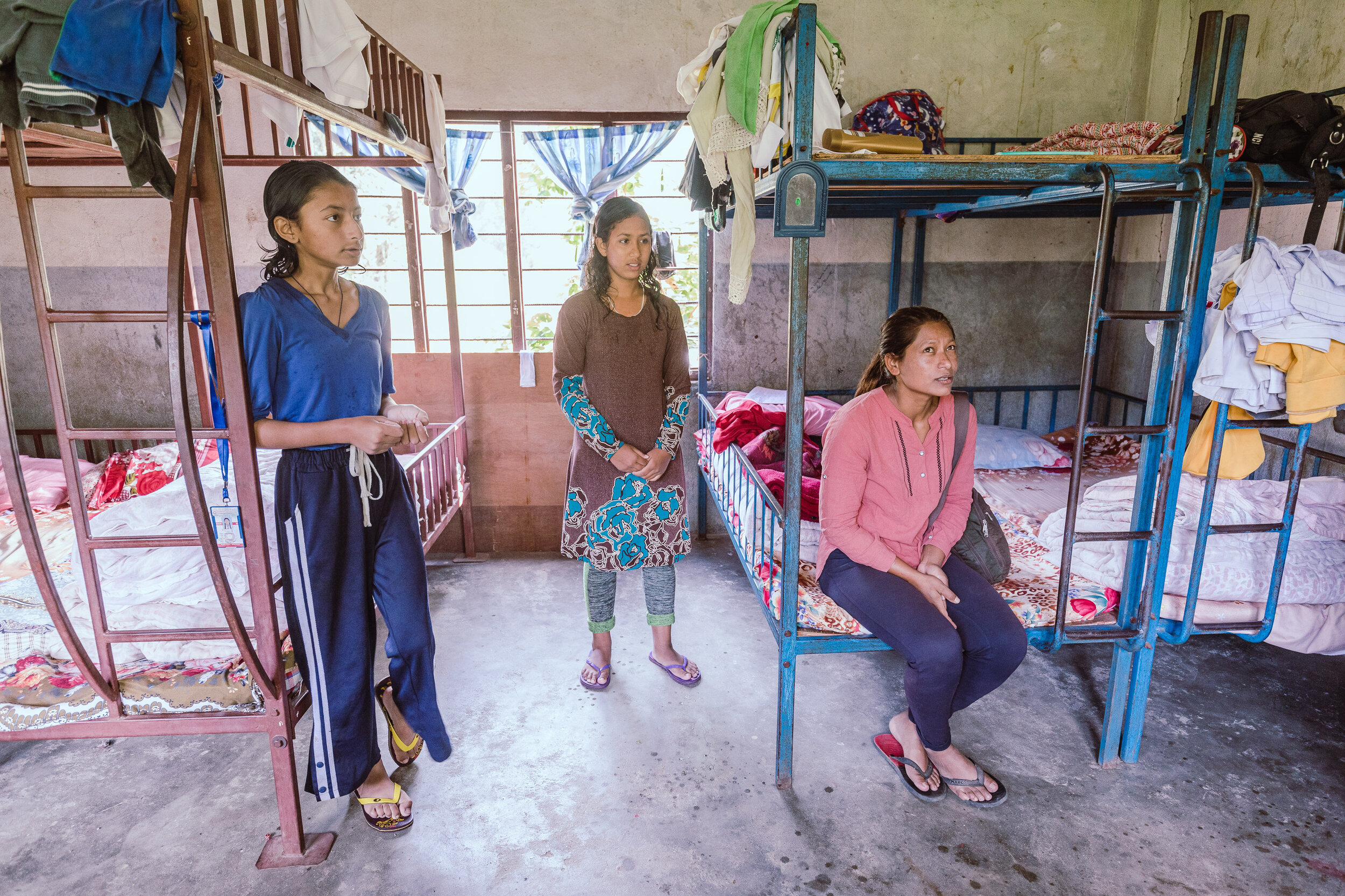
5 big Whiteboards for the English Boardingschool in Laprak
Project: Education Development
With the help of friend and teacher Aite Gurung we where able to support his Englisch Boarding School in Laprak with 5 big Whiteboards. This year we reserved budget as they asked for hel in previous year. Good quality whiteboards are difficult to find in Nepal and transportation is also very expensive as it have to on busses, jeeps and then be carried for a full day to reach Laprak. Great to see the Whiteboards arrive and the students started using them as a verry important part of education.
Project Education Material : Whiteboards for Gorkha Schools
We distributed in total 15 whiteboards to village is Gorkha district. 5 big whiteboards to the secondary school in the village of Wuyia and 5 big whiteboards to the school in Korla. See our video below to get to know more about this project.
Projector and Laptop for the Shree Kalika Primary School in Solagar
Project : Education Material and I.T. for Education
In April 2019 we went to the village of Solagar in Okhaldunga district. Here we donated school material to the small local school. Especially the I.T. material containing one laptop and one projector where received with great pleasure by the school teachers.
The new school complex on the land that was given by one of the community members.
Handing over the projector and laptop to the head of the school.
After handing over, with all the children and Samjhana
With all the children and now including Pim.
School posters, pencils and balls for the primary school in the little village of Thulodunga. From this time we decided to support the school as the old principal of the school in Solagar, that we respected very much for his efforts, got transferred to the school in Thulodunga.
The school complex of the village Solagar in Okhaldunga district.
2 Laptops for Laprak Boarding School
Project : I.T. voor Educatie
At the end of 2018 we handed over two laptops to Aita Gurung, one of the teacher of the Laprak Boarding School, and also since the start of Micro-Care Nepal one of the main Nepalese contact in Gorkha district.
During the last week he helped us again during our trip from Arugat to Wuyia with organising and carrying 5 whiteboards to the village schools. During this time he could give me the photos he and the head of the school took after receiving the laptops at their school.
We where pleased to see they started using the two devices and giving the opportunity to introduce the world of I.T. to the children of the school. The students are feeling amazed to finaly see and be able to use computer for the first time in their lives.
Before they where only able to read and study about it and practice some typing on a white piece of paper where they would draw the typing bord on.
Goals for the Gorkha Aid Journey - April 2019
Whyia goals
Handover 5 new whiteboards to the school
Review the use of the donated laptop and projector
Visit the families of Rabina and Ganga and discuss the option of jumping class for both of the girls as proposed by the teacher team
Teach first-aid - Was to sick to teach
Dungla goals
Handover 5 new whiteboards to the school
Handover other school materials to one of the school teachers.
Macha Khola goals
Handover school materials to one of the school teachers.
Kerauja Besi goals
Review the greenhouse of Thuli Gurung
Handover new seeds
See the living conditions of the family and housing
Education Material for Gorkha District (2018)
Upper Arun Valley Trip Report
Geschreven door vrijwilliger Harper Tromp:
Eén van mijn passies is reizen naar landen met andere culturen. Maar toch is mijn aandacht blijven hangen bij Nepal. In 2012 maakte ik mijn eerste reis naar Nepal. Toen maakte ik al kennis met dit prachtige maar ook erg arme land. Bij terugkomst ervaarde ik het contrast met het hectische, snelle en rijke leven hier in Nederland en wenste ik mij al terug in Nepal.
Maar ik leerde ook dat het niet billijk is Nepal alleen maar te ervaren als een mooi vakantieland. Daarom wilde ik ook mijn verantwoording nemen iets terug te doen en ook een klein beetje bij te dragen aan het welzijn van de mensen in Nepal. Samen met Micro-care Nepal en gesteund door en met vrienden trok in de Arun vallei in in het Noord oosten van Nepal. Met 10 tallen kilos kleding en diverse schoolmaterialen bezochten we de meest afgelegen dorpjes. Duidelijk te merken was dat hier in geen jaren een vrijwilligersorganisatie was geweest. De omstandigheden waren soms schrijnend. En hoewel we veel mensen konden helpen liep ik vaak de volgende dag weer verder met verdriet en schuldgevoel dat we niet meer konden doen. Ik had de mooie tochten en bijzondere ontmoetingen weer nodig om de ellende van mij af te schudden. Terugkijkend is het vooral een hele rijke ervaring en ik prijs mij enorm gelukkig dat ik in die positie mag verkeren. Terug in Nederland Probeer ik dat uit te dragen. En mocht je ook ooit overwegen naar een ver land te reizen kan ik je Nepal sterk aanraden. Maar wees eerlijk en geef ook iets terug. Dat kan door Mico-care Nepal t steunen en mogelijk kan je ook met Micro care Nepal op reis om ook daadwerkelijk aan hulpverlening te kunnen doen.
Geschreven door vrijwilliger Wilfried van den Boorn:
In november 2017 was het eindelijk zo ver. Al jaren keek ik er naar uit. Telkens ving ik bot wanneer ik naar de mogelijkheid tot een trek in de Upper Arun vallei informeerde. Telkens kreeg ik te horen dat daar geen buitenlanders werden toegelaten. En nu, bij toeval hoorde ik dat het gebied opengesteld was. Pim en Samjhana waren beiden al in Nepal. Harper en ik hadden gepland in november 2017 weer naar Nepal af te reizen om samen met Pim en Samjhana namens de stichting weer een hulpverleningstocht op touw te zetten. Dat leek me nu de uitgelezen gelegenheid om die dan in de Upper Arunvallei te plannen. Gelukkig viel het plan bij alle drie in goede aarde. Een voor mij bijkomend voordeel was ook nog dat deze tocht niet al te hoog zou gaan. Het lichaam begint gebreken te vertonen waar ik niet gelukkig mee ben maar wel rekening mee moet houden.
Ter voorbereiding heb ik met de hulp van vrienden allerlei zaken verzameld. Zo gaat er dit keer in mijn bagage 20 kg. aan goede kinderkleding mee, 4 laptops, 2 tablets, medicijnen en nog wat andere bijkomende zaken. Gelukkig mag ik dit keer van Qatar 40 kg. aan bagage meenemen en op de luchthaven doen ze dan ook weer niet al te moeilijk wanneer het een kilo of 4 meer blijkt te zijn.
Nadat Kathmandu achter de rug is, er nog allerlei materiaal gekocht is voor de te bezoeken schooltjes, vertrekken we met ons vieren, vier dragers en alle bagage. Dat gaat met een soort jeep. Het voert te ver om die reis te beschrijven dus beperk ik me maar tot; we waren bijna over de rand van het ravijn geschoten, ik wist niet dat je met een stuk zeep gaten in een kapotte benzinetank kon repareren en, jammer dat we er drie dagen voor nodig hadden om bij ons startpunt te komen.
Maar op weg zijn we, dat is zeker. Al na een paar dagen blijkt er geen ruimte te zijn om ons oorspronkelijke plan uit te voeren. Dat zou een gedeeltelijke tocht door onbewoond gebied ingehouden hebben om dan bij Taplejung uit te komen.
De dorpen waar we doorheen komen zijn arm, soms zelfs zeer arm. En er is niet alleen nood aan kleding voor de kinderen. Ook materialen om de leraren van, een wat uitgebreider scala aan, lesmateriaal te voorzien. Nee, er blijkt ook nood te zijn aan medische hulp. En voor zover dat in ons vermogen ligt bieden we die hulp. Er is in het tweede dorp dat we aandoen een klein meisje met een ernstige scabiës infectie. Bij toeval zit er een “Health post” in dat dorp. Daar kopen we dan antibacteriële zalf en antibiotica. Samjhana zorgt eerst dat ze gewassen wordt voordat de behandeling een begin krijgt. Een diep triest gezicht al die bultjes over het hele lijfje met als dieptepunt de bloedende massa van de billetjes. Jammer genoeg blijkt in dat dorp weer de laagheid van sommige mensen. De medewerker van de Health post is een oplichter. Hij verkoopt de medicijnen tegen prijzen die vier of vijf keer over de kop gegaan zijn. Dat is verboden, hij moet ze verkopen voor de door de staat vastgestelde prijs. En hij blijkt ook al een keer vastgezeten te hebben voor dit soort praktijken.
We komen in de volgende dagen vaak kleine kinderen met ernstige brandwonden tegen. Bieden dan aan om het ernstigste geval in het ziekenhuis in Dharan te laten behandelen. Dit samen met een jongen die een vuistgroot gezwel midden op de ruggengraat heeft. Bij ieder dorp is het weer afwachten wat je aan zult treffen en wat je zelf op zult kunnen lossen.
Op de schooltjes zijn ze zeker blij met al de spullen die we komen brengen. Een aantal schooltjes heeft zelf al redelijk wat materiaal terwijl andere het met bijna niets moeten doen. Ook bij het verdelen passen we dus gaandeweg aantallen en soort zaken aan.
En zoals boven al gezegd, het gaat langzaam. Langzaam omdat we toch eerst een inventarisatie willen hebben van wat er nodig is. Er soms kinderen, of volwassenen uit verder afgelegen delen gebracht worden die een probleem hebben. En natuurlijk dienen we een documentatie bij te houden voor onze sponsoren zodat die zien waar hun bijdrage naar toe gaat. En ja, vaak wil het dorp ook als dank een eerbetoon houden. De uitreiking van kata’s vormt altijd wel een onderdeel samen met de bloemenkransen en de tikka. Maar er wordt ook voor ons gedanst door de oudere vrouwen in een dorp. En gelukkig wordt er af en toe ook samen gelachen.
Concluderend kan gezegd worden dat we weer een keer bevestigd hebben gezien, en gevoeld, dat hulp noodzakelijk kan zijn. En weer bleek dat de manier waarop onze kleine organisatie werkt goed is. We verlenen hulp op plaatsen waar de grotere organisaties niet komen omdat er geen wegen zijn. En we komen dichter bij de bevolking omdat Samjhana deel uitmaakt van ons team en dat verkleint de barrière enorm.
Het was goed om weer, in gezelschap van vrienden, terug te zijn in Nepal. En ik ben erg blij dat we hier en daar weer wat verlichting hebben kunnen bieden. Niet genoeg, dat besef ik iedere keer weer, maar iedere daad helpt een beetje en samen komen we dan tot een groter geheel.
12-03-2018
Our trip started in Kathmandu and after a 28 hour jeep ride we reached the start point.
The lower part of the Arun river.
From left. Founders Pim Horvers and Wilfried van den Boorn, Friend and volunteer Harper Tromp.
Crossing the Arun river by this old long scary bridge.
Board member Wilfried getting support by Samjhana to cross one of the many tricky riverbeds.
Samjhana and volunteer Harper Tromp handing over clothing at Ringmu.
Students of the little school in Obak posing with Wilfried and Harper before teachers arrived to receive our school material.
Two female teachers and students of class 5 of the school in Papuwa with handover of the education material.
Students of the school in Papuwa showing the supported school material that we distributed to in total 8 schools.
Leaving early morning at sunrise as the distances to cover in between villages where very long.
A girl with terrible skin infection on her back and bottom that we could treat along the way.
1 Teacher only school in Chemtang
As they had no school material they where amazingly happy to receive our gifts.
Together cutting ingredients for our lunch os there was no such service for ordering dood.
As there where no lodges Samjhana had to prepare our food in local kitchens.
Samjhana and volunteer Harper Tromp handing over clothing at Firfire.
The very small school in Firfire. As the other schools are to far and dangerous to go to for the little students they will study here till class 3.
Lady with child in the very remote jungle village of Obak. Mentioned by the billagers was that we where the first white people to visit their village.
School boy after we treated his wound and finished our first-aid treatment.
The little school in Rapsa.
White khata as a blessing and thanks for our support.
School with a small part of their students in Chepuwa.
Discussing difficulties with the teachers for the at the Tibetan (Chinese) border located school in Ridak.
Part of the students in Ridak school are very happy with the school material we donated.
Hospitality is great in the upper part of the Arun valley. There are no lodges what makes it hard to find places to sleep.
Posing with the local family in Chepuwa where we could stay.
Vlog from the Upper Arun Valley, East Nepal.
Short vlog from the Upper-Arun Vally during the december 2017 support.
Founder Pim Horvers explains about the use of donations for school material and handing over clothing in the remote area of Upper-Arun in Nepal.
More about the support that have been given in the remote area of the Upper-Arun will be represented at the yearly Nepali dinner program that will be take place in the spring of 2018. This year we also have an event planned in the surrounding of Amsterdam!
Vrijwilliger : Harper Tromp
“VRIJWILLIGER HARPER OVER ZIJN VRIJWILLIGERSWERK BIJ MICRO-CARE NEPAL
Distributing Education material and clothing in the Upper-Arun Valley
Eén van mijn passies is reizen naar andere landen en het ontdekken van andere culturen. In 2012 maakte ik mijn eerste reis naar Nepal en hoewel ik op veel mooie plekken geweest ben is mijn aandacht daar blijven hangen! Mijn kennismaking met dit bijzondere land was tweeledig, ik vond het prachtige maar ook een erg arme land. Bij terugkomst ervoer ik daardoor sterk het contrast met het hectische, snelle en rijke leven hier in Nederland en vrijwel meteen wenste ik mij al terug in Nepal.
“NEPAL IS MEER DAN EEN VAKANTIELAND”
Ik realiseerde me al heel snel dat Nepal voor mij veel meer is dan alleen een mooi vakantieland. Daarom wilde ik ook mijn verantwoordelijkheid nemen door iets terug te doen en ook een klein beetje bij te dragen aan het welzijn van de mensen in Nepal. Om te helpen waar het echt nodig is besloot ik de handen ineen te slaan met Stichting Micro-Care Nepal. Samen met Micro-care Nepal en gesteund door en met vrienden trok ik enkele jaren na die bijzondere eerste ontmoeting met Nepal de Arun vallei in, in het Noord-Oosten van Nepal.
LANGDURIGE, DUURZAME HULPVERLENING
Met tientallen kilos kleding en diverse schoolmaterialen bezochten we de meest afgelegen dorpjes. Het was heel duidelijk te merken dat hier in geen jaren een vrijwilligersorganisatie geweest was. De omstandigheden waren soms schrijnend en hoewel we veel mensen konden helpen, liep ik vaak de volgende dag weer verder met verdriet en schuldgevoel dat we niet meer voor hen konden doen. Gelukkig weet ik dat Micro-Care Nepal langdurig hulpverleent in deze gebieden en dus ook nog lang na mijn trip actief is in deze gebieden om de mensen zo veel mogelijk te helpen.
Harper posing with a group of students that also recieved our gifts to their school with great pleasure.
RIJKE ERVARING!
Dankzij de mooie tochten en vele bijzondere ontmoetingen tijdens deze trip hield ik toch een heel positief gevoel over aan mijn reis. Terugkijkend is het daarom vooral een hele rijke ervaring geweest en ik prijs mij enorm gelukkig dat ik dit mocht meemaken. Terug in Nederland probeer ik dat natuurlijk uit te dragen.
OOK EEN BIJDRAGE LEVEREN?
Mocht je ook overwegen om naar een ver land te reizen, dan kan ik je Nepal echt aanraden. Je zult zien dat ook jij na een bezoek aan dit magische land waarschijnlijk niets anders kunt en wil dan iets teruggeven voor alle rijkdom die je daar hebt opgedaan. Wil je graag vrijwilligerswerk doen in een land dat het echt heel goed kan gebruiken? Meld je dan aan als vrijwilliger bij Micro-Care Nepal. Dan garandeer ik je echt een unieke reis en ervaar je het land bijna als een local. Dat is zo bijzonder, daar kan echt helemaal niets tegenop!
“MELD JE ook aan ALS VRIJWILLIGER
en stuur en bericht op de contact pagina!”
Harper (in the red jacket) and a group of young students with in the backside the little and very primitive school.
Vrijwilliger Wilfried van den Boorn over zijn ervaringen tijdens een missie naar de afgelegen Upper-Arun Vallei
Distributing Education material and clothing in the Upper-Arun Valley
In november 2017 was het eindelijk zo ver. Al jaren keek ik er naar uit. Telkens ving ik bot wanneer ik naar de mogelijkheid tot een trek in de Upper Arun vallei informeerde. Telkens kreeg ik te horen dat daar geen buitenlanders werden toegelaten. En nu, bij toeval hoorde ik dat het gebied opengesteld was.
I.T. PROJECT - in Solu district, East Nepal
Door vrijwilligers en donateurs: Petra en Gert Groenewoud
Na in 2016 met Micro-Care Nepal op reis te zijn geweest besloten Petra en ik om dit jaar samen te gaan. 22 jaar na onze huwelijksreis weer samen naar Nepal!
Met de ervaring uit 2016 in geheugen besloten we in overleg met Pim en Samjhana van Micro-Care Nepal om dit jaar te gaan voor een grotere uitdaging. Namelijk de scholen voorzien van een IT lesomgeving en dat zelfs zonder de beschikbaarheid van electriciteit en internet. Er kan slechts via een klein zonnepaneeltje een powerbank opgeladen worden.
Gert again amazed by the destructions that the 2015 earthquakes created and the fact that many of the destructed buildings still couldn't be repaired or rebuild.
Er is in de Nepalse buitengebieden dus weinig bekend over IT en zijn de ontwikkelingen hierin achtergebleven. Wellicht om deze reden dat de interesse en nieuwsgierigheid er zeer zeker wel is.
Ons doel was een IT lespakket te samenstellen waarmee nieuw lesmateriaal voor verschillende vakken gepresenteerd kan worden. Gezien het gebrek aan volstroom hebben we na onderzoek besloten dat alle materialen met USB opgeladen dienen te worden. Het pakket bestaat uit: een tablet, een mini beamer, een powerbank, een speaker en natuurlijk de benodigde kabels. Het project moet een duurzaam karakter hebben en zo het onderwijs op de lange termijn blijven voeden.
Morning assembly atone of our supported schools in the Solu district in East Nepal.
Met hulp van vele donateurs hebben we veel geld ingezameld om deze pakketten aan te schaffen. We willen daarom in het het bijzonder onze dank uitbrengen aan: DPA, Sigmax en Talentor, welke onze hoofdsponsoren waren. De kleinere sponsoren en donateurs zijn wij natuurlijk net zo dankbaar!
The teacher training given by Petra Groenewoud supported by the translations of Samjhana Bishankhe.
Petra heeft zich vervolgens vol gestort op het samenstellen van een lesprogramma voor de "IT teachers", zij moeten het gaan leren en zij moeten gaan lesgeven. Daarnaast de tablets voorzien van veel content, zoals veel educatieve filmpjes, offline educatieve games, een offline Wikipedia en offline kaarten.
The IT poster of this project explains all about IT and what we can achieve with it.
Non IT teachers listening and looking carefully to the story about the great amount of possibilities that the projector can bring for teachers and students.
Na de voorbereidingen was het eindelijk zo ver en gingen we op reis naar het prachtige heuvellandschap van het SoluKhumbu district. Het is een onvergetelijke reis en ervaring geworden. We hebben 5 schooltjes variërend van 150 - 750 leerlingen voorzien van het IT materiaal. We hebben dagenlang lesgegeven en de leraren zelf laten oefenen en onze eerste conclusie is dat het enorm is aangeslagen. Het enthousiasme is groot, de teachers zijn zeer geïnteresseerd en de leerlingen..... Ja, daar wordt je stil en ook emotioneel van. Open monden en ogen die er bijna uitvielen. Voor velen een eerste ervaring met een computer of zelfs een bewegend beeld. Fantastisch om dit te mogen doen, dit resultaat weegt absoluut op tegen de vele uren voorbereiding.
Voor deze scholen is het zeer innovatief en ze beseffen dat ze nu echt voorlopen en verder kunnen met deze aanvullende manier van lesgeven.
Happy faces from the IT teachers as they have passed the user test after Petra gave the teacher training. On the teachers our main sponsor, the company " Talentor ".
IT teacher taking his practical 'exam' before we handover our IT material officially to the school.
Surprised and curious to see the projectors presentations on the wall.
We zijn ontzettend blij en trots dat we dit samen met Micro-Care Nepal hebben kunnen bereiken. Wij willen Pim en Samjhana bedanken voor de kans om dit te mogen doen en we ons gezamenlijk inzetten om dit project ook in de toekomst voort te kunnen blijven zetten. Maar hier hebben natuurlijk ook van jou hulp bij nodig. Doneer nu op dit IT project en zorg dat we op nog meer scholen het onderwijs kunnen verbeteren.
The Micro-Care Nepal user agreement and contract signed by the headmaster and IT teacher of each school.
Handover of the IT material including a tablet, speaker and projector.
Petra enjoying the sight of the curious and smiling faces of the children.
Surprised and curious to see the projectors presentations on the wall.
We willen onze donateurs en sponsoren, zakelijk en privé, bedanken want zonder de financiële middelen was het niet mogelijk geweest. Heel veel dank.
Wij raden iedereen aan die al lang twijfelt om iets bijzonders te doen, ga mee met Micro-Care Nepal en je zult deze ervaring nooit vergeten🙏🍀
NAMASTE
Een bijdrage aan de watersnood hulp in Chitwan
Samjhana deelt schoolmaterialen uit aan de kinderen.
In de afgelopen zomer zal het nieuws van de vele hevige moesson regen in onder andere India, Bangladesh en Nepal je waarschijnlijk niet ontgaan zijn. De problemen in het regenseizoen in Azië wordt sinds enige jaren heftiger in verband met de opwarming van de aarde en zo een toenemende hoeveelheid smeltwater uit het Himalaya gebergte. Daarnaast regende het dit afgelopen jaar vele malen meer dan de opgelopen jaren. Een record aantal sinds twintig jaar. In Bangladesh overstroomde zelfs twee derde deel van het land!
Groote delen van de akkers zijn verwoest en planten zijn weggespoeld.
Micro-Care Nepal besloot een bijdrage te leveren aan de hulp in het zuidelijk deel van Nepal. Na enig onderzoek, in het bijzonder ook naar waar een arme school getroffen was besloten we aan twee schooltjes in het Chitwan district schoolmaterialen te doneren.
In deze periode vloog toevallig Samjhana ook terug naar Nepal. Pim kon helaas pas een maand later naar Nepal afreizen. Samjhana heeft contact gezocht met lokale mensen en uiteindelijk een gebied gekozen waar vee schade was door de waternood, waar de mensen veelal in armoede leven (lagere casten) en wat binnen een dag reizen in afstand van Kathmandu ligt. Het laatste vooral om de logistieke kosten laag te houden. We hebben in een gebied waar globaal al hulpverlening was, gezocht naar twee schooltjes waar nog weinig hulp aan gegeven was. De eerste prioriteit is het geven van ondersteunend schoolmateriaal. Secundair is het uitreiken van kleding.
Nadat de plannen steeds concreter werden gingen Samjhana en haar vriendin Astha Ghimire, wie als vrijwilligster mee ging, naar verschillende winkels in Kathmandu om posters en oefenpuzzels aan te schaffen. De schriften en schrijfwaren zouden ze in de buurt van de schooltjes aan kunnen schaffen en zo transportkosten te kunnen besparen.
Voor 400 leerlingen een setje met schriftjes, een potlood, een pen, een puntenslijper en een gum.
Leerling, blij met haar nieuwe schoolspullen.
Onderstaand het verhaal van Samjhana en de hulp die we boden in het zuidelijke district Chitwan.
Support to the flooded victims in Chitwan district,
By Samjhana Bishankhe,
Me and my friend Asthma we went to Chitwan together to give a small support to the big damage of the worst monsoon floods in many years. Like in most Southern districts also in Chitwan the floods mostly effected the households and farming fields and their cattle.
In the area of Chitwan where we went, more than 35 houses where totally taken by the floods, 35 people died and most of the crops are destroyed. In this time they mostly planted rice and we could see that big parts of the fields where totally gone.
Our priority was to give support to two small schools where mostly people where studying from lower casts. Because of the floods the school lost most of their educational materials and papers and pens then where still present where not possible to use anymore as they were too much damaged. We decided to We made a packet with writing paper, pencils and a sharpener and a eraser. The all we packet in a plastic clear bag for storage and protection. We packet 400 sets and divided them over the two school.
First we went to the “Adharbhut School” that was located near to a Kamaya refugee camp and a water channel. When we arrived at the school we could see in the surroundings how much damage the floods had brought to the farming fields and nearby houses. Most of it was destroyed and a layer of mud covered most of the ground. Trees where taken by the water and this created more damage to especially the houses.
At the school we met the teachers and students and outside we made an area to handover the school materials. We looked around at the school and found most books and papers that where left being destroyed by the water. The teachers welcomed us with khada (Buddhist scarf). I gave got time to give a speech and asked about at the time the floods where taking place. Te explained that now the water was gone but for many days the water was 2 meters high and they had to stay on the rooftops of their houses to safe their lives.
We handed over 150 educational packages to all children of the school. The students where very happy to get our support and thanked us so many times. They mentioned that many NGO’s disappeared after the water went and they were happy that we understood that especially at that time we wanted to support them with essential school materials. They told no other NGO came to give support to them. I felt happy that at least we could do something for them but sad that my country or other NGO’s that have much bigger budgets couldn’t help them.
Een groepje leerlingen poserend.
We continued to the second school that was located close to the big Rapti river near the village called ‘Madi’. This river found his origin in the Himalayan mountains and would end in Bangladesh in the Bay of Bengal.
Arriving there we could see how much impact the floods made on the peoples lives. People knew we were coming and as they all needed support there were more than 1000 people present at the area of the school. When starting our conversations with the local people we could see and feel their fear of the floods in their eyes. The stories they told where scary and they showed me a field now full of sand and explained that before there were 35 houses standing. All the fields in this region we could see on the way looked like the banks of a river of like a coast of the sea. Trees with roots on it where laying everywhere in the fields. Around some houses on the way there was still water. Now just a bit but before two meters high and until their rooftops.
Talking to the people I realized this in one of the places we need to give support to. I unpacked the clothing we took and started to hand it out to children and mothers with babies. These people where visibly poor. There could never be enough for all but we tried to divide the clothing as good as possible.
The school was made of concrete so it was strong enough but we could see a line till where the water had rixed almost until the top. A big tree with root was laying on the schoolyard where before children played. The people in this area are mostly lower caste people and poorest in the area.
Because of the big amount of people it was too hard to handover the school material at this time. We decided to hand it over to the teachers of the school and what would hand it over at a later moment. We were disappointed that we couldn’t bring enough for all the children but we realized that we were feeling glad to give support to them and we never could solve the whole problem.
Shocked by seeing all damage and hearing their stories we left in the jeep. People still kept coming to us to ask for more support. This is the hard fact about humanitarian aid work.
We can do something but it probably never is enough.
Again this time we were happy to do something to support our people in Nepal.
Thank you for giving us the possibility to support the people in need!
Please make a donation for the unexpected support we gave.
Samjhana Bishankhe
VRIJWILLIGER Gert Groenewoud, OVER ZIJN ervaringen met MICRO-CARE NEPAL
Written by: Gert Groenewoud
Educatie materialen & kleding voor scholen in Gorka en Solu-Khumbu district.
Over the past few years it has become very clear to me that I wanted to give something back to the world, but I was not sure what this could be.
The earthquakes of 2015 hit me…To see small villages being completely destroyed, infrastructure destroyed, seeing people dying, amongst them children, made me want to do something. For me, this was the moment I realized that I wanted to help Nepal, but I was not sure how.
Let me introduce myself to you. My name is Gert Groenewoud. I am 50 years of age, married to Petra and have 2 children, Jesse and Zoe. I remembered Nepal from the time I spent there on my honeymoon some years ago as being a beautiful and welcoming country. The people were always smiling even when they hardly had anything. A friend introduced me to Micro-Care Nepal. After meeting Pim (Founder of Micro-Care Nepal) it was even more clear that I could really do something for Nepal.
Micro-Care Nepal stands for small projects in the most remote places of Nepal. In all their projects they work closely together with local people.What makes me want to start projects with Micro-Care Nepal is that they really improve the people’s lives. And in a sustainable way. The projects focus on the poorest in small remote mountain villages. Micro-Care Nepal is different because they teach people how to manage the projects themselves. On the website www.microcarenepal.org you can find a choice of all types of donations for the projects.
All of them are very deliberate and personal. And these days more important; you will be able to see what we do with your donations. You will receive newsletters with stories and photos of the families we help with your donations. Also want to stay informed about our initiatives? Subscribe on microcarenepal.org for the newsletter.
My personal motivation? The healthier and happier people I see, the better. I hope with this message I have given you something to think about. If so, please make a donation because Nepal needs it!
Thank you for your support,
Gert, Groenewoud
Februari 2017
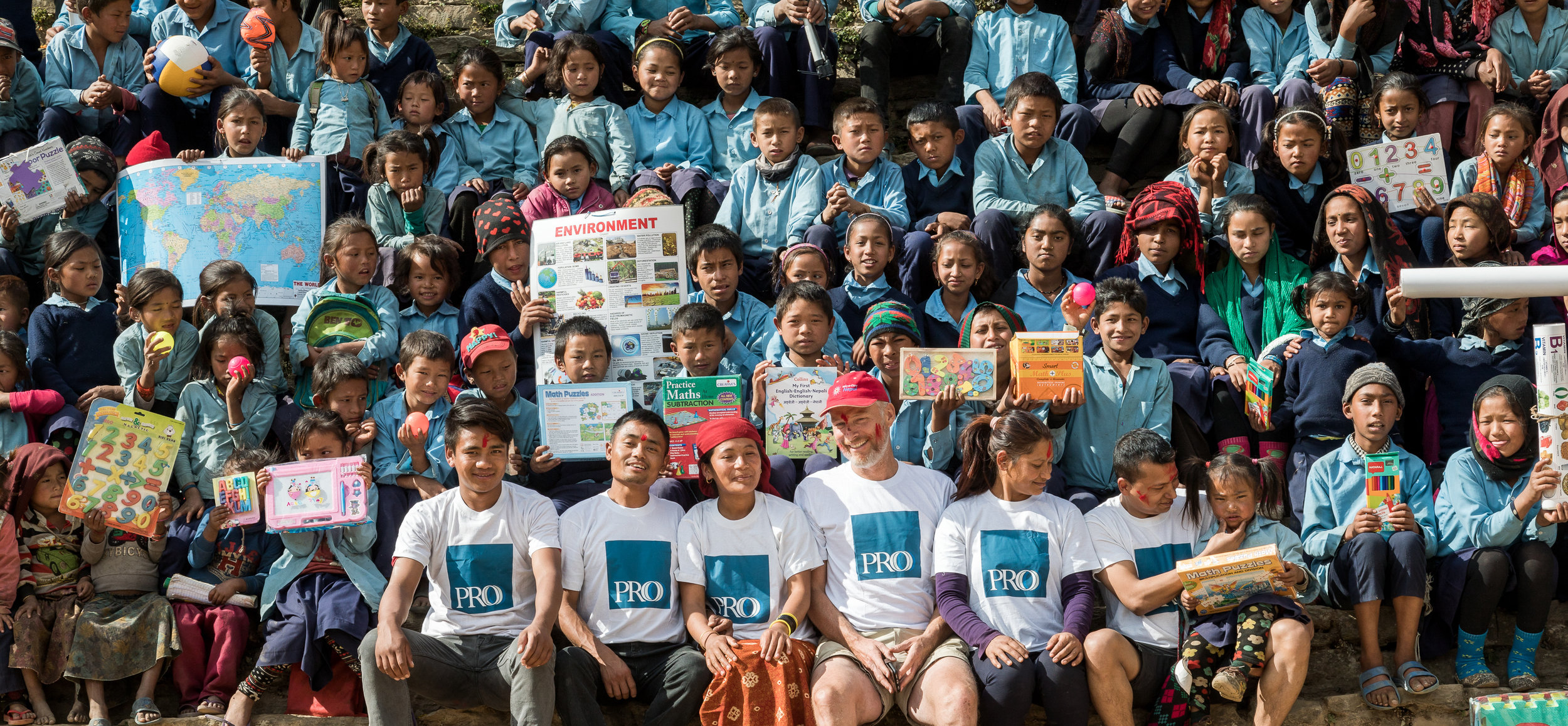
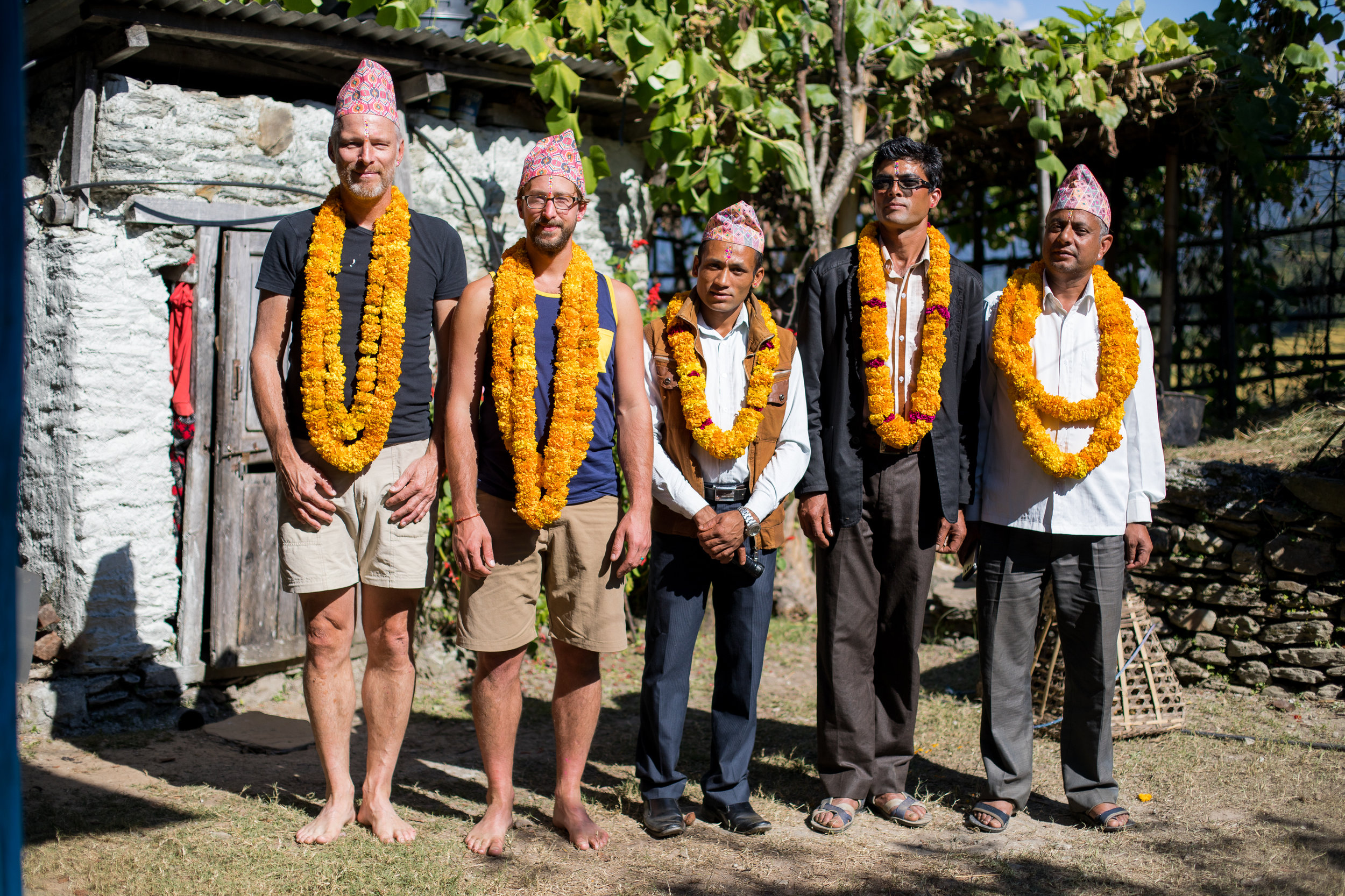
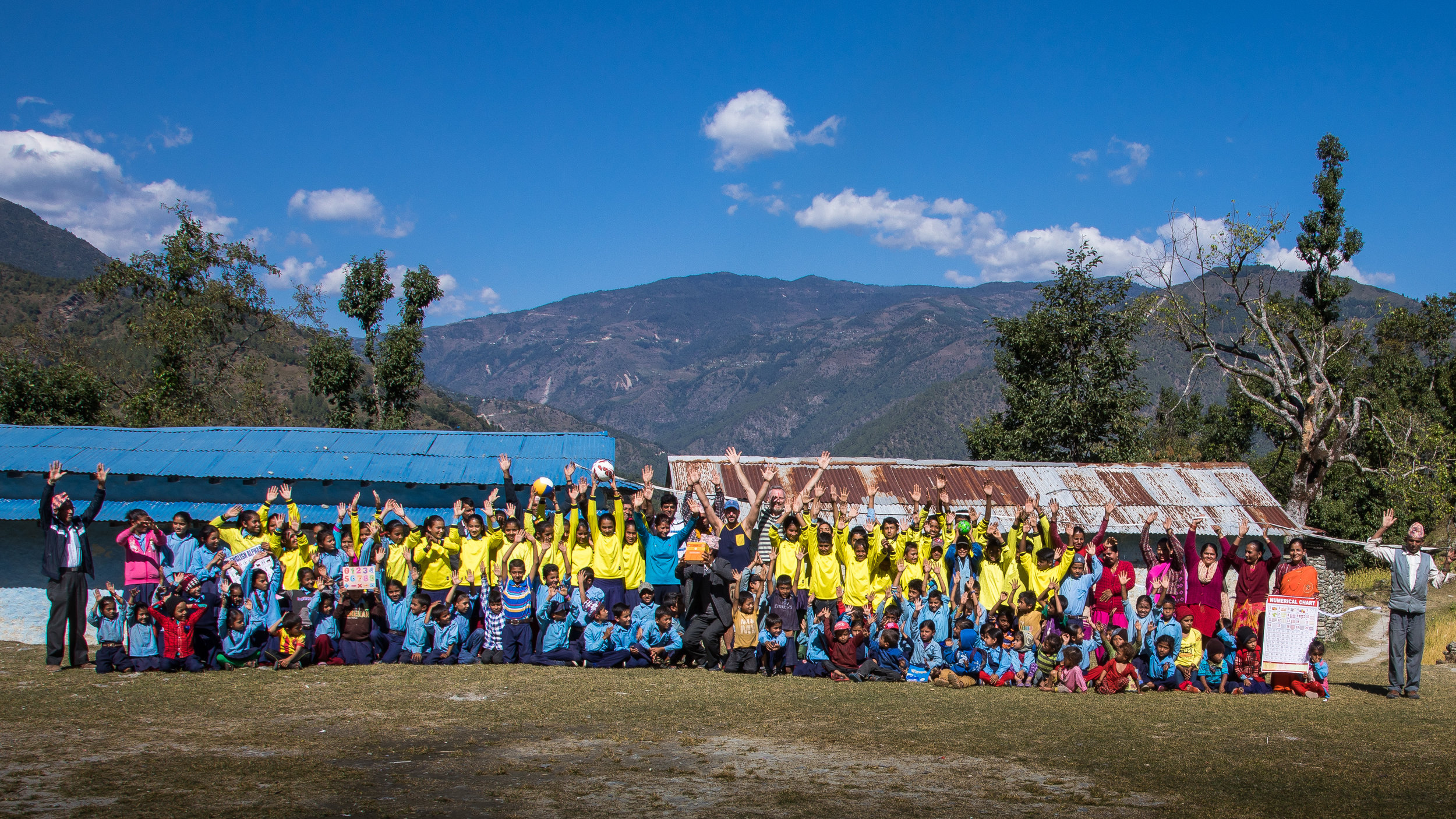
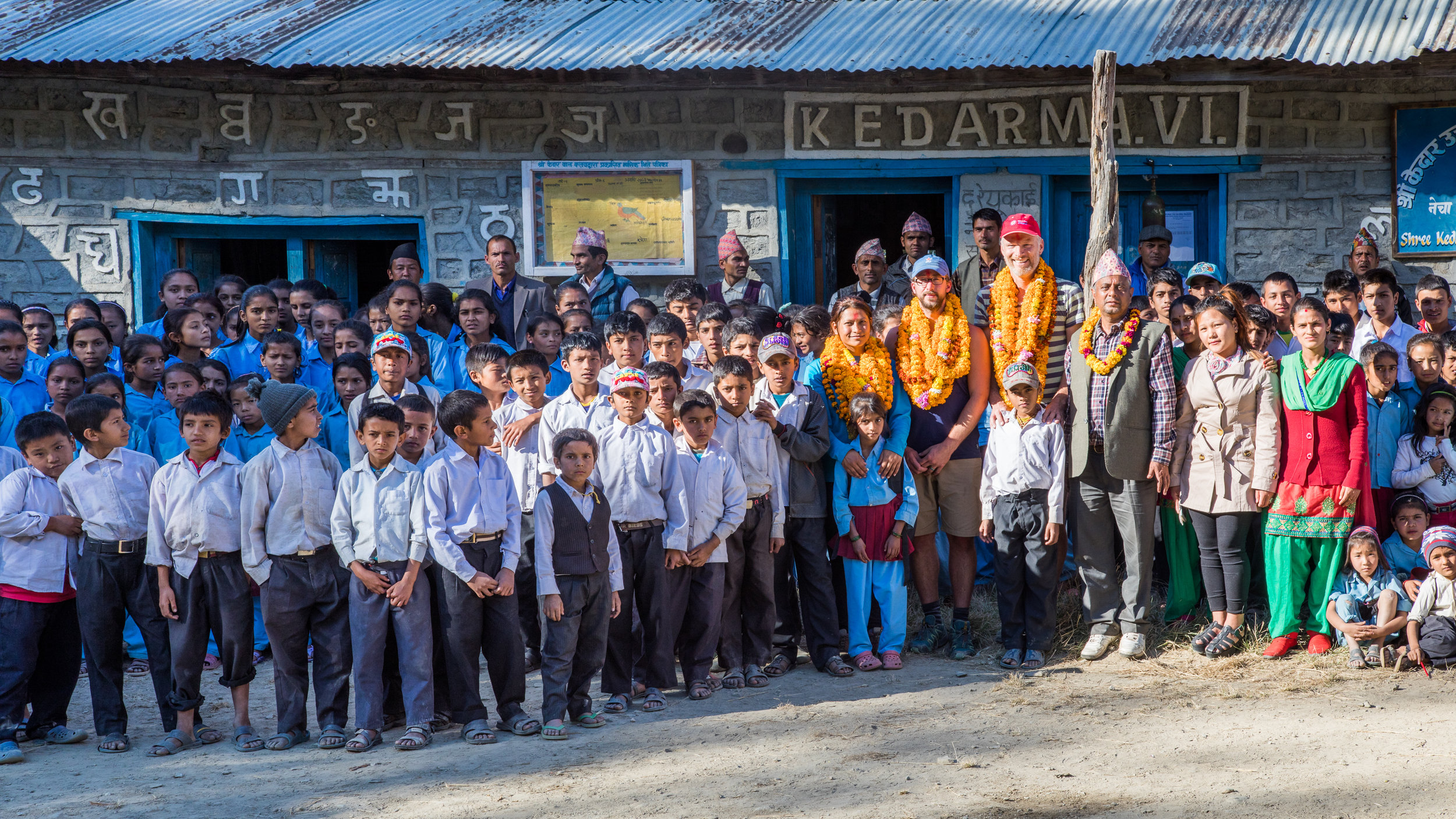
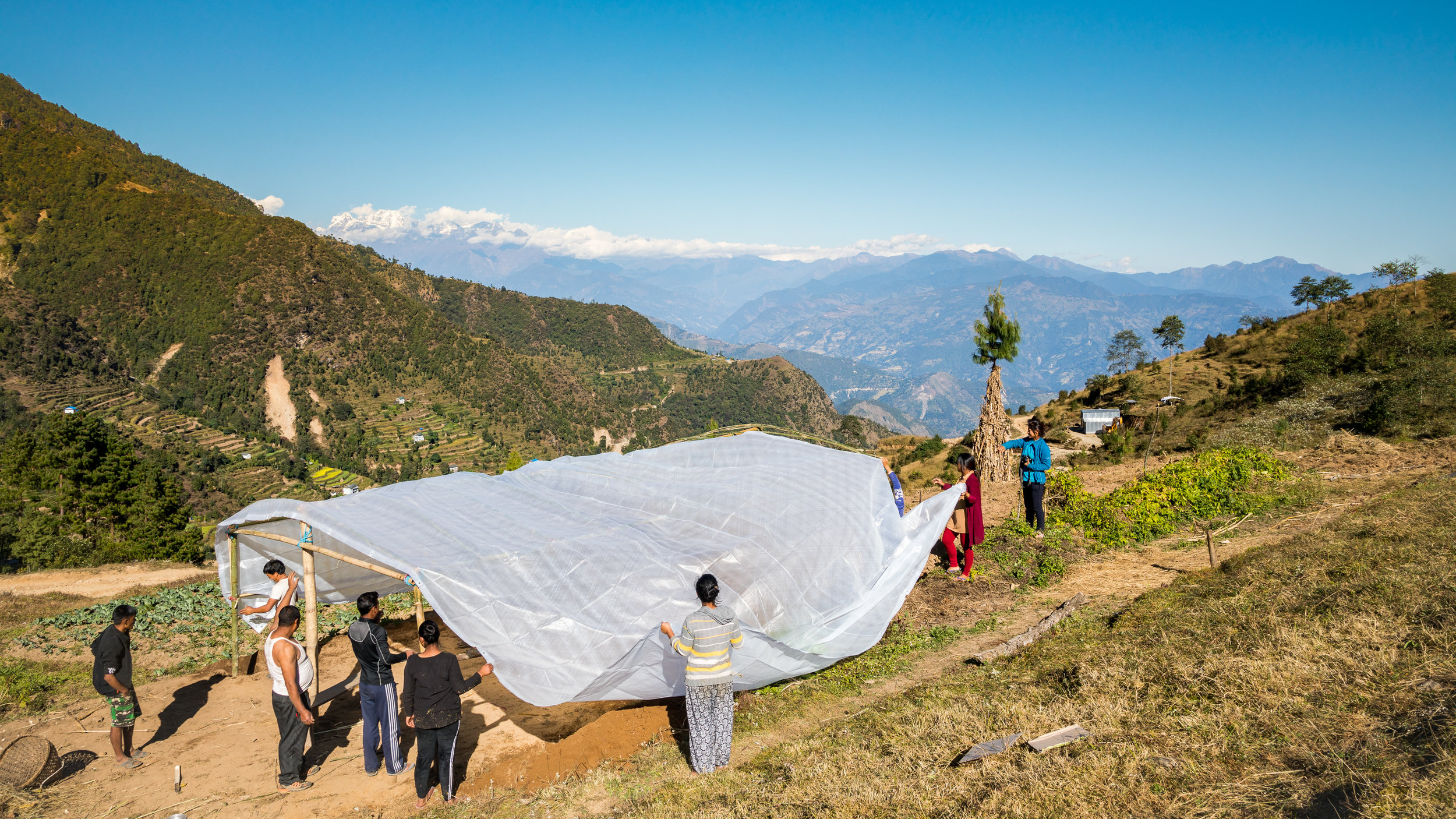

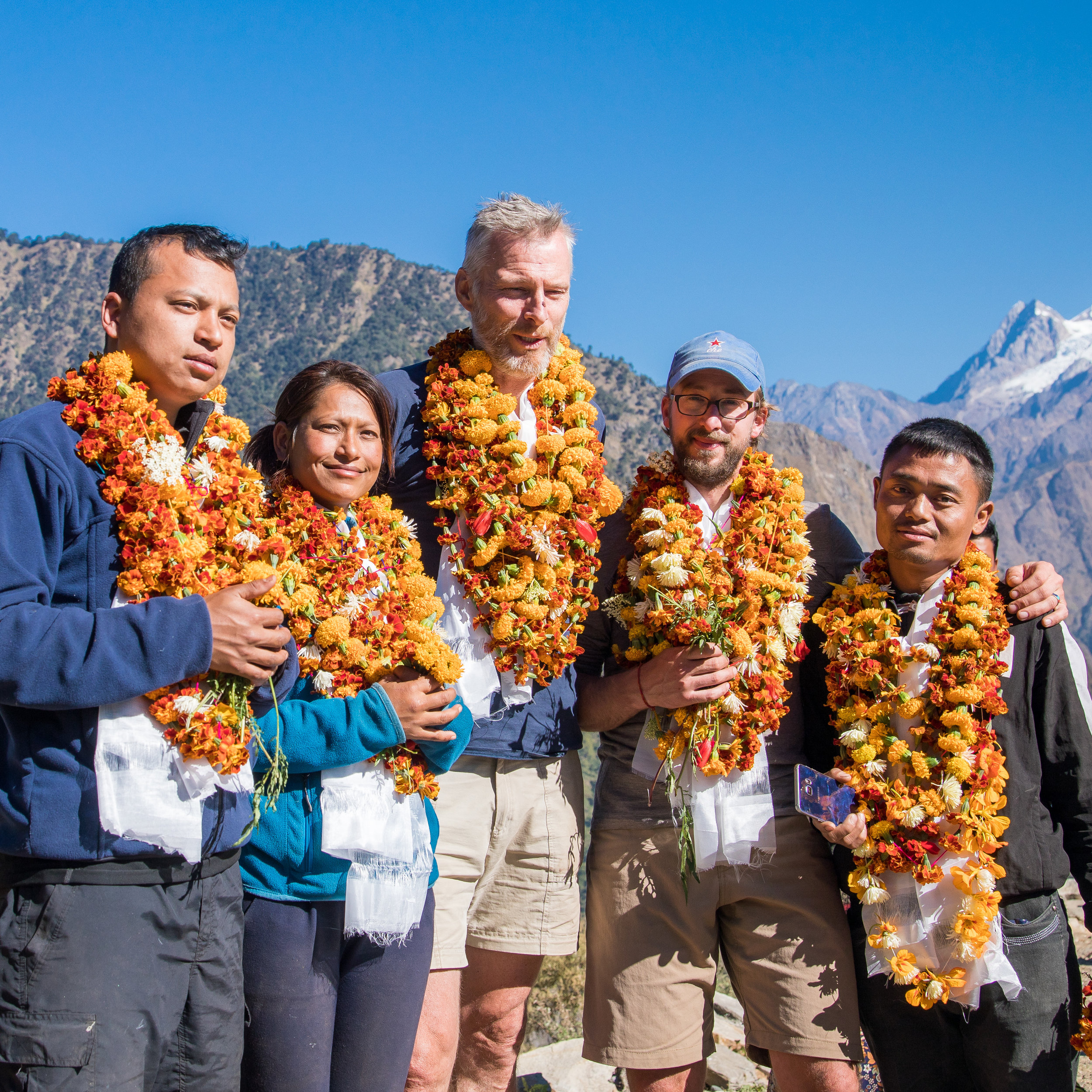
Gorkha district project updates
Alphabet group puzzle for the playgroup children of Uhiya in Gorkha district.
Tuesday November 8th,
We finished another trip. We traveled for 10 days trough Gorkha district and visited remote villages at the border of the Manaslu region. All villages are away from the touristic trails and were really damaged during the 2015 Eathquakes. Our team included Founder Pim Horvers, Member Samjhana Bishankhe and 2 volunteers; Gert Groenewoud and Bhupendra Bishankhe.
Our Goals:
Collaborate with local schools,
Handover school materials,
Establish greenhouses with local schools,
Start waste management awareness by contributing waste bins to school.
Samjhana explaining about our school materials at Korla Besi.
Our Plan:
Day 1: By bus from Kathmandu to Gorkha followed by a second bus from Gorkha to Soti Khola.
Day 2: Walk from Soti Khola to Machhi Khola
Day 3. Walk from Machhi Khola up to Uiya.
Day 4: From there, depending on out projects travel towards Korla, Singla and Laprak.
Within a period of 10 days we have visites 7 schools. Here we discussed their challenges with education, materials and the fact that children that have to quit school because of lack of money and govermental support. We handed over the Micro-Care Nepal package and supported the teachers how to use and educate. There is a long way to go, lots of opportunities for Micro-Care Nepal.
We handed over clothing to mostly Dalit people, 5 big bags full of clothing donated to Micro-Care Nepal by friends from mostly the Netherlands.
And last but not least together with the people from Uiya we finished one green house with a team of Nepali and us. A great job again. We were not able to finish more green houses therefor we handed Some packages containing plastics, seeds and books About vegetables over to teachers from the school and brought other green houses to villages that can build themselves.
Our total list of activities:
Donating school materials at Lapu Besi
Donating school materials at Korla Besi
Donating school materials at Uhiya
Donating 13 waste bins for the school at Uhiya. 3 big baskets and 10 small baskets for the classrooms.
Donating school materials at Dungla
Donating 8 waste bins for the school at Dungla, 1 big basket and 7 small for the classrooms.
Donating school materials at Korla
Donating school materials at Singla
Donating school materials at Laprak
Donating clothing at Uhiya
Teaching together with local teachers to introduce and learn them how to use the school materials provided by Micro-Care Nepal.
Note from volunteer Gert Groenewoud:
Conclusion after 10 days of hard work and fun: we achieved our goals however we had to adjust planning several times which will always be the challenge while working in Nepal. We got lof happy people with smiles on their faces. Happy Dalit, happy children, happy schools. So you can conclude that we again did a good job with a great team.
Group photo at the small primary school of Laprak, Gupsy Phaka.
Again a trip never to forget and always to remember. The days are sometimes long and tough, long hours of walking up and down and again, lots of visits per day. But working with a great team including our 5 porters and meeting lots of Nice and beautiful Nepali people ...looking forward to trek 3 already, however this will only be in 2017.
A great thanks to my New friend Aita, an amazing man with great capacities.
PRESENTING A LAPTOP TO A SCHOOL IN NECHA.
2015/08/11
After breakfast we left Rohit’s wife’s family house. At 7 we were expected to meet at a nearby school which has pupils from the poorest families in Necha. I made a donation to this school when I visited in 2014 and now I was returning to handover a 17 inch laptop that was donated by the family of a good friend in the Netherlands. We downloaded educational videos about nutrition, first aid, hygiene and natural history and the environment on the laptop. We also added an English to Nepali and Nepali to English dictionary.
The school committee and staff organised a ceremony to explain the laptop and demonstrate its use to the community. Rohit and I were given many red tika (red paint marks) on our foreheads and faces and white and yellow scarves, the traditional Nepali way to say thank you. Rohit’s help has been invaluable and without his imagination, enthusiasm and hard work Micro-Care Nepal Foundation would not have been able to achieve all it has.
We got a official letter to say thanks for our support.
After the ceremony our faces were completely covered with red powder; a symbol of gratitude in Nepali culture.
After the ceremony we gave out clothing to those who needed it and took photos of them and group photos with all teachers. We then looked at the old school building which was completely destroyed by the earthquake. It was a sad thing to see but luckily the Himalayan Foundation of Sir Edmund Hillary (who with Tensing Norgay first climbed Mount Everest) had provided two new temporary wooden buildings.
For almost all we had some clothing.
And they all liked it.
What will the future hold for these poor boys? I was glad to help but more needs to be done for them.
Finally we discussed supporting the school by donating rubbish bins and teaching the children not to litter their environment. We made an agreement that the school would buy wooden rubbish containers and that Micro-Care Nepal Foundation would refund the costs after the next field trip, when there is evidence that they are being used.
You can from their expressions how surprised they are.
Rohit after the school ceremony with a child to whom we gave a nice jacket.
Delighted with his new red t-shirt.
Recipients of new clothing. Sadly we didn’t have any clothes to fit the poor boy standing in the middle but we were pleased about the helping the rest of them. More can be done later.
Posing together in front of the old school building. Only the facade is still standing. The next picture shows the view from the other side. Rohit and I are standing in the middle of the back row.
Seeing the collapsed school made me sad. Later the Government of Nepal will provide funding to rebuild this school…At least that's what the community has applied and is hoping for. In the meantime the "Helping Hand Foundation" has built 2 temporary cottages for teaching and one solid building for the school so for the time being the children can continue to receive an education. Micro-Care Nepal Foundation will support the 16 schools in Necha with educational materials and assistance to expand the curriculum to include programmes covering nutrition, hygiene and first-aid.
This is what their school looks like from above after the earthquakes...
Same lady and towel as in the previous photo but both a year older.
Before she posed with her sister.
Rohit handing over a telephone to local man who couldn't afford to buy one. Now he can keep contact with his family and friends in the city or in other remote parts of Nepal.
We gave another phone to an old lady in the same area of Necha.
In the evening we gathered with a few teachers and locals and talked about education and the challenges schools are facing.
In these photos you can see....
How proud people are to pose with their animals.
